
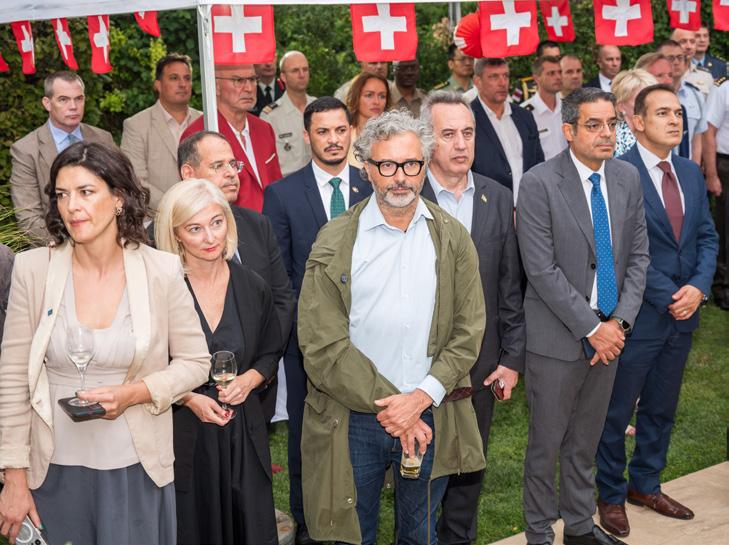



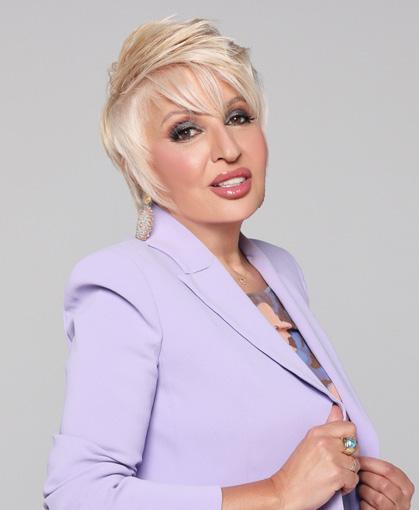
RADIO AS A LIFELONG COMPANION
MAJA RAKOVIC
Naxi Radio
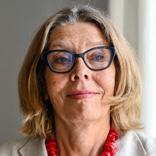
DENMARK
H.E. PERNILLE
DAHLER KARDEL
Danish Ambassador to Serbia
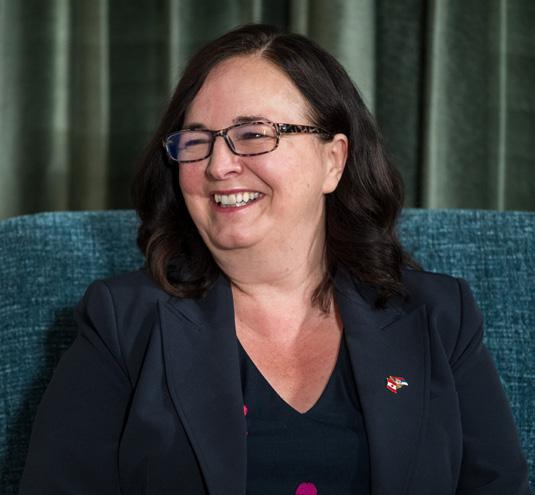
CANADA AND SERBIA — PARTNERS ACROSS DISTANCE
H.E. MICHELLE CAMERON Ambassador of Canada to Serbia

THE CURTAIN CALL OF A BELOVED ERA
THE GABI NOVAK
The Curtain Call of a Beloved Era



BUILDING SERBIA’S DIGITAL BACKBONE MARKO VUČETIĆ Serbian IT Association (SITA)
REAL ESTATE ALEKSANDRA SOFRONIJEVIĆ
Ministry of Construction, Transport and Infrastructure


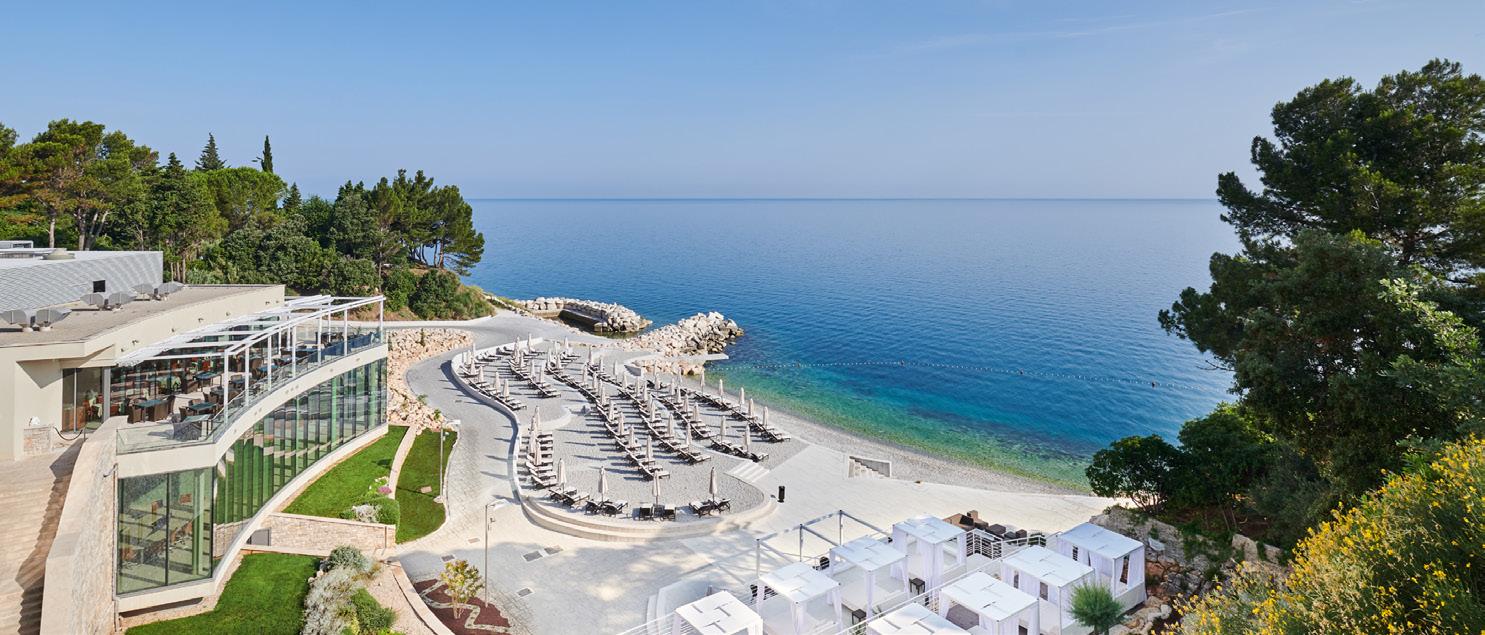

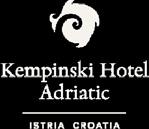

Get to know the true essence of Adriatic comfort, surrounded by olive trees and vineyards overlooking the great blue Adriatic Sea. Visit Kempinski Hotel Adriatic in Istria, the first Croatian 5-star golf & spa resort.
+385 52 707 010 RESERVATION.ADRIATIC@KEMPINSKI.COM KEMPINSKI. COM/ISTRIA

August 2025
FOLLOW US TO STAY UPDATED
FOLLOW US TO STAY UPDATED
FREE COPY
subscription Only
Director ROBERT ČOBAN robert.coban@color.rs
Editor in Chief
DRAGAN NIKOLIĆ dragan.nikolic@color.rs
Journalists MIJAT KONTIĆ ŽIKICA MILOŠEVIĆ
Journalists MIJAT KONTIĆ ŽIKICA MILOŠEVIĆ
Advertising DRAGAN NIKOLIĆ dragan.nikolic@color.rs
Advertising DRAGAN NIKOLIĆ dragan.nikolic@color.rs
DRAGAN VUČEVIĆ dragan.vucevic@color.rs marketing@color.rs
DRAGAN VUČEVIĆ dragan.vucevic@color.rs marketing@color.rs
Photos GORAN ZLATKOVIĆ NEBOJŠA BABIĆ MILOŠ NADAŽDIN STEFAN ĐAKOVIĆ KHARIM NSENGIYUMVA JAKOV SIMOVIĆ
Photos GORAN ZLATKOVIĆ NEBOJŠA BABIĆ MARKO ĐOKOVIĆ SHUTTERSTOCK
SHUTTERSTOCK
Translation COLOR MEDIA EVENTS
Translation COLOR MEDIA EVENTS

6
AMBASSADOR’S INTERVIEW CANADA AND SERBIA — PARTNERS ACROSS DISTANCE
H.E. MICHELLE CAMERON
Ambassador of Canada to Serbia
20
FEATURED INTERVIEW
HALF A CENTURY OF UNHCR IN SERBIA SUPPORTING THOSE SEEKING SAFETY
SOUFIANE ADJALI
UNHCR Representative in Serbia
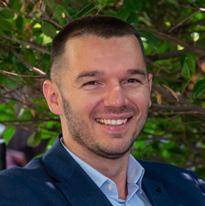

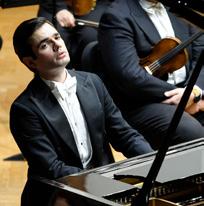
34
INTERVIEW
BUILDING SERBIA’S DIGITAL BACKBONE MARKO VUČETIĆ
Director of the Serbian IT Association (SITA)
44
MEDIA INTERVIEW
RADIO AS A LIFELONG COMPANION
MAJA RAKOVIC
Owner, Editor-in-Chief of Naxi Radio
46
CULTURAL INTERVIEW POETRY IN NOTES GÉRARD GASPARIAN Virtuoso
Prepress VLADIMIR DUDAŠ C e n t r o b i r o
Prepress VLADIMIR DUDAŠ C e n t r o b i r o
Contributors ROBERT ČOBAN ZLATKO CRNOGORAC JOVANKA VIŠEKRUNA JANKOVIĆ
Contributors ROBERT ČOBAN DUŠKA JOVANIĆ LJILJANA VUJIĆ VIKTOR LAZIĆ


Print COLOR PRINT Novi sad
BIROGRAF COMP D.O.O. Zemun, Atanasija Pulje 22
Distribution PRETPLATA D.O.O. office@pretplata.rs
AMBASSADOR’S INTERVIEW A STRONGER EUROPE IN A TIME OF CHANGE
Distribution PRETPLATA D.O.O. office@pretplata.rs +381 11 314 99 21
COLOR MEDIA EVENTS
Published by: Color Media Events d.o.o. 21000 Novi Sad, Serbia Temerinska 102
VAT: 113769690 Reg. No: 21922978 Belgrade Office: Vlajkovićeva 6 11000 Belgrade, Serbia Phone: + 381 63 432 392
CIP – Katalogizacija u publikaciji Biblioteka Matice Srpske, Novi Sad 33
Diplomacy & Commerce / glavni i odgovorni urednik: Dragan Nikolić, 2016, (mart)-.Novi Sad: Color Media Events, 2016 - , -33cm Mesečno ISSN 2466-3808 = Diplomacy & Commerce COBISS.SR-ID 303269895
Copyright 2024 © Color Media Events
H.E. PERNILLE DAHLER KARDEL
Danish Ambassador to Serbia 28
CORPORATE INTERVIEW A HUB FOR INNOVATION AND GREEN TRANSITION VELJKO TODOROVIĆ
Country Director of Grundfos Serbia 30
CULTURE DENMARK THROUGH MUSIC AND FAIRYTALES TOKE MØLDRUP
Cellist
REAL ESTATE 50 IN TALKS BUILDING SERBIA’S FUTURE THROUGH STRATEGIC INFRASTRUCTURE ALEKSANDRA SOFRONIJEVIĆ
Ministry of Construction, Transport and Infrastructure
REAL ESTATE REPORT BELGRADE’S RESIDENTIAL MARKET REPORT + Highlights Key Construction Sites and New Trends


The sentence in the headline, which I often quote, was written several years ago in her column in Nedeljnik by journalist Ljiljana Smajlović. It refers to the fact that in July and August, when other European nations go on summer holidays and take a break from heavy topics, interethnic tensions in our region flare up once again each year. This has been the case for the past 30 years – more precisely, since the summer of 1995, when in July in Srebrenica there occurred, according to some, genocide, and according to others, “only a great crime.”
Some of those who dispute that it was genocide write graffiti and sing at football matches “Knife, wire, Srebrenica” – words that certainly do not evoke any culinary technique. On the other side, in Bosniak media, events preceding Srebrenica are almost never mentioned – namely, the massacres of Serbian civilians in numerous villages surrounding this eastern Bosnian enclave. When you bring this up, they will (rightly) say – yes, but that was in response to the crimes committed in the spring and summer of 1992 in Eastern Bosnia by Serbian paramilitary formations from Serbia and by local Serbs, such as the Lukić brothers from Višegrad, responsible for some of the most monstrous crimes of that war.
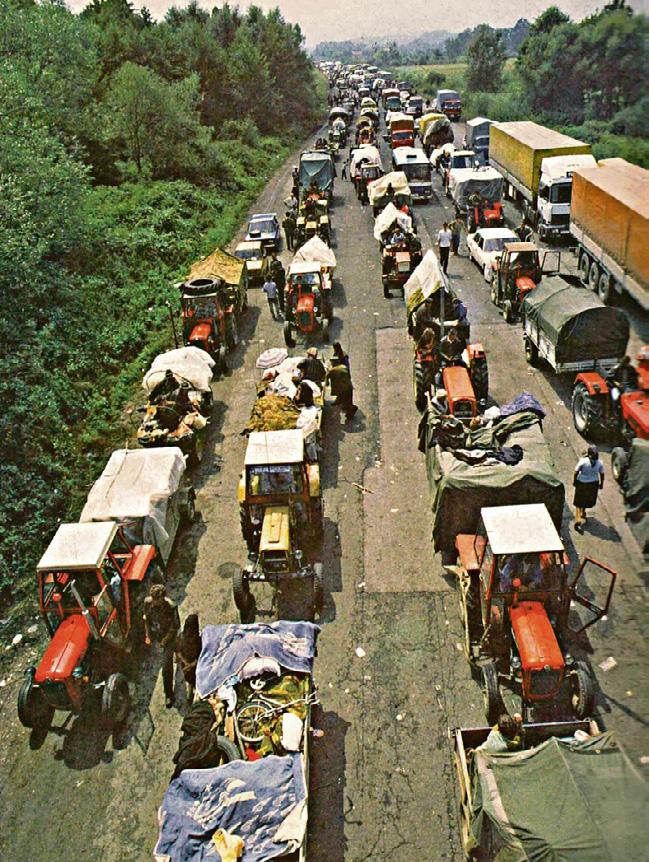
These include the “living bonfire” in the Višegrad neighbourhood of Bikavac, when a house was set on fire after civilians–mostly the elderly, women, and children–had been driven inside, or the abduction of passengers from a train in Štrpci.
Serbs, in turn, will tell you that these were “preventive actions” to avoid a repetition of the atrocities committed during the NDH period in World War II. And so it goes on, endlessly.
Every summer, as the anniversary of the events in Srebrenica approaches in July 1995, inflammatory statements begin to fly between Serbian and Bosniak politicians in Bosnia and Herzegovina, as well as those in Serbia.
Three weeks later comes the anniversary of Operation “Storm,” which Croats describe as a “brilliant military action” that liberated the occupied part of the Republic of Croatia, while Serbs call it “the largest ethnic cleansing in Europe since World War II.”
This year, Croats celebrated with a military parade in Zagreb, festivities in Knin, and numerous neoNazi incidents at concerts by singer Marko Perković Thompson and at football matches in the days before and after the anniversary. Serbs mourned their victims at the commemoration of the 30th anniversary of “Storm” in Sremski Karlovci, attended by the entire state and church leadership.
If you were to survey people on the streets of Zagreb about what happened in the days following “Storm,” few would be able to tell you that hundreds of civilians, mostly the elderly, were killed on the thresholds of their homes – precisely those who stayed behind to await the Croatian army, believing they were innocent and nothing could happen to them.
Conversely, if you asked people in Belgrade what happened from the spring of 1991 to the summer of 1995, not many would “recall” that all Croats were expelled from the entire territory of what was then the Republic of Serbian Krajina; that many were killed, forced to march through minefields; that Vukovar was razed to the ground and Dubrovnik besieged and shelled; that over 1,000 Roman Catholic religious sites were destroyed.
Judging by this year’s “jubilee” celebrations, commemorations, and media coverage of them, in the years ahead, all three sides will continue to live in “parallel realities,” believing only in “their” truths and mourning only their own victims. And if we ever reconcile, it is almost certain that it will not be in the summer.
Robert Čoban
shared history, economic cooperation, and people-to-people ties are shaping a modern bilateral relationship

Ambassador of Canada to Serbia
In an exclusive conversation for The Diplomat on Euronews Serbia, produced in cooperation with Diplomacy&Commerce magazine, H.E. Michelle Cameron, Ambassador of Canada to Serbia, speaks with Mijat Kontić about bilateral relations, economic cooperation, and the shared values that connect the two countries.
SERBIA AND CANADA HAVE MAINTAINED DIPLOMATIC RELATIONS FOR 84 YEARS, DESPITE HISTORIC CHALLENGES.
The question I’d like to start this interview with relates to your diplomatic career. You’ve received multiple awards, including the Minister’s Award for Consular Excellence
and the Queen Elizabeth II Diamond Jubilee Medal. You’ve also served as the Canadian Ambassador to Lebanon with responsibilities to Syria. How have all of these experiences
affected your approach to diplomacy here in Serbia?
Thank you for recognising the awards I’ve received, particularly when I was promoted to Ambassador. In the Canadian system, no award is given to an individual alone. Each one reflects the work of teams, partnerships, and shared goals. It shows what Canada values.
When I was promoted to Ambassador in Lebanon, it recognised the ability to enter any
circumstance, bring people together around an issue, and work with a strong team—embassy staff, the business community, or local government—to help solve problems. My career includes awards and promotions, but above all it reflects Canada’s commitment to partnerships and shared goals. That is what I bring with me to Serbia.
This year marks the 84th year of bilateral relations between Canada and Serbia. How do you see this relationship, or should I say, how do you see its evolution over the last decade?
In Serbia, I’ve learned that answers often begin with history. Even before arriving, I was pleased to learn about the long history of Serbian migration to Canada. It began in the 1850s, with a large wave in the early 1900s to Western Canada. Serbian Canadians helped build my country, contributing to infrastructure, forestry, and mining.
During World War I, Canadian soldiers returned from Europe with stories of Serbian resistance and resilience. It was legendary. Young Canadians, aged 19 to 24, came back with admiration for Serbia. I heard these stories long before I ever thought of coming here.
It sounds like such an unlikely alliance. To come back from war with a positive story is rare; perhaps that is why it became legendary.
Canadians also sent medical missions to Serbia during the war to help with the devastation of conflict and disease. In parts of Serbia, that legacy is still remembered.
When we talk about diplomatic relations, we must also look at people-to-people connections. That mutual understanding and respect laid a solid foundation.
This was the basis for its evolution.
Over the past 84 years, Serbia and Canada have not always seen eye to eye. There have been historic challenges, yet diplomatic relations were maintained—something not all countries achieve. Around the world, disagreements often lead to tension or breaks in relations. That did not happen between Serbia and Canada.
Before considering a posting to Serbia, I asked myself why. What
is unique here? I saw three things. First, both Canada and Serbia believe in the power of dialogue and alliances, even with those who do not share their worldview. They recognise that one issue should not end a relationship, since future alignment may be needed.
Second, this is the essence of diplomacy. Especially in today’s global context, imagine if countries only spoke with those they agreed with. Canada and Serbia understand this and have kept relations steady.
Third, there is a strong peopleto-people connection. At least 100,000 Serbian-Canadians live in Canada. Everywhere I go in Serbia, I meet another Serbian-Canadian. It creates a sense of home.
What are the goals you hope to achieve during your tenure here in Belgrade?
As an ambassador, you want the best for the country you’re serving in. You wouldn’t be here otherwise. My goal is to assist Serbia in any way Canada can, whether by
CANADIAN DOLLARS IN 2024.
deepening the economy or sharing Canadian expertise in areas where Serbia needs support.
If Serbia wants or needs Canada’s assistance, my goal is to facilitate this in a way that respects Serbia’s needs and priorities. I also want to deepen our bilateral relationship. Even though I feel at home here and we share many citizens, I was expecting some areas of collaboration to be further along.
I want to encourage deeper connections—government to government, people to people, business to business, academia to academia, and everything in between, including education and culture. This relationship deserves it.
Usually, countries have deep ties with their neighbours. Canada is geographically far from Serbia, but not in spirit or cultural connection. A third goal is to deepen our economic relationship.
Understood. Now, Serbia has a unique geopolitical position, not only in the Balkans but also to Europe. How does Canada support Serbia’s aspirations toward joining the EU?
We see Serbia for what it is: the most consequential political, economic, and security actor in this region. Anything Serbia does reverberates with its neighbours

and across the broader region. Serbia is extremely important, and we recognise that.
Serbia has expressed its desire to join the EU. I’ve seen government statements and opinion polls suggesting that roughly half the population supports EU membership. From Canada’s perspective, we support Serbia’s aspirations.
We believe the EU offers security, economic opportunity, and educational and cultural growth. I’ve travelled across Europe throughout my career and seen the benefits experienced by newer members. The difference in their prosperity, their ability to enter a multilateral forum and bring people around their issue, is unquestionable. While Canada believes that is the best path for Serbia, and we want to support Serbia in that aspiration, as long as the Serbian people and government want it, we want to help. As I mentioned earlier, I want the best for this country.
I want to offer Serbia assistance in rule of law legislation, in how we created freedom of media, and in areas where Canada may be ahead of the curve. If Canada can lend expertise, give advice, and recognise that Serbia is a different environment where advice may be adapted, I want to be part of that. We have a small grants program that civil society and others can apply for.
Through that, we have supported impactful projects aligned with Serbia’s goals, including those of its people and government, consistent with its EU path. The work required for EU accession is valuable in itself.
You also mentioned security for Canada. NATO is the cornerstone of security. How do you view the stance of the Serbian government, its position towards NATO right now?
Canada was a founding member of NATO in 1949. Imagine coming out of the First World War, then the Second World War, and only then fully establishing our own passports. We had been a country since 1867, part of the British Empire, and finally stood more independently.
As a country with more freedom than before, NATO—with 32 members today—became a cornerstone of our security. We believe global issues require global solutions and global alliances. Looking at Serbia, of course, its history with NATO is different.

OVER 100,000 SERBIAN-CANADIANS FORM A STRONG PEOPLE-TO-PEOPLE LINK BETWEEN THE TWO COUNTRIES.
From a Canadian perspective, our experience has been positive, but we recognise that Serbia’s history is not the same. A recent public opinion poll showed that 80% of Serbians are not willing to join NATO or are opposed to membership. That is completely understandable given the different history.
What I encourage people to consider is that while history is extremely important and must not be forgotten, we also need to look at the NATO of today, the Serbia of today, and the global challenges we face. From my perspective, NATO remains right for Canada.
I appreciate that Serbia and the Ministry of Defence have collaborated with NATO on the Partnership for Peace. There are joint training exercises and other forms of cooperation through this framework. What I see in Serbia is openness, perhaps best described as cautious pragmatism.
one should have their lifespan cut short because of emissions. We also believe we must protect the environment for future generations.
It is in our DNA, in our hearts, and naturally extends into our foreign policy. At present, 80% of Canada’s electricity comes from sources that do not produce emissions.
You also mentioned trade. And this is where Canada and Serbia have had a positive trend lately. In the last decade, this is the first time that trade has surpassed 100 million Canadian dollars. What are the factors that contributed to this? And how can both countries build on this success?
Before I came here, I looked at the statistics. We have a central government department called Statistics Canada, and we always try to make data-driven decisions. At that time we were on track, and we have since surpassed 100 million. We are now at 160 million.
I mean, that’s a big difference. At the end of 2024, that was where we stood. As I have said before, trade between neighbours is naturally high. Shared history and interconnected economies make neighbours the number one trading partners for most countries worldwide.
If the Serbian people and government, making their own decision without outside influence or disinformation, decide that NATO membership is right for them, I will be here to assist. If instead they choose collaboration, interoperability when needed, or another way forward through the Partnership for Peace or similar initiatives, we will also support them in that ambition.
Now, an important factor for the future is climate change. Canada has committed to net-zero emissions by 2050. How does this shape Canada’s foreign policies, especially in international negotiations regarding climate?
What I love about Canadian foreign policy is that it reflects our values. We have been consistent throughout the years, regardless of changes in government or domestic circumstances.
We believe that people have a right to breathe clean air. No
When I saw the recent uptick, I looked at individual cases of success, such as increases in trade or foreign direct investment. Each of these examples, if I am not mistaken, came down to mutual recognition of what Canadian and Serbian businesses bring to the table—something I first noticed in the stories from World War I.
Two examples underline this. The Aviation Academy wanted world-class flight simulators to meet a local challenge: Air Serbia’s rapid growth and the urgent need for pilots. A safe, cost-effective way to train them was essential. A Canadian company, CAE Incorporated, world-renowned for its simulators, entered into cooperation. Now a Canadian flight simulator in Serbia is training Serbian pilots who can fly anywhere, hopefully including direct routes for Air Serbia.
Another example is Pratt & Whitney Canada, which produces turbo engines for aircraft. They partnered with Prince Aviation in Serbia because of the expertise of Serbian mechanics, engineers,
and professionals. Together they opened the only authorised service centre of its kind in Europe for Pratt & Whitney engines after rental use—servicing, refurbishing, and ensuring quality. The Canadian company recognised Serbia’s expertise, and Serbia recognised the quality of Pratt & Whitney engines. Together, they created a crucial part of the Air Serbia programme.
Do you maybe even know how many Canadian-owned businesses are currently operating in Serbia?
I wish I knew the exact number, but in fact it is better that I do not. In countries where companies face difficulties entering the market—understanding the rules, making connections at the people-to-people or business-tobusiness level—we tend to hear more about them. Canadian companies do not usually face those problems. They come, set up operations, hire lawyers to navigate requirements, and it works well. They can hire people.
In the past six months, I have travelled to every corner of Serbia. The few I missed when visiting as a tourist 10 years ago I have now seen, and I keep encountering excellent Canadian companies. In Belgrade, there is Tenstorrent, a company developing AI hardware. They have an R&D centre here, employ engineers and other professionals, and maintain facilities both in Canada and in Belgrade. Blue Cat,

CANADIAN COMPANIES IN SERBIA THRIVE THANKS TO AN EDUCATED WORKFORCE AND A SUPPORTIVE BUSINESS ENVIRONMENT.
a software engineering company, employs up to 200 people.
In Niš, AMD’s research and development arm, based in Toronto,
has an R&D centre in the Science and Technology Park, in addition to one in Belgrade. This is worldclass manufacturing. Magna

International, a leader in EV parts research and development, also has facilities here.
I would also like to mention the Canadian companies operating in Serbia such as: Dundee Precious Metal, Boron One Balkan Gold, Bel Textron, Apatinska Pivara (A Molson Coors Beverage Company) and McCain.
Canadian mining companies are active as well. Mining is a sensitive topic in Serbia, and I fully respect Serbia’s right to decide its own path. If Serbia chooses to pursue mining, Canadian companies have already invested around 300 million euros. They respect environmental legislation here, just as they must respect Canadian environmental and employment laws at home. This makes them strong partners.
These Canadian companies succeed not necessarily because of embassy involvement—though we are here to support them—but because they find a business environment similar to Canada. They encounter an educated, innovative workforce, which is essential. The Serbian government has also created conditions that allow foreign direct investment and foreign companies to come. As a result, Canadian companies are thriving. Every time I visit one, they are expanding again. The main limiting factor is simply finding enough workforce.
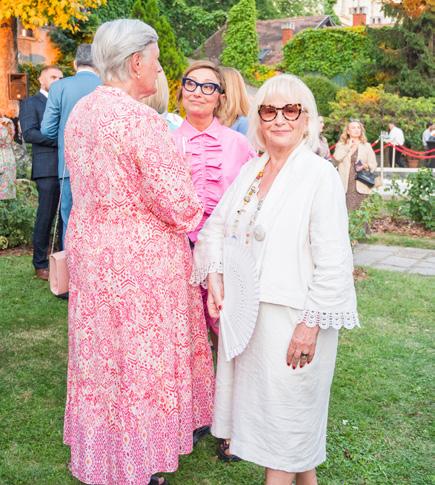
“HOW ABOUT AN EXCLUSIVE INTERVIEW WITH THE FIRST IRISH AMBASSADOR TO SERBIA? BUT, DO NOT TELL ANYONE”
Ann Pešić, Honorary Consul of Ireland, and Mira Adana Polak, journalist, Bastille Day Reception, French Embassy, July 14th

Ann Lugon Moulin, Ambassador of Switzerland, and Soufiane Adjali, UNHCR Representative in the Republic of Serbia, Swiss National Day Reception, July 30th

“TOUGH TIMES CREATE STRONG (WO)MEN, STRONG (WO)MEN CREATE GOOD TIMES...”
Violeta Jovanović, NALED, and Avivit Bar-Ilan, Ambassador of Israel, at the reception celebrating the National Day of the Kingdom of Belgium, July 17th

“HEART OF DARKNESS” IS NOW A DISTANT PAST
Ambassadors of African countries at the reception celebrating the National Day of the Kingdom of Belgium, July 17th

“DON’T WORRY, WE WILL NOT SING ‘LE ÇA IRA’”
Fati Aksal, Chargé d’Affaires of the French Embassy, with Danica and Filip Karađorđević, Bastille Day Reception, French Embassy, July 14th

“OUR TV-BASTILLE IS STILL STANDING”
Writer and former SPO leader Vuk Drašković, Bastille Day Reception, French Embassy, July 14th
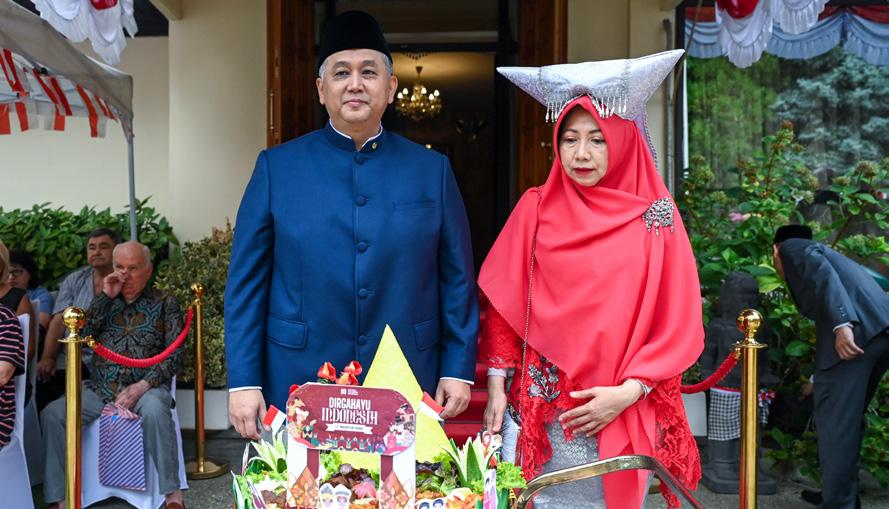
PRESIDENT
Indonesian Ambassador to the Republic of Serbia, Andreano Erwin, presented his letter of credence to the President of Serbia, Aleksandar Vucic, at the Presidential Palace
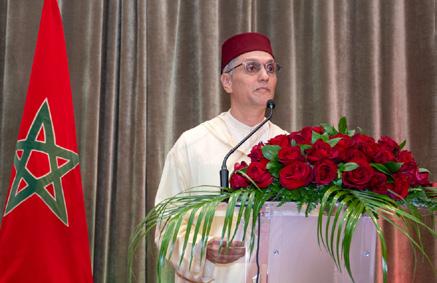
The mandate of Morocco’s outgoing Ambassador to Serbia, H.E. Mohammed Amine Belhaj, came to an end earlier this year. During his tenure, Ambassador Belhaj made a significant contribution to strengthening the friendly relations between Morocco and Serbia and worked wholeheartedly to represent Morocco’s official position in support of Serbia’s territorial integrity.
Highly respected in Belgrade’s diplomatic and cultural circles, Ambassador Belhaj also built strong personal friendships across Serbian society. In cooperation with Diplomacy&Commerce magazine, he participated in the production of a special edition Focus in Morocco, dedicated to presenting Morocco’s diverse tourism offer to the Serbian public. Under his mandate, the Embassy of Morocco organised numerous cultural events, bringing Moroccan artists, traditions, and creativity closer to Serbian audiences.
Morocco is now welcoming its new Ambassador to Belgrade – H.E. Omar Amghar, who will assume his post with a clear commitment to further developing bilateral relations and expanding cooperation in all areas.
in Belgrade on Monday, one week after arriving in Serbia. The handover of the letter of credence officially marked the beginning of Ambassador Erwin’s term of office in Serbia.

BRAZIL APPOINTS NEW AMBASSADOR TO SERBIA
Brazil’s Ambassador to Serbia, H.E. José Mauro Couto, is set to depart Belgrade at the end of this month upon completing his diplomatic mandate. During his tenure, Ambassador Couto was a prominent figure in Serbia’s cultural and diplomatic circles—frequently appearing as a guest at events organised by Diplomacy&Commerce magazine—and played a pivotal role in cultivating both cultural bonds and bilateral cooperation.
Among his recent diplomatic initiatives is a high-level engagement with the Serbian Minister of Agriculture, Forestry and Water Management, Dr. Dragan Glamočić. The two discussed enhancing bilateral collaboration in agriculture, with an emphasis on sharing technology, strengthening trade links, and advancing cooperation in sectors such as livestock, seed production, and agricultural renewables.
Brazil’s new Ambassador to Belgrade is expected to arrive in mid-September, ensuring continuity in the deepening of Brazil–Serbia relations across cultural, economic, and agricultural domains.
VUČIĆ RECEIVES CREDENTIALS OF EIGHT NON-RESIDENT AMBASSADORS IN BELGRADE
Serbian President Aleksandar Vučić today received the letters of credence from eight ambassadors accredited to Serbia on a non-residential basis. He wished them a successful diplomatic mandate and expressed confidence that political dialogue and economic cooperation between Serbia and their respective countries will continue to develop to mutual benefit.
The credentials were presented by Ambassador of Burkina Faso Maimunata Autare, Ambassador of Uzbekistan Oybek Shahavdinov, Ambassador of Turkmenistan Esen Aydogdyev Muhamedovich, Ambassador of Ecuador Cintia Mari Mayer Zavala, Ambassador of Georgia Levan Beridze, Ambassador of Bangladesh Rokabul Haque, Ambassador of the Dominican Republic Anhela Mariana Villota Mella, and Ambassador of the Philippines Maria Elena Palo Algabre.
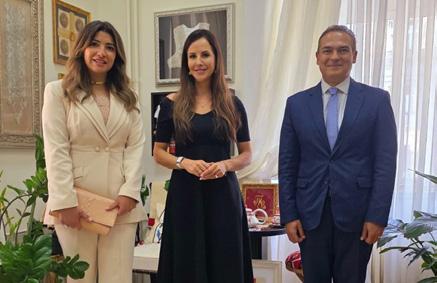
The Ambassador of the Arab Republic of Egypt in Belgrade, H.E. Mr. Basel Salah, is concluding his four-year term in the Republic of Serbia. On this occasion, the ambassadors of the Arab Group in Belgrade paid tribute to him, emphasising his contribution to strengthening cooperation between Egypt and Serbia.
Together with his wife, Advisor Mahe Barake, Ambassador Salah met with the First Lady of Serbia, Tamara Vučić. The meeting focused on the development of bilateral relations, with the assessment that during his mandate, cooperation between the two countries reached its highest level since the breakup of the former Yugoslavia. It was underlined that relations between Belgrade and Cairo are today characterised by an active political dialogue, based on mutual understanding and respect.
First Lady Tamara Vučić thanked the Ambassador for his work and wished him continued professional success as well as personal and family happiness.

An Evening of Friendship, shared Values, and Cooperation with serbia
The Swiss National Day was marked in the festive setting of the Swiss Residence in Belgrade, in the presence of representatives of state institutions, the diplomatic corps, the business sector, civil society, and the Swiss community in Serbia.
More than 600 guests gathered to celebrate, together with their hosts, the historical legacy and contemporary values that
OVER 600 GUESTS GATHERED AT THE SWISS RESIDENCE TO CELEBRATE THE COUNTRY’S NATIONAL DAY WITH TRADITIONAL DELICACIES AND LIVE MUSIC.
Switzerland upholds – direct democracy, neutrality, social cohesion, and international cooperation.
Throughout the evening, accompanied by traditional Swiss delicacies, including Raclette, and live music performed by the duo Sira and Srđan, guests enjoyed an atmosphere of dialogue and mutual respect that defines the relationship between Switzerland and Serbia.
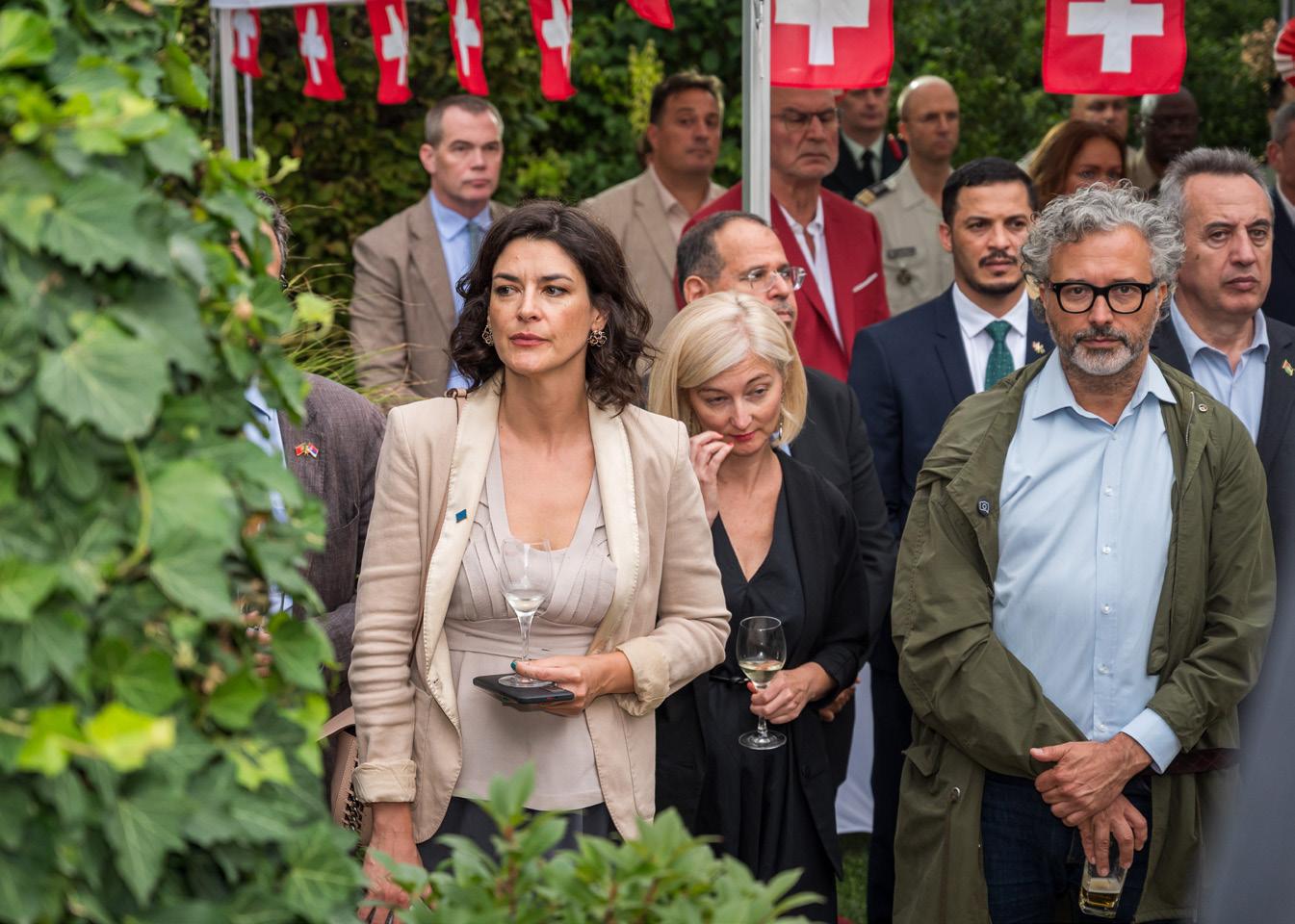

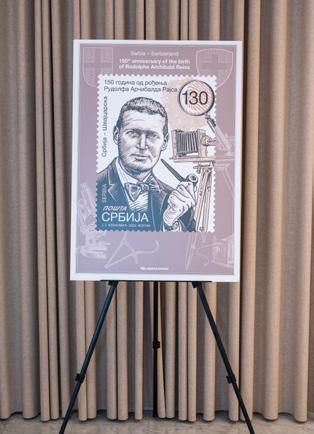
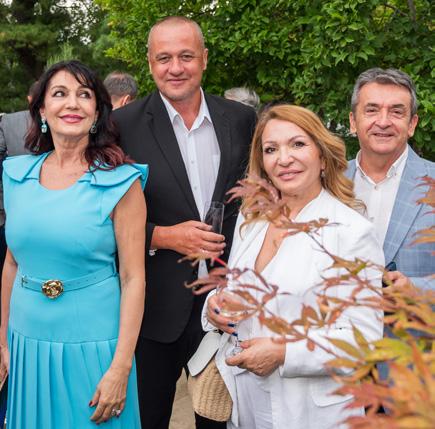
In her address, H.E. Anne Lugon-Moulin, Ambassador of Switzerland to Serbia, emphasised the significance of the moment in which the celebration took place:
“It has been a great honour for me, as the Ambassador of Switzerland to Serbia, to mark Swiss National Day at a time when the relations between our countries are growing deeper and stronger.
We believe in Serbia – in its democratic path, in the capabilities of its people, and in its potential to become an important part of the European community. Our relationship is not only reflected in figures – such as over 600
Swiss companies operating in Serbia – but also in the trust, mutual respect, and friendship we have been building for decades.
Switzerland is present not only through financial and technical support but also through the values it promotes: direct democracy, a culture of dialogue, social cohesion, and a firm commitment to international law.
This celebration was an opportunity to express our gratitude to all the partners who contribute to this partnership and to jointly reaffirm our commitment to a shared future – in Serbia, in Switzerland, and across Europe.”
The celebration was supported by 26 Swiss companies operating in Serbia and was organised following the Swiss values of order, openness, and inclusion.

ALEKSANDAR GORAČINOV
Director of SME HUB
Aleksandar Goračinov, Director of the Swiss-Serbian SME HUB, talks about how this public-private partnership combines Swiss development principles and local market insight to help small and medium-sized enterprises grow sustainably.
SME HUB is a public-private partnership that advances domestic companies through Swiss development support. What are the key results after two years of the initiative? We have witnessed that Serbian companies have the capacity to improve and position themselves as competitive suppliers, as well as to develop into long-term partners. This is through the system we have carefully set up within SME HUB to support that transformation. More than 24 small and medium-sized enterprises have gone through a transformation process worth a total of 1.6 million Swiss francs. Some have already been integrated into the supply chains of large companies, while others are in the final stages of reaching the necessary standards. What they all share is the capacity for growth and the ability to implement change. Our goal was not simply to distribute non-repayable financial resources, but to establish a system in which development capital operates under real market conditions. SME HUB is the intersection of development and investment – a place where development funds, knowledge, and trust become tools for long-term change. This formula – carefully managed and balanced between donor principles and local realities – is precisely what sets us apart.
How do you specifically provide support to small and medium-sized enterprises? What I always emphasise is that we do not offer one-off support, but lead an entire process. We designed SME HUB to be a systemic solution that works on the ground. We combine financial assistance with the expertise of an
A s wiss- serbian model helping small businesses join big value chains
entire team of professionals and consultants, tailored to each company’s specific needs, guiding them through changes that increase their competitiveness. Through carefully selected criteria and clearly defined strategies, we enable companies to identify their development priorities, strengthen their organisation, and lay the foundations for sustainable growth. In that sense, SME HUB is a system that breathes alongside companies, with all actors involved in the broader development ecosystem.
What makes the SME HUB systemically important and recognisable in the business environment?
I like to emphasise that SME HUB has been set up as a systemic platform, not as a classic project. Why do I stress this? Our model links the principles of Swiss development capital with the sensibilities of the domestic economy, ensuring that capital and the market do not collide but mutually reinforce each other. We operate at the intersection of small and medium-sized businesses and large companies: on one side are firms that want to grow, on the other are large systems looking for reliable partners, and we stand in between, as a facilitator designing tailored, measurable actions integrated into real business flows. This is why we are recognised as a connecting point: companies do not just receive grants, but a system and the support of consultants who enable them to grow sustainably and become part of larger market structures. This strategic framework was developed together with our Swiss partners, with full confidence in our capacity to manage both capital and change.
How ready are small and medium-sized enterprises to work with large companies and adopt the standards such cooperation requires?
The belief that companies are ready to work with large corporations often proves true, but only when there is a clear vision, plan, and strategy guiding them through that transition. SME HUB does not operate as an external corrective tool to “fix” mistakes, but as a development partner. We help companies define clear internal standards, improve quality control, organise processes, and position themselves as part of a wider value chain. Such a transformation does not happen overnight. It requires a willingness to change one’s mindset, to view the organisation as a system, and to base operations on long-term foundations. And this is where SME HUB proves to be a valid model, because we connect development capital with the real needs of companies and demonstrate how systemic intervention can generate measurable and sustainable change.
What is Switzerland’s contribution to this initiative, and how important is such a partner to you?
Support from the Swiss government, through the Swiss Agency for Development and Cooperation, to the domestic economy is not only financial but also strategic. Through SME HUB, which was created as a result of a public-private partnership between the Swiss government and the domestic company ICT HUB, a methodology has been shaped, rooted in analytics, quality, and clear expectations. Such an approach motivates us to continually improve the model and remain committed to principles that deliver results. Thanks to this partnership, at SME HUB, we have built a system that operates not on assumptions, but on data and real-world experience. For us, this means credibility, but also the responsibility to show that change is not only possible, but achievable when there is trust and commitment to the goal.

08 AUGUST 2025

The Government of the Democratic Republic of the Congo holds an annual ceremony on 2 August to honour the victims of the genocide that has been taking place on its territory for more than three decades, carried out by the Rwandan army and its allies, in particular the armed groups M23 and AFC.
This genocide of immense proportions has claimed the lives of more than 12 million Congolese men and women, amid the near-total indifference of the international community.

14 AUGUST 2025
On this occasion, the Embassy of the Democratic Republic of the Congo in Belgrade organised a commemorative ceremony today, 8 August 2025, from 12:00 to 14:00, at the Museum of African Art in Belgrade. The event was open to all who believe in peace, justice and truth.
This gathering of remembrance and solidarity was an opportunity to honour the victims, express compassion for the affected families, and reaffirm the shared commitment to peace, human dignity, and the pursuit of justice so that such crimes do not go unpunished.
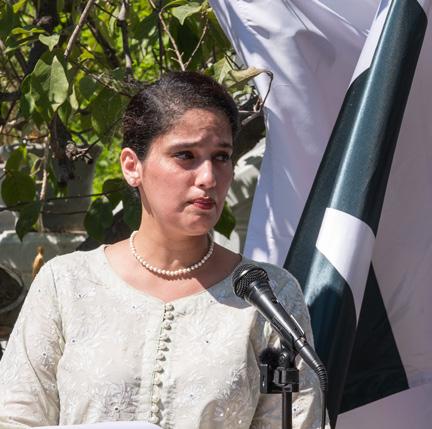
The Embassy of Pakistan in Serbia marked the occasion of Pakistan’s 78th Independence Day and Marka-e-Haq with a solemn flag hoisting ceremony, attended by members of the Pakistani community residing in Serbia.
The ceremony commenced with the hoisting of the national flag, accompanied by the uplifting notes of the National
Anthem. Messages from the country’s leadership were read, honouring the vision, sacrifices, and unwavering resolve of the founding fathers in securing Pakistan’s independence. In the context of Marka-e-Haq and Operation Bunyan-un-Marsoos. It was reaffirmed that while Pakistan advocates peace, it remains steadfast in the face of external pressures.’’



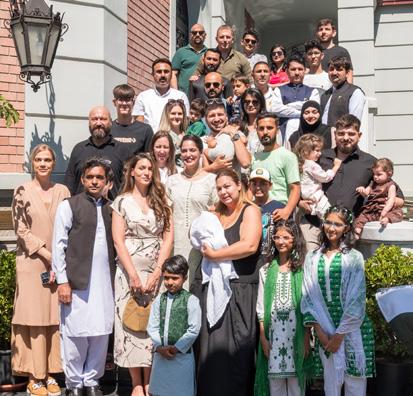




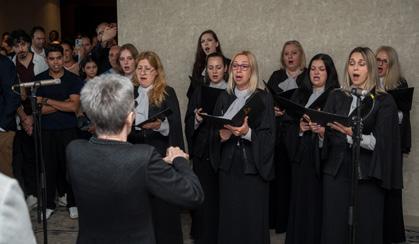

In the elegant setting of the Hyatt Regency Hotel in Belgrade, the Embassy of the Kingdom of Morocco hosted a reception on Wednesday, 30 July 2025, to mark the 26th anniversary of the accession of His Majesty King Mohammed VI to the throne.
The event gathered numerous dignitaries, including representatives of the Serbian government, members of the diplomatic corps, businesspeople, academics, and friends of Morocco.
Speaking on behalf of the Embassy, Mrs. Aicha Sinaceur, Chargé d’affaires of the Embassy of the Kingdom of Morocco, addressed the guests, emphasising the symbolic and historical importance of the occasion. “This is a moment to celebrate the profound bond between the Moroccan people and the Alawite Throne, and to pay tribute to His Majesty’s visionary leadership and unwavering commitment to progress, unity, and prosperity,” she said.
Mrs. Sinaceur highlighted Morocco’s remarkable transformation over the past two decades, citing achievements in political reform, diplomacy, infrastructure, innovation, and economic development. She noted Morocco’s growing role as a reliable partner on the regional and global stage, committed to promoting peace, dialogue, and cooperation.
“Through strategic initiatives such as the Atlantic Initiative and major investments in renewable energy, logistics, and human capital, Morocco has emerged as a beacon of stability and a key investment destination,” she said, noting that in the first quarter of 2025 alone, the Kingdom attracted over USD 992 million in foreign direct investment, a 63.6% increase compared to the same period in 2024.
She also emphasised Morocco’s global engagement in tackling challenges such as climate change, terrorism, and migration, and celebrated its role as host of the 2025 Africa Cup of Nations and co-host of the 2030 FIFA World Cup.
On bilateral relations, Mrs. Sinaceur praised the strong and friendly ties between Morocco and Serbia, grounded in mutual respect and shared values, particularly the commitment to sovereignty and territorial integrity. “Our cooperation continues to deepen across various fields— diplomatic, cultural, educational, and economic,” she noted.
She commended the work of the Morocco–Serbia Friendship Group, led by Dr. Muamer Bačevac, and acknowledged the dedication of the Morocco–Serbia Business Council Co-Presidents, who are actively fostering private sector collaboration.
In a special gesture, she congratulated Serbia on being chosen to host the EXPO 2027, calling it a testament to the country’s vision and international standing.
Mrs. Sinaceur also took the opportunity to thank the Moroccan community and students in Serbia for their role in strengthening the bonds between the two nations, and expressed appreciation for the work of former Ambassador H.E. Mohammed Amine Belhaj. She announced the upcoming arrival of the new Ambassador, H.E. Mr. Omar Amghar, who will continue to advance the bilateral relationship.
The speech concluded with a warm invitation for guests to enjoy Moroccan hospitality and cuisine, followed by a short video showcasing Morocco’s technological and industrial achievements.
LONG LIVE THE KING! LONG LIVE MOROCCO! LONG LIVE SERBIA! LONG LIVE THE FRIENDSHIP BETWEEN OUR TWO NATIONS.


15 AUGUST 2025
The Embassy of India in Belgrade marked the 79th Independence Day of India on Friday, 15 August 2025, at its Chancery premises.
Ambassador H.E. Mrs. Subdarshini Tripathi hoisted the national flag, followed by the singing of the Indian national anthem. She then read excerpts from the address to the nation delivered a day earlier by the Hon’ble President of India, H.E. Mrs. Droupadi Murmu. Over the past
three years, the Embassy has been actively promoting India’s rich cultural heritage and illustrious history through a series of events.
To mark the occasion, the Embassy also hosted an exhibition dedicated to Indian freedom fighters and traditional handicrafts. The celebration drew around 200 enthusiastic participants, including members of the Indian community in Serbia, descendants of freedom fighters, and friends of India.

17 AUGUST 2025
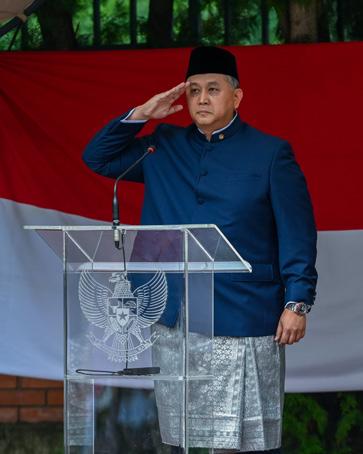
The Embassy of the Republic of Indonesia in Belgrade, led by newly appointed Ambassador H.E. Andreano Erwin, hosted a ceremonial event marking the 80th anniversary of Indonesia’s independence on Sunday, August 17, at the ambassador’s residence in Belgrade.
The program included a flag-raising ceremony, presentation of certificates of appreciation to the flag team, the traditional cutting of rice, a group photo with drone capture, as well as a fashion show. Guests were further treated to a festive lunch, followed by the award ceremony for winners of sports competitions and the fashion show.
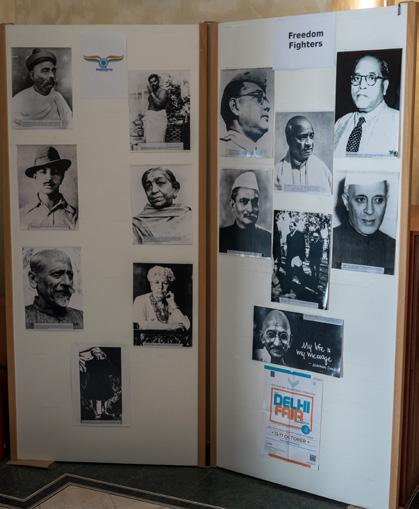



In september, Algiers will become the centre of African trade, hosting a fair that goes beyond economic exchange to cement Algeria’s role as a key driver of continental integration

From September 4 to 10, the Algerian capital will become the epicentre of African trade. More than a mere economic gathering, the 4th edition of the Intra-African Trade Fair (IATF) symbolizes Algeria’s unwavering continental ambitionone that the nation is determined to fully embrace.
A «work of projection and observation»-such was the recognition given to the substantial efforts undertaken following a thorough consultation on the current state of preparations and the key recommendations concerning the intensification of the organisational phase of the 4th Intra-African Trade Fair, scheduled to take place in Algiers from September 4 to 10. This event far exceeds the scope of a conventional economic exhibition. In a constantly evolving geopolitical context where shifting balances redefine Africa’s priorities, the organisation of this fair in Algiers stands as a bold undertaking-a pivotal moment in the continent’s trajectory. It provides Algeria with a unique opportunity to showcase its
IATF 2025 IN ALGIERS MARKS A PIVOTAL STEP IN OPERATIONALISING THE AFRICAN CONTINENTAL FREE TRADE AREA AND AN OPPORTUNITY FOR THE COUNTRY TO SHOWCASE ITS EXPORT POTENTIAL.
capacity to align economic aspirations with logistical expertise and forward-thinking diplomacy. The IATF 2025 is a strategic occasion for Algeria to reaffirm its place within the African economic sphere and to project a revitalised image of its productive capabilities. It aims to elevate intra-African cooperation to a structural level, yielding tangible outcomes in terms of trade facilitation and deeper integration into the continent’s commercial momentum.
Yet, this continental fair goes well beyond the framework of a trade exhibition-it represents a critical milestone in the operationalisation of the African Continental Free Trade Area (AfCFTA), offering Algeria an unparalleled platform to highlight its export potential.
The political commitment surrounding the event is a testament to the Algerian authorities’ resolve to make the IA TF a structural success that serves the cause of regional integration. Beyond visibility, the ultimate goal is to transform the fair into a lever for sustainable economic diversification and a cornerstone of Algeria’s strategic repositioning.
Algiers is preparing to host a landmark event that embodies the continent’s economic convergence. This dynamic follows the historic continuity of Algeria’s commitment to African unity. Since gaining independence, the country has distinguished itself by actively supporting liberation movements and consistently engaging in a diplomacy that champions continental causes. Algeria’s leading role within the African Union and its
election to head numerous AU bodies are a direct reflection of this legacy, legitimising Algiers as the host city of a continental event eagerly anticipated by entrepreneurs and economic experts alike.
«To align all available means with the nation’s African ambition»-this is the guiding principle shaping Algeria’s strategic deployment of resources to enhance its image and influence. It involves the meticulous coordination of infrastructure, logistics, administrative procedures, protocol, financing, customs facilitation, transportation, accommodation, tourism, communication, and marketing.
President Abdelmadjid Tebboune, unwavering in his Pan-African convictions, has consistently worked to strengthen political alignment across the continent. His vision is rooted in active solidarity, mutual support in facing common challenges, and, above all, a clear economic ambition, initiating a new growth dynamic powered by Africa’s internal capacities and driven by intra-African trade.
The slogan «Africa for Africans,» which served as a foundational pillar of Pan-Africanism since the establishment of the Organisation of African Unity (OAU), was first proclaimed from Algiers. It is no coincidence that today’s pursuit of African economic renewal is once again anchored in this land of resistance and revolutionary fervour. Through IATF 2025, Algeria reasserts its role as a strategic crossroads and a driving force behind autonomous continental development.
President Tebboune’s strategy is underpinned by a long-term vision: the diversification of the national economy, the intensification of African partnerships, and a firmly stated intention to break free from asymmetrical economic relations.
This bold approach finds tangible expression in the organisation of this Pan-African fair, which many experts view as a vital instrument

PRESIDENT TEBBOUNE’S STRATEGY
ECONOMIC
for promoting commercial exchange across a market estimated at over $3 trillion.
Algeria is mobilising all necessary resources to ensure that the IATF 2025 becomes a benchmark event, a strategic turning point in Algeria’s economic projection across the
African continent, aligned with the aspirations of its peoples. By hosting this major gathering, Algiers is not merely assuming the role of host; it is actively translating into reality a shared vision for the future, grounded in enduring and robust trade relations.
September 4 will mark far more than an economic or diplomatically symbolic occasion-Algiers will embody a collective determination to deepen economic cooperation, driven by political will, as reaffirmed by Mr. Olusegun Obasanjo, former President of Nigeria.
Within a single week, Algiers will reconnect with its destiny as a great African capital, laden with historical significance and the enduring hope of African unity.
At a time when the continent is seeking new foundations, the 4th Intra-African Trade Fair in Algiers emerges as a beacon of exchange, ambition, and reciprocity.


On refugee integration, cooperation with the state, and the challenges of humanitarian protection in a rapidly changing world
SOUFIANE ADJALI
UNHCR Representative in Serbia
In this interview for Diplomacy&Commerce, conducted in cooperation with Euronews Serbia, we speak with the UNHCR Representative in Serbia, Soufiane Adjali, about the organisation’s work, current challenges, and its role in supporting
refugees and displaced persons in the country.
Could you share with us what your key priorities have been ever since taking office?
I arrived in a country where UNHCR has been present since 1976. One of the objectives is to look at windows of opportunity available to enhance the protection of people in need of safety
and dignity. This entails ensuring they have legal rights, are included in society, and contribute to it by working rather than being a burden.
We also worked on another subject, statelessness, to make sure that all people born in Serbia of Serbian origin are documented and not at risk of being stateless. These priorities are very important to me. Next year, we will
be celebrating half a century of UNHCR’s presence in Serbia.
You’ve worked in America, the Middle East, Africa, and Europe. How have the challenges refugees face varied across these regions?
The 1951 Convention, which we’ll celebrate next year on its 75th anniversary, has a consistent purpose: life-saving protection across
all parts of the world. It has provided safety to millions. We often forget that the people under our mandate are not fleeing for economic reasons; they are seeking security, safety, and the hope of one day returning home in dignity.
For viewers unfamiliar with UNHCR’s work, could you explain how the organisation helps refugees in Serbia integrate into society, including access to employment and education?
First, I’d like to thank the people of Serbia for hosting, for many years, individuals escaping persecution and war. We’re here to help the government and the people understand that those crossing into Serbia, families, young men, are often escaping to protect their loved ones who are refugees elsewhere.
They shouldn’t be seen only as individuals on the move. Conflicts last for years, not just one, and options are limited. These people are rich in experience. They come with educational backgrounds and career plans.
UNHCR Serbia is trying to explore innovative and individualised approaches to inclusion and integration, taking into consideration refugees’ specific situation and needs, but also their unique skills and talents.
REFUGEES SHOULD BE SEEN AS CONTRIBUTORS TO SOCIETY, NOT AS A BURDEN.
Also, UNHCR has been implementing the DAFI (Albert Einstein German Academic Refugee Initiative) scholarship programme in Serbia since 2021, enabling the first refugees here to access public tertiary education. UNHCR is proud of the six university students who are currently studying in Serbian successfully.
Income taxes matter. We don’t want refugees to work in the shadow economy; we want them employed with proper contracts. Thanks again to the Members of Parliament who adopted a law allowing foreigners to access the labour market after six months of seeking asylum and protection. This enables them to contribute rather than receive assistance.
For many refugees, Serbia is a transit country en route to the EU. What challenges does this pose for humanitarian efforts?
Movements are mixed. Some people can return home, but UNHCR focuses on those who cannot.
Often, they fall into the hands of criminals who promise safety. People are misled and unfamiliar with Serbia.
Yet, Serbia holds significant potential to be more than just a transit point - it can also be a country of asylum. The solidarity demonstrated by its citizens during the 1990s, when many opened their doors to refugees from the region, and again during the 2015 European Refugee Crisis, speaks volumes about the country’s humanitarian spirit. By continuing to strengthen its asylum system and investing in local integration pathways, Serbia can serve as a model for responsible and humane refugee response in the region.
The latest UNHCR analysis states that over 122.1 million people are forcibly displaced worldwide, a number that has doubled in the last decade. What
SEEKING PROTECTION SHOULD NEVER INVOLVE DANGEROUS JOURNEYS.
are the main drivers behind this increase?
We’re now speaking of 123 million forcibly displaced persons. Among them, 9 million have returned home, 8 million are internally displaced persons who returned to their houses, and 1 million refugees have returned in safety and dignity. We keep them in our statistics because we monitor their reintegration.
The trigger is the weakening of multilateralism. The UN Security Council is a tool for peace, and we rely on it to help countries become more peaceful so people don’t have to flee their homes. UNHCR’s caseload shows that 77% of displaced people come from the Southern Hemisphere, far from the Northern Hemisphere, where they seek protection.
While displacement numbers have doubled, UNHCR’s funding remains at 2015 levels. How does this affect refugee assistance programs?
While the number of forcibly displaced people has almost doubled from 64.1 million in 2015, UNHCR’s resources are now more or less at the same level as a decade ago. In 2015 UNHCR was funded to the tune of $3.4bn - almost the same level we expect to be funded for 2025. This situation is not sustainable. The funding crisis has


put the humanitarian system at breaking point.
It’s impossible to predict the impact of the brutal humanitarian funding cuts on displacement figures. The impact on refugees’ lives is already devastating. With aid slashed, millions of lives are now at risk. This impact is immediate and severe: critical medicines, emergency shelter, food, relief items, clean water and protection services, including to children and survivors of sexual violence and trafficking have already been severely reduced or stopped. Wars continue to force thousands to flee their homes to save their lives. In the absence of stability or peace, these funding cuts mean those in danger will not receive assistance, and more lives will be lost. Slashing aid will make the world less safe, driving more desperate people to become refugees or keep moving onwards.
In the same report, it is said that 60% of forcibly displaced people are internally displaced, meaning they never even leave their own home country. What are the obstacles in finding solutions for internally displaced persons?
WE ARE ASKED TO DO MORE WITH LESS AS CONFLICTS INCREASE WORLDWIDE.
For internally displaced persons, the key point is that they haven’t crossed the international border of their country. UNHCR refers not only to those displaced by natural disasters, but also to those affected by instability and political discomfort.
When people move within their own country, they seek areas where they feel safe. If a country has functioning institutions and stability, and if people feel their human rights and the rule of law will be respected, they are more likely to return. Unfortunately, many of these conflicts, especially in the Southern Hemisphere, keep people displaced within their borders, waiting for the moment they can safely return home.
An important aspect of this issue is media coverage. UNHCR has organised a workshop with the Journalistic Association of Serbia on responsible coverage
of refugee-related topics. To what degree does this affect the perception of refugee integration in society?
Journalism plays a key role. Journalists must be respected and protected. It saddens me when I hear of journalists dying on the front lines to provide us with information.
It’s important to sit with journalists because they shape public understanding. They provide factual pictures that help people form their own opinions. Journalism is about freedom of expression. Journalists doing their job will understand the definitions of migrant, refugee, and asylum seeker and won’t speculate.
These workshops, that we’ve been organizing for three years now, provide a unique opportunity to exchange ideas and work together to create a more positive narrative about people forced to flee - always based on relevant data and evidence.
There is hope when we train journalists to use accurate language and understand that fear of the unknown can lead to harmful stereotypes. There are criminals in every society, but foreigners are often unfairly blamed for instability.
There’s a stereotype, yes. I believe that strong state institutions create security. If we all do our jobs, safety is possible. If we criticise, it means we’ve failed.
Everyone is responsible for ensuring safety for both foreigners and host communities. If the host communities don’t feel safe, how can they welcome others? These trainings help, not dictate, but offer a vision. Journalists have their freedom, and we respect it.
We’ve also mentioned the importance of employment for refugee integration. UNHCR has launched a career guidance manual. Could you tell us about it and its impact on helping refugees find employment opportunities?
Before launching the guide, we created a network connecting refugees with the private sector. We
worked with different partners, including the Serbian Chamber of Commerce, as well as Chambers of Commerce from different countries present in Serbia.
We established a network to help asylum seekers who choose to stay in Serbia integrate into the labour market. This doesn’t happen overnight. We worked with the National Employment Service, the Commissioner for Refugees, and the Ministry of Interior to facilitate integration.
We’re now improving refugee documentation so they can open bank accounts and receive proper wages. Some have even started private businesses and become independent entrepreneurs. We’re developing tools to support this, but it won’t succeed without support from the government and the people of Serbia.
So you need this collaboration for it to happen.
Exactly. I’m not in my own country; it’s the host country’s decision. And in Serbia, we often receive positive feedback.
That’s great to hear. You mentioned collaboration with the private sector, which has been a fruitful partnership with UNHCR. Could you elaborate on how this works in practice?
UNHCR’s collaboration with the private sector in Serbia has been critical in advancing the inclusion
and empowerment of refugees.
A key highlight of this partnership is the #ForRefugees network, launched jointly with IKEA, one of UNHCR’s longstanding and trusted global partners. This network brings together representatives from domestic and international companies, as well as chambers of commerce, creating a dynamic platform for dialogue, collaboration and action.
Through this initiative and other partnerships, the private sector has provided indispensable support in several critical areas, including refugee employment, career guidance and access to training opportunities. These efforts not only help refugees rebuild their lives with dignity but also contribute to more inclusive and resilient communities.
Looking ahead, it is essential to further explore and expand cooperation with the private sector. Their innovation, resources and reach are vital in creating sustainable solutions for refugee inclusion and in fostering a society where everyone can thrive. UNHCR isn’t dealing with huge numbers. We’re talking about approximately 259 refugees in Serbia and around 1,000 under temporary protection.
But it’s still impressive nonetheless. We’ve also mentioned the issue of statelessness. What has UNHCR achieved in Serbia regarding this, and would you say it’s being reduced or eradicted?
Serbia has done very well. Thanks to legislative reforms, capacity-building of state officials, and dedicated work with vulnerable communities - primarily Roma and internally displaced persons, Serbia has managed to reduce the estimated number of people at risk from several tens of thousands in 2010 to approximately 1,300 today. Of these, around 200 to 250 individuals still remain unregistered in the civil registry.
Ministry of Public Administration and Local SelfGovernment and other partners are working on ensuring that all children are registered in the civil registry immediately after birth— even in cases where the mother lacks personal documents or is herself unregistered. To close this gap additional legal changes are needed.
Serbia is on the right path and doing better than many countries in the region. We’ll continue
WITHOUT PEACE, THERE IS NO HOPE — THAT MUST BE THE NUMBER ONE PRIORITY.

working and hope to see free legal aid become more accessible for those at risk.
Very important. You’ve also worked with local youth. Could you share your impressions? Are you successful in helping them navigate the narratives surrounding refugees? We’ve been working with youth and will continue to do so. They are the future. I hope we’re building a world of peace, hope, and opportunity for them.
And the youth, when they grow up, can learn many languages, and they don’t distinguish between them. It’s what we put in their minds that shapes and formats them. I believe their genuineness and innocence don’t make them any less clever than others.
They can absorb a lot. We often say this about babies, but it applies to youth as well; they are the power of the future. They are the ones who will lead us. When we grow old, they will be the ones managing us. And we want them to manage us well.
So we need to prepare them well for the future.
You mentioned the future. Could you tell us what your hopes are for the future regarding these issues and global challenges surrounding refugees? The good thing is, we want peace. My hope is for peace.
And this is the basis?
The basis of everything. We can talk about many things, but without peace, there is no hope. That’s the number one priority.
We need to improve the international mechanisms established after the Second World War to function more effectively. We often envision a bleak future.
But I think we must be optimistic. We need to realise that we all live on the same planet and we are all responsible for each other. I think that is my key message.
Refugees, asylum-seekers and company representatives from the #ForRefugees network in Serbia came together to cook traditional dishes, fostering cultural exchange and solidarity through food, December 2024, Belgrade, Serbia ©UNHCR/K.Nsengiyumva



from the moment you arrive, our dedicated staff is at your
service—daily housekeeping, concierge assistance, in-villa b re a kfa st s o r p r iva t e c he f ex p e r i e nc e s , c h i l d - fr i e nd ly menus, transfers, and bespoke activity planning. We anticipate your every need, so you can simply unwind and enjoy.
Our collection of four-bedroom and five-bedroom villas offers a private sanctuary surrounded by fragrant oaks and evergreen forests. Here, peace and nature frame every view, while nearby beaches, restaurants, and historic Budva await just minutes away. Budva’s old town and its beautiful Adriatic beaches are within easy reach, yet far enough to preserve total seclusion.
Ready to elevate your Budva experience? Contact us today to secure your preferred villa and let us craft your perfect stay with flawless service and peaceful surroundings guaranteed.
Welcome to your memory-making getaway
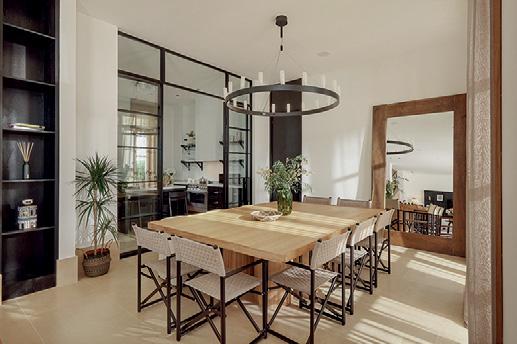
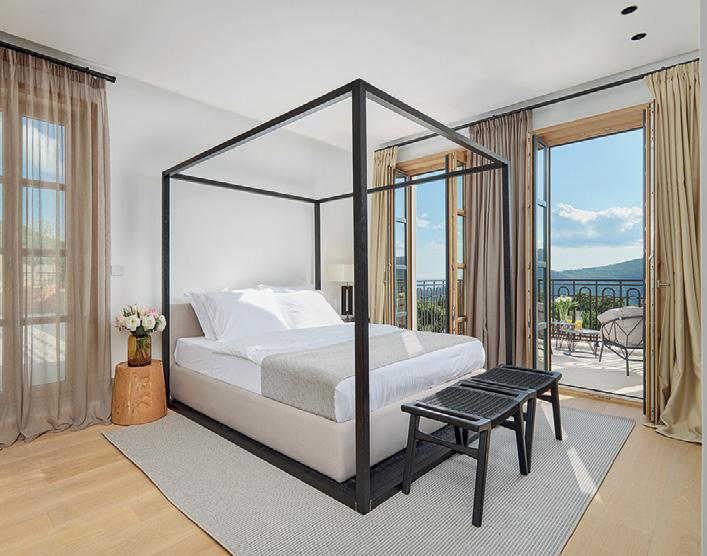
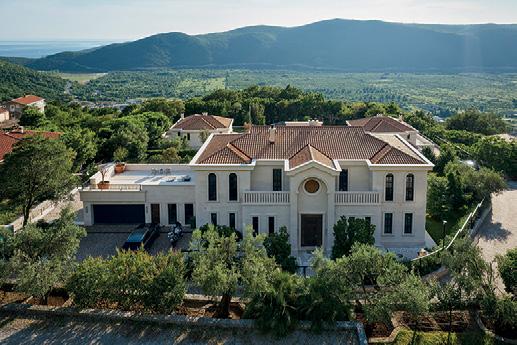




H.E. Pernille Dahler Kardel
Danish Ambassador to Serbia
FOCUS ON
AUGUST 2025
CORPORATE INTERVIEW
A HUB FOR INNOVATION AND GREEN TRANSITION
Veljko Todorović
Country Director of Grundfos Serbia
CULTURE
DENMARK THROUGH MUSIC AND FAIRYTALES
DIPLOMACY | BUSINESS | CULTURE

EU ENLARGEMENT, INCLUDING UKRAINE, MOLDOVA AND THE WESTERN BALKANS, IS ESSENTIAL FOR A SECURE AND UNITED EUROPE.

EU Presidency priorities, enlargement as a geopolitical necessity, and Serbia’s path to membership
On July 1st, Denmark assumed the presidency of the Council of the European Union, marking the eighth time a Scandinavian country has taken on this role. Over the next six months, what will Copenhagen’s priorities be, and how does Denmark view Serbia’s path toward EU integration? These topics were discussed with the Danish Ambassador to Serbia, Pernille Dahler Kardel, in an interview for Euronews Serbia conducted in cooperation with Diplomacy&Commerce magazine.
Your Excellency, thank you for taking the time to speak with us. Given that Denmark has taken over the EU Council presidency, what are its main priorities?
We assumed the presidency on July 1st, and it will last for the next six months. Our overarching goal is to be a strong Europe in a time of change, and that largely defines our focus areas. The current geopolitical environment strongly shapes our priorities. We’re focusing on two main areas. One is a secure Europe, which has many dimensions; it’s about building a Europe capable of defending itself.
We must be able to defend ourselves in the coming years. As you’ve seen, there’s renewed momentum to increase defence spending. But there are other aspects as well. For us, it’s crucial to emphasise that EU enlargement is a key part of a secure Europe, starting with Ukraine. Russia’s aggression against Ukraine was a wake-up call, and we must refocus on strengthening Europe. We believe that an expanded EU—including Ukraine, Moldova, and the Western Balkans, including Serbia—would make us stronger.
That’s why we’re very focused on this. We’re also focused on securing external borders and controlling illegal migration. So, security in a broader sense, not just the traditional concept of defence.
The second area is strengthening competitiveness in a green Europe. That means enabling European companies to compete globally. We’ve seen that bureaucracy and certain regulations hinder European companies from competing, and we need to address that. Green transition is a major priority for us. Denmark is a frontrunner in this area. We’ve set a goal to reduce emissions by 70% by 2030.
When that goal was set a few years ago, no one knew how to achieve it. But we rallied around it, and now we’re on track. I mention this for two reasons. First, it shows that when you set an ambitious goal and align efforts toward it, you increase the chances of success. Second, given the global pressure on climate policy, Europe needs to remain an ambitious actor in the green transition.
We’re currently reviewing climate targets for 2040. The European Commission has proposed a 90% reduction target. This is under negotiation, but we sincerely hope to lead the European delegation at COP30 in Brazil later this year with strong and ambitious climate goals. Europe must arrive in Brazil with robust climate commitments. Our efforts to combat climate change depend on whether Europe continues to pursue ambitious targets. So while we address immediate concerns, we must also stay focused on long-term issues like climate change.
This is Denmark’s eighth presidency of the EU Council. Given the current geopolitical and security context, would you say this is Denmark’s most challenging presidency?
And sometimes you forget how things were during previous presidencies. This one is certainly very challenging. Typically, as a Dane, you’re well prepared. We are well prepared this time too, but we don’t necessarily know the conditions we’ll be working under—the dynamics of the geopolitical environment, the transitions we’re witnessing, and the daily impacts.
Nor do we know what we’ll be able to achieve. We know what we want to accomplish. We don’t know how far we’ll get as the presiding country, unlike previous presidencies, where things were more predictable. So yes, it’s difficult, but that also makes it extremely important. We must stay focused and succeed. We’ll do everything we can to ensure that the EU is stronger after our presidency than it was before.
The Danish presidency program states that EU enlargement is a geopolitical necessity. In that light, what can Serbia, as a candidate country, expect?
I think one of the key developments is the renewed momentum around enlargement. That’s very important. Just a few years ago, we were hesitant about enlargement. But after Russia’s aggression against Ukraine, that hesitation is gone.
We now understand the importance of unity; that countries in this part of Europe belong in the EU. I hope one of the outcomes of our presidency will be to build that momentum around enlargement. So we’re no longer being asked whether we’re serious about enlargement. I’d like to see us move from questioning our seriousness to working together to solve problems.
How does Denmark, as the presiding country, view Serbia’s progress in EU integration so far?
Serbia has been a candidate country for many years and has made progress over time. We’ve just seen the latest European Commission report on the rule of law. There are challenges. I don’t think there’s anything unexpected in the report.
That’s why I believe it’s important to encourage Serbia to stay on course, complete its tasks, and become a member of the EU. The process is ongoing, and it’s important to see it through. It would be wonderful to see Serbia become an EU member.
One of the EU’s main priorities right now is strengthening governance. How can Denmark, as the presiding country, contribute to this task?
When you hold the presidency, you can set the agenda and steer discussions. We’ve strongly taken on the defence agenda, based on the Council conclusions from June. There’s still work to be done to ensure that in a few years, Europe will be capable of defending itself.
By setting the agenda, we can help ensure that it continues to be implemented. We’ve also decided to increase our defence spending to 5%. If you had proposed that a year or two ago, it wouldn’t have been accepted. But we made that decision. And that investment, to ensure we can defend ourselves together, is an important example to set.
Part of that is looking at our internal capabilities, making sure we have boots on the ground where needed. We’ve also decided it’s important for women to serve and have better conditions for service. To me, that’s a sign of what’s needed to advance equality.
Defence today isn’t just about physical strength; it involves many other factors. To solve these challenges, just like in any other area of society, diversity leads to better outcomes. That’s why we see it as a key aspect of promoting equality and ensuring the best possible results.
Serbia emerges as a key point of cooperation with Denmark, linking industry, education and sustainable development
Grundfos, one of Denmark’s leading industrial companies, has been present in Serbia for 15 years, positioning its Inđija factory as a regional hub for production, research and development and innovation. We spoke with Veljko Todorović, Country Director of Grundfos Serbia, about the company’s role in green transition, partnerships with universities, and how sustainability shapes both business and society.
How would you describe the essence of the Danish approach to business, and in what way are these values – particularly sustainability, inclusiveness and innovation – transferred and developed through Grundfos Serbia?
I believe it is exactly as you said. Sustainable business is one of our core values. When we talk about sustainability, we do not mean only financial sustainability. Still, above all, the contribution we make through our work to humanity as a whole, to the country, and the planet.
As for innovation – how is it reflected in our operations? Quite simply, we are strongly connected to all the processes taking place within Grundfos – from production, through company-wide operations, to product development. This focus is embedded in everything we do and build in Serbia. Our factory has been awarded the LEED Gold certificate and is a truly sustainable building. The systems we have installed are state-of-the-art solutions in terms of sustainability, aimed at reducing the overall impact on the environment.
Grundfos was among the first in the sector to implement SBTi targets for reducing CO2 emissions. How challenging was it to align such ambitious climate goals with the requirements of everyday production?
SBTi targets encompass three scopes. Scopes 1 and 2 refer primarily to our internal emissions and the footprint we leave through production and logistics processes. However, the largest share of emissions comes from the products themselves – specifically from their use throughout their entire life cycle. Although our share in global emissions is only about 1–1.5 per cent, it is the use of products that creates the greatest impact.
Grundfos is known as the first company to introduce frequency-controlled motors, which significantly reduce electricity consumption. This is an innovation we continue to develop and elevate to an even higher level. Naturally, this brings certain challenges. Such products are more expensive, so it is necessary to find business models and ways to place them on the market at a competitive price. It is not simple, but this is exactly why we exist as a company – to seek out and deliver such solutions.

VELJKO TODOROVIĆ Country Director of Grundfos Serbia
OUR FACTORY IN SERBIA HAS BECOME A SHOWCASE OF WHAT SUSTAINABILITY MEANS
Inđija has become one of Grundfos’ key hubs worldwide. What are the reasons for such a strategic position of Serbia in your global value chain? And, to begin with, could you explain what exactly Grundfos has in Inđija as part of its global operations? In Inđija, we currently have one factory with two buildings covering a total area of 41,000 square metres.
This includes two production halls, an administrative building and a warehouse. In addition, we use a rented building in the IT park across the street from the factory, which hosts global funtions supporting research and development, supply chain and many more departments world wide.
Serbia offers a qualified and educated workforce. We indeed lost a certain continuity due to the events of the 1990s and early 2000s, and we fell somewhat behind in industrialisation processes. Nevertheless, our educational system still enables people to learn quickly and applying the necessary technical knowledge.
On the other hand, I believe there is also a mindset here – a strong motivation to show that serious projects can be carried out in Serbia. And we have succeeded in that. We started the factory with a small team, and two years ago, we went through Grundfos’ global factory certification process. At that time, we were assessed as the best Grundfos factory – not in terms of size, but based on all the indicators and processes used to evaluate operations. We have also trained people who now support other divisions and segments of the organisation, and the value they create in Inđija is recognised globally within Grundfos.
The company is majority-owned by a foundation. How does this ownership model shape long-term decision-making, and how different is it from traditional corporate governance?
Our company is privately owned, which means we are not listed on the stock exchange. The main owner of Grundfos is the foundation established by our founder, Poul Due Jensen, precisely to protect the financial integrity of the company.
This ensures that the company always serves its original purpose –dealing with water and systems that use it efficiently and reduce environmental impact. The fact that the owner is a foundation adds an important dimension: profit is not the goal, but a means to achieve our mission.
Profit is therefore used primarily to finance new development projects and expand our global impact, rather than to satisfy shareholders. Employees are also small shareholders, and the profit we generate is channelled mainly into innovation and product development, further increasing our positive impact worldwide.
How viable is a non-traditional, non-corporate business model in today’s era of neoliberal cap-

italism, where profit is paramount and everything else is secondary?
Honestly, I believe this model gives us an advantage rather than being a burden. Grundfos is a company with a strong purpose and a culture rooted in the legacy of our founder, his son and now his grandson as our curent CEO.
People stay with Grundfos for decades because they can align their values with the company’s values. This model also allows for simpler decision-making, as we are not tied to the short-term demands of the stock market. Ultimately, it is a different system of values from the one that dominates today, but precisely those values, culture and purpose are what guide us.
You have invested in a wastewater treatment plant, the “BioBooster”, in Serbia. Are similar investments planned in other local communities, and how important are such projects for the company’s reputation?
We no longer call it “BioBooster”, as that was the name of a former organisation, but the essence is that we now have a system for water recirculation. It enables us to turn grey or black water – including rainwater – into drinking-quality water, which is then reused in the system, reducing both the water we take from the network and the amount discharged into sewage.
As far as we know, this is the only such example in Serbia. Our plant operates autonomously,
processing only water within the factory, and we now have a 250-cubic-metre tank for rainwater, with capacity still expanding. The treated water is used for toilets, cooling towers and other needs, further reducing consumption. For us, this project was a showcase of what can be achieved and how we approach sustainability. It may never fully pay off financially, but it is a concrete project, not just a story, and it remains highly important for our mission and purpose.
Has this facility proved to be financially viable?
No, it has not been financially profitable. But in terms of impact – yes.
Did it perhaps inspire you to continue further, or encourage others in Serbia to do something similar? Unfortunately, not, as water here is still seen as abundant and often taken for granted.
What matters, however, is that our Serbian factory has been designated a so-called VIP factory – one of only three in the world where we bring our most important customers. We use this facility as a demonstration to show what can be achieved and to inspire partners not only in Serbia but globally. So even if it has not brought financial profit, it has become a valuable example and a model that proves things can be done differently.
How do you see the development of relations between Denmark and Serbia in the context of innovation, education and the green transition? Can Grundfos serve as a bridge for further cooperation projects?
We are, in many ways, the largest representative of Danish industry in Serbia. Grundfos sees Serbia as a key hub, especially for our domestic pumps division, but our operations here also include research and development, marketing, HR and finance – making the Inđija factory highly significant.
Over the past 15 years we have built close cooperation with the Danish Embassy and universities. This year we launched a summer school enabling students from Serbian faculties to spend time in Denmark working on innovative projects, and I hope such initiatives will continue to grow.
Denmark is a world leader in renewable energy, and there is so much Serbia can learn. With the right will and connections, cooperation in this field will only become stronger.
You have held the Top Employer title for three consecutive years. What, in your view, sets you apart in human resources and how do you build a corporate culture in an industry often perceived as “technical”?
A company cannot exist without its people, and our approach is rooted in openness, trust and genuine care for employees. We encourage transparent communication, listen to feedback and make sure suggestions are implemented.
Leadership here is based on respect and equality rather than hierarchy, and we pay close attention to wellbeing, development and integration of young talents.
That combination of values is what makes Grundfos a Top Employer – not just an award, but a culture our employees truly experience.

A CONSUMMATE PERFECTIONIST OF THE CELLO
Musician - cellist Toke Moldrup (and Fairytales by Hans Christian Andersen)

Danish Cellist Toke Moldrup has been a guest of ArtLink Festival in Belgrade in two editions and is preparing his third appearance with Serbian pianist and festival Director Jovanka Višekruna Janković. It will be a Fairytale program created and curated by two artists. Two previous appearances of Toke Moldrup have been a kind of great achievement, for both the artist and the festival.
The first one happened during the period of COVID, when most European festivals were cancelled, when the courageous and visionary festival Director Jovanka Višekruna Janković managed to bring to Belgrade several international artists, among them Toke Moldrup, who gave an extraordinary recital with Danish pianist Tanja Zapolski. That was just an introduction for a new exciting festival story – Bach Marathon by Toke Moldrup that Jovanka Višekruna Janković managed to realise in Belgrade as a part of ArtLink Festival in 2022 at the riverbank of the Sava River.
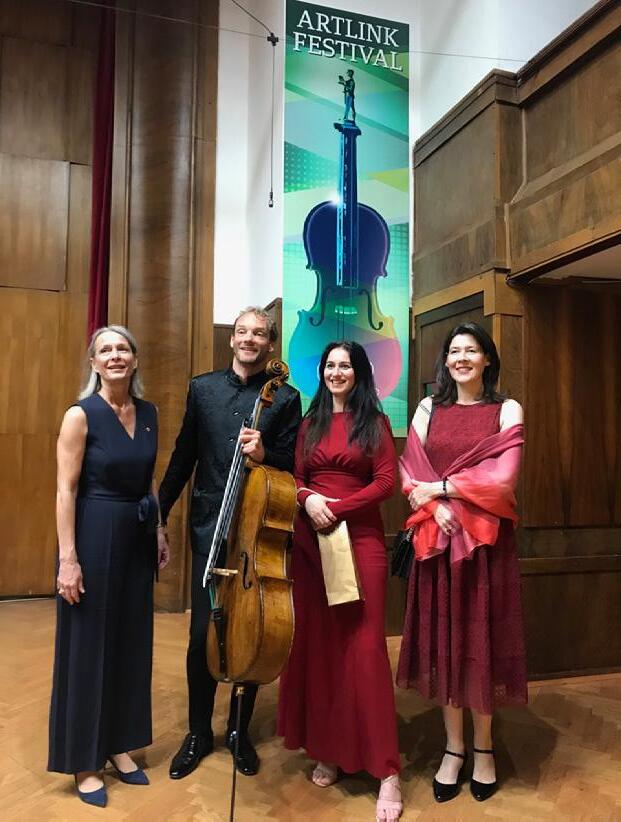
DREAM BIG, AND IF YOUR DREAM FAILS, DREAM A NEW ONE
It was an extraordinary music and sports event that presented the synergy of the artists’ endless energy and motivation, and resilience in achieving the extraordinary. It is the innovation, it is a challenge, a creation, a strength, the showcase of the power of dedication, a power of constant improvement through everyday practice and the power of energy of our mind, body and heart when they work as one.
ArtLink festival creates synergies and new stories among artists. If there is a talent and connection, if there is a potential and mutual understanding and recognition in terms of creation and artistry, there is always a new story. And here we come to a new one – Fairytale that is now a new work in process. Toke Moldrup has his Fairy tale program, but Serbian pianist has also her fairytale concept. And it goes back to their childhoods and to Hans Christian Andersen. The first dreams, first music and sounds started with that book of the most beautiful fairy tales!
The Little Mermaid, a symbol of the city of Copenhagen, is a famous fairytale that is a part of Danish cultural history and culture, but also a part of European collective consciousness. Two artists are creating a Musical Fairy tale program, but also a small Musical Marathon that will connect the symbol of Belgrade – Monument Victor – and the symbol of Copenhagen through the music performance and musical walk. Also, the castles –Belgrade Fortress and the beautiful castles that are the symbol of the Fairy tale, you can see in Denmark, they look like the cover of the book by H.C. Andersen.
What do you feel needs to be done to grow classical music audiences? Now we have to come up with many more reasons why we do what we do. And great things have come of it. I think the answer to the question is: Let’s keep doing our best to get the music out there, creating visionary programming, exciting education on all levels. Let’s launch crazy projects and do what we are best at: performing as if our lives depended on it. And let’s be sure to get some statistics on the actual numbers of listeners in the concert halls. My dad used to complain about those numbers, too. But from my view here in Denmark, Europe, it seems like more and more people are getting interested in the wonderful world of classical music.
What do you consider to be the most important ideas and concepts to impart to aspiring musicians? Dream big and do all you can to achieve this dream. If your dream fails, dream a new dream.
Learn when you are learning. Don’t ask questions all the time, follow along and see where it takes you. If you don’t feel that you are learning enough, consider changing teachers or institutions, but maybe wait until you’ve finished your next exam.
Practise all the time. With the instrument and without it: read, see, understand, feel.
Trust your instinct, it is usually right. If you are not sure about a decision, go to an isolated (maybe even dark) room for ten minutes, consider, make the decision and stand by it. If you have a girlfriend/boyfriend/spouse – by all means, run it by him or her!
Acclaimed as “A star” (New York Times), “Tomorrow’s man” and even a “A consummate perfectionist on the cello” (Politiken), Danish cellist Toke Møldrup has performed across Europe and the United States, South America, Australia, the Middle East and Asia for two decades. Møldrup’s concerts, social media presence, and his experimental and reflective approach to classical music captivate existing audiences while engaging new listeners.
Møldrup has performed in venues such as the Weill Recital Hall at Carnegie Hall, Wigmore Hall, Vienna’s Musikverein, Daiichi Seimei Hall in Tokyo and the Forbidden City Concert Hall in Beijing. As a soloist, Møldrup has performed with Danish and international symphony orchestras under conductors such as Vincent de Kort, Santtu Rouvali, Lan Shui and Toshiyuki Kamioka, and at festivals such as the Bergen International Festival, Lincoln International Chamber Music Festival, Monte-Carlo Spring Arts Festival and Oberstdorf Music Summer.
With a keen interest in developing the cello repertoire, he has premiered many works by contemporary composers, among them the European premiere of John Williams’ cello concerto, the world premiere of Geoffrey Gordon’s cello concerto and Christian Winther Christensen’s double concerto. His versatile approach to modern cello playing is demonstrated in his recent adding to the list of recordings: CONSOLATION – dedicated to the victims and heroes of the pandemic with pianist Tanja Zapolski, Beethoven’s complete sonatas and variations with pianist Yaron Kohlberg, CELLO LIBRIS – chamber and concerto works for cello by Geoffrey Gordon and last but not least the 6 suites for solo cello by Johann Sebastian Bach.
Among many national and international prizes, Toke Møldrup has received Queen Ingrid’s Honorary Award for his achievements on behalf of Danish music as well as the Augustinus Foundation’s Anniversary Grant. Due to his busy concert schedule and his position as a professor at the Royal Danish Academy of Music, Møldrup has recently left his position as principal cellist of the Copenhagen Philharmonic, one of Denmark’s top orchestras and famous for its inspirational and successful initiative to attract new audiences to the world of classical music. He is now continuing this important work as artistic director of the annual Svanekegaarden International Cello Masterclass.
Important influences on Møldrup’s artistic development include cellists Valter Dešpalj, Hans Jensen, Ralph Kirschbaum, Yo-Yo Ma, Harro Ruijsenaars and Morten Zeuthen as well as Prof. Tim Frederiksen and The Alban Berg Quartet, under whose mentorship he studied as a member of the Paizo Quartet, winner of the Grand Prize at the Melbourne International Chamber Music Competition in his early career.
Toke Møldrup plays a David Tecchler cello (Rome, 1697) courtesy of the Augustinus Foundation.

What is happiness? An elusive concept but a recognisable feeling. Momentary happiness, when your team scores a goal in the Champions League, or lasting happiness, with your family, or walking around the city where you live and want to live for the rest of your life?
Visual Capitalist reminds us, “While happiness can be intangible, it is often influenced by real social factors such as personal freedom, financial security, safety, and trust in public institutions—as a result, the answer to the question of whether people are ‘happy’ depends on several factors at both the individual and societal levels. We couldn’t agree more.
And every year, the World Happiness Report measures and ranks the happiest countries in the world, using data from the Gallup Global Poll, which polls over 100,000 people from 140 of the 195 countries (the list is therefore incomplete), and the results show that for the 8th year in a row, the champion is Finland! Although it might be the most depressing and alienated country in the world, it seems that happiness is not just about a smile on your face, long beaches, a cocktail in your hand, and a casual flirtation with a girl or maybe chitchat with your neighbour. This is also shown by the second place, where the old long-time champion was found – Denmark, which is admittedly a little brighter – anyone who
has been there can confirm this – but again a Nordic country.
Until 2020, Switzerland was consistently in third place after these two, but the land of watches and cheeses gave up its place – Iceland! Again, a country with little light, winter and a bad climate. Admittedly, Icelanders are known as cheerful people – in going out. But we didn’t know they were so happy otherwise. It is interesting that the Swiss no longer seem to feel as happy as before – from 3rd place in 2020, they fell to 4th place in 2021, then to 8th in 2022, and in 2023 they were among the Top 10 for the last time – in 9th place. Switzerland has fallen down the list to #13 in 2024. Their neighbours, the Austrians, have also been out of the Top 10 since 2022.
Now in 4th place is – you guessed it –Sweden! We can talk about immigration, crime or the highest number of sexual offenses – but Swedes are happy people! Still, they are a symbol of pop music joy, deep down. For the first time in 5th place we leave Scandinavia or Nordics and there is – the Netherlands, but then a surprise happens – Costa Rica has seen a steady climb from #15 in 2019 to #6 in 2024, while Mexico has risen from #24 to #10 in the same period –both now ranking above the US and Canada. For the first time, a truly sunny and cheerful country with sociable people in the Top 10!
Today, Norway is the 7th happiest country in the world, to complete the Nordic story,
followed by Israel. Israel was in fourth place in 2022, and eventually fell to #8 in 2024probably due to the tense Israeli-Palestinian conflict in the last two years. However, it is still the happiest Middle Eastern country in the world. It is not difficult to be happy when you are rich, so it is not difficult for Luxembourgers to take the number 9 spot, while Mexico is one of those outsiders who somehow jumped into the Top 10 this year, which we must welcome with joy, after so many decades of crisis.
The situation seems to be improving in every sense, and two seas and perfect food, architecture, music and warm people do the rest of the work.
And finally - what makes you happy? Surely not the climate, nor the beauty of the countrynor the sun, nor the company of friends all the time. Countries that consistently rank highly in the World Happiness Report tend to offer strong social safety nets, high levels of trust in public institutions, and a strong sense of community that drives interactions between people. In the Nordic countries, for example, the combination of high GDP per capita, generous welfare systems, low corruption, and work-life balance contribute to higher life satisfaction. In contrast, countries with political instability, economic inequality, or limited public services often score lower – concludes Visual Capitalist this story. Which is a good guideline for us here.



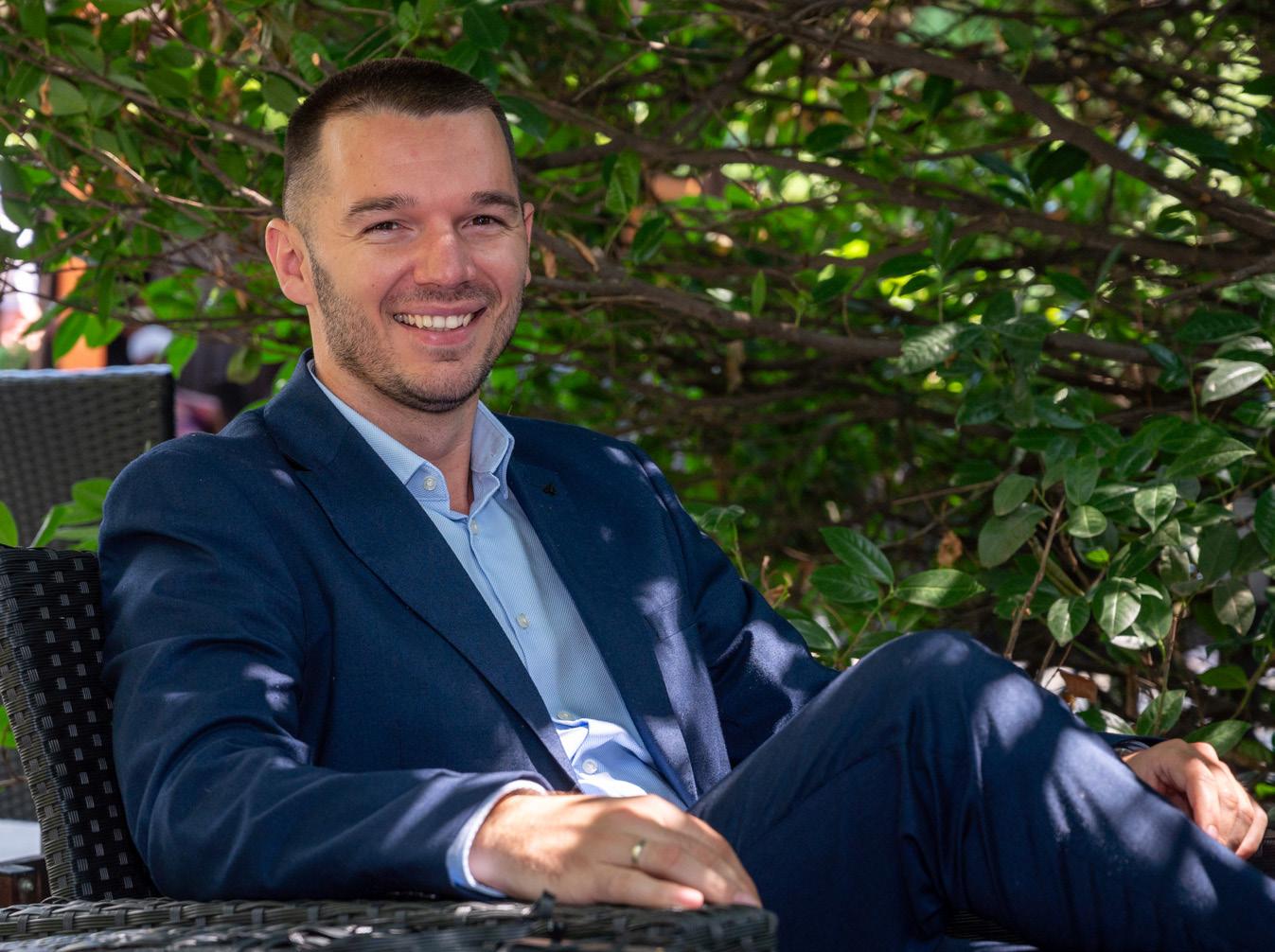
MARKO VUČETIĆ
Director of the Serbian IT Association (SITA)
This interview features Marko Vučetić, Director of the Serbian IT Association (SITA). The conversation took place during his recent appearance in Belgrade and explores how the IT sector in Serbia is navigating global trends such as artificial intelligence, cybersecurity, and sustainable digital infrastructure, while addressing local challenges and opportunities for growth.
The IT industry is not very well known, mostly because it tends to be quiet and not particularly focused on end consumers, which makes its public visibility
products and services are usually not intended for end consumers, but for businesses around the world. However, the IT sector in Serbia is one of the fastest-grow-
rather low. What is the real picture of this sector in Serbia? Indeed, the IT industry in our country is often “invisible” to the wider public, precisely because its
ing and most stable. It generates more than 4 billion euros in annual exports, employs a large number of highly educated professionals, and has become the backbone
of our economy. When it comes to the members of the Serbian IT Association, they are already achieving revenues of nearly 400 million euros, employing around 5,000 people, with service exports worth almost 300 million euros.
What has influenced the development of the IT industry in our country? What are our advantages compared to the rest of the world?
There are several key factors: a strong engineering tradition, high-quality technical education, adaptability, and the talent of our
professionals. In addition, tax incentives and certain benefits from the previous period have made Serbia an attractive destination for the development centres of global IT companies. Furthermore, the timing of the Serbian IT sector’s growth — at a moment when the world was already deeply engaged in digital transformation — allowed us to skip certain phases and immediately engage with modern technologies.
And what are the drawbacks?
The biggest challenges for the domestic IT sector are the lack of predictability in tax policy, the generally unpredictable business environment, and the absence of a long-term strategy for the development of the technology industry. Without systematic support for the growth of domestic companies, strengthening research capacities, and stronger links with the education system, it won’t be easy to maintain technological sovereignty. Nevertheless, despite these challenges, Serbia still represents a “strong” market, primarily thanks to the knowledge and expertise of our IT professionals.
Your association recently issued a statement expressing concern over the abolition of subsidies and benefits for the IT sector, which could lead to companies withdrawing and investments decreasing. How serious is this problem, and how can it be solved? If you ask me, it is much more serious than most people in the community think. We are already receiving signals from foreign investors that they are considering relocating teams to other countries in the region that offer more stable and predictable conditions. The solution lies in urgent dialogue and in building a clear, long-term framework that will guarantee business continuity. We are not asking for privileges, but for equal treatment and clearly set goals. IT must be a priority because of all the indicators that are visible and its impact on our economy. From the very beginning, we at SITA have been available to provide help and support from the business side. Our goal is to ensure a more stable market with even more investments, more employees, and better conditions for all our IT companies in Serbia.
Is the attitude of foreign companies in the IT industry towards workers in Serbia colonial, as is the case with
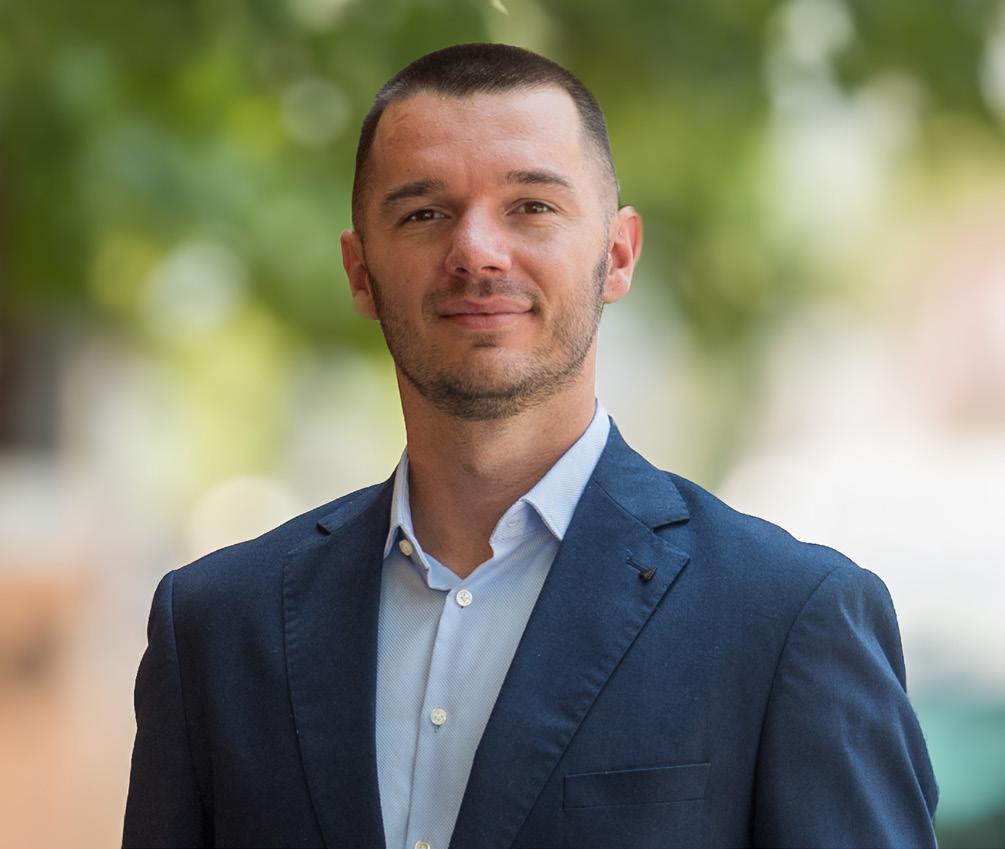
AI,
INFRASTRUCTURE ARE NO LONGER OPTIONAL — THEY ARE ESSENTIAL
other industrial sectors in our country?
I wouldn’t say that the attitude of foreign IT companies towards workers in Serbia can be described as colonial. The IT industry operates in a global market where talent is the key value and professional mobility is high. Because of this, companies—whether domestic or foreign—must offer competitive conditions to attract and retain the best people. The presence of foreign firms here brings new knowledge, technologies, and business standards, and often provides opportunities to work on projects of global scope. Our challenge is to strengthen the domestic IT ecosystem in parallel, so that in addition to playing the role of a reliable partner in global value chains, we also develop our products, brands, and intellectual property. The Serbian market has few companies that develop their products; there is much work to be done there, but I must admit it is not an easy task.
It is well known that salaries in your sector are far higher than the average salaries in Serbia. How do they compare, however, to salaries in the same sector in more developed countries?
Salaries in the IT sector in Serbia are still significantly above the national average, and some senior engineers, despite the current crisis, can earn between €5,000 and €9,000 net per month. However, our market is becoming increasingly expensive, which is also a confirmation of the quality of domestic engineers and the competitiveness of our companies. To maintain this advantage over other markets, we need to think systemically and build a predictable business environment. The state plays a key role in this by supporting the domestic IT sector, introducing tax incentives, and creating a stable and stimulating framework for further growth and development.
How does the IT sector in Serbia respond to global trends such as artificial intelligence, cybersecurity, and sustainable digital infrastructure?
Our IT community in Serbia is very active in areas such as artificial intelligence, cybersecurity, and sustainable digital infrastructure. There is a growing number of startups and teams developing AI solutions, and several international centres in Serbia are already working on advanced AI models and tools. Cybersecurity is an area in which domestic companies are already recognised, while sustainability and green infrastructure are becoming integral parts of every serious IT project.
Through the channels of the Serbian IT Association, we encourage domestic companies to join forces and compete for international projects, and gain new contacts and clients. At the same time, our global members such as Endava, Luxoft, Epam, DataArt, JetBrains, and other leaders in these areas provide excellent examples and first-hand knowledge. Our idea is for our smaller members to learn from the big players about AI, cybersecurity, sustainable infrastructure, and other “trend” topics, so that the entire sector keeps pace with the global market.
Where global fashion icons, innovative designers, and cutting-edge technology converge on the Montenegrin coast
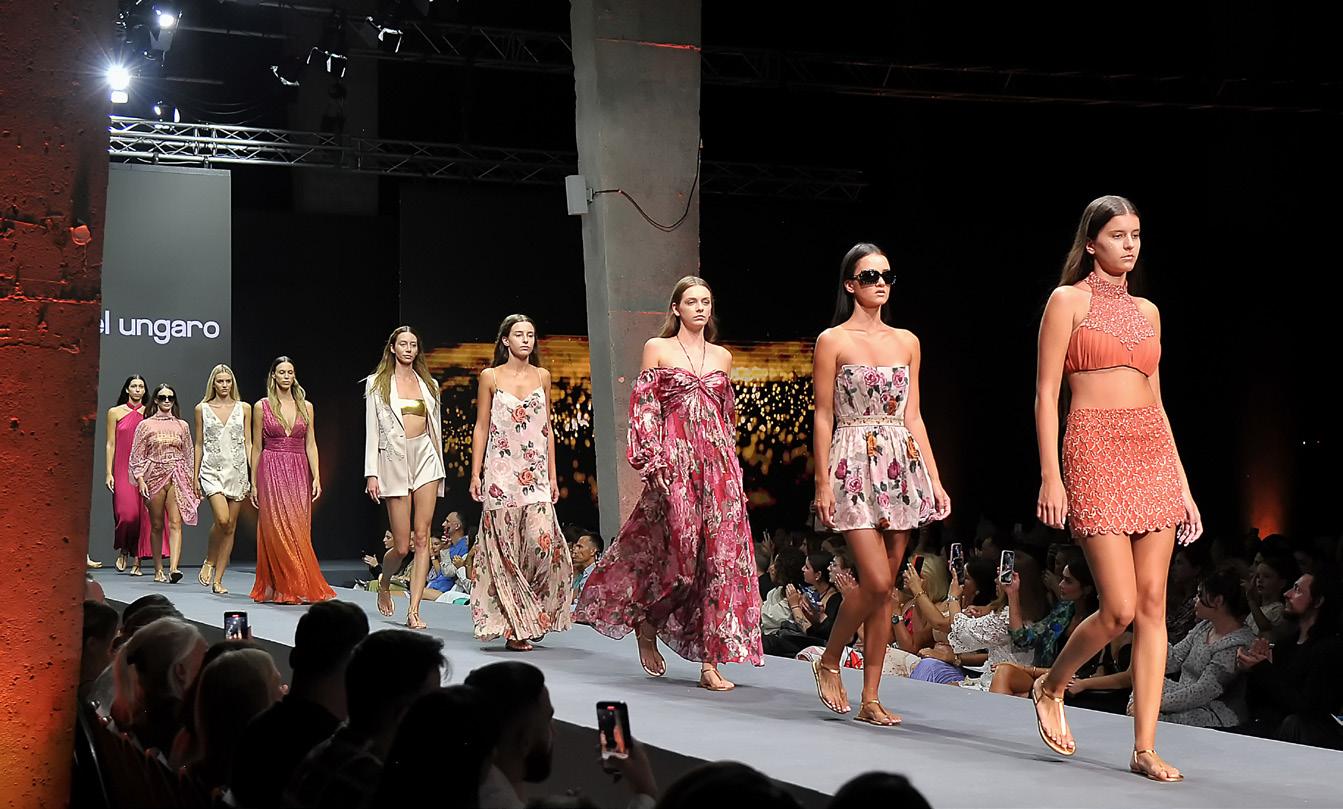
With a grand opening at the Synchro space in Porto Montenegro, the 7th International Fashion Festival –IFF PORTO MONTENEGRO 2025 – officially began last night Organised by the FABRIKA agency and Porto Montenegro, the event welcomed numerous distinguished guests and media from both the region and abroad, who walked the impressive “red carpet,” styled after the most prestigious fashion events in the world. At the opening ceremony, attendees were addressed by Vesna Mandić, director of FABRIKA, David Margason, General Manager of Porto Montenegro, and Sara Sozzani Maino, president of the festival, who officially opened IFF Porto Montenegro 2025.
A new feature of this year’s IFF is the appointment of the renowned Sara Sozzani Maino as president of the festival. She is the creative director of the “Fondazione Sozzani,” and Giorgia Virzi, president of GV-Studio Milan, serves as the official
A LANDMARK EDITION INTRODUCING SUSTAINABLE FASHION AND AI-DRIVEN DESIGN TO MONTENEGRO’S CREATIVE SCENE.

advisor. At Sara Sozzani Maino’s suggestion, this year’s festival introduced a new concept featuring innovative fashion shows and presentations of sustainable fashion by “new generation” designers with global recognition, alongside established, world-renowned fashion brands.
The first night of the festival was marked by two striking fashion shows that symbolically fused modern technology with a globally recognised fashion house.
The evening opened with a virtual fashion show, created in collaboration with the digital global platform Faith Tribe, a leader in digital and sustainable solutions for the fashion industry, and the Resonance brand.
Using artificial intelligence, Faith Tribe developed digital models based on sketches by six students: Maša Ivanović and Sofija Tijović from the Faculty of Design and Multimedia in Montenegro, Martina La Gatta from Istituto Marangoni in Florence, Daniele Pio Rosati from the Academy of
Costume and Fashion in Rome, and Sara Lopez and Emanuela Conte from the Fashion Institute in Miami. Representing the group, Sofija Stijović and Martina La Gatta took a bow at the end of the show.
This pioneering project marks the first application of Web3 technology in Montenegro’s creative industries. Special recognition was given to Montenegrin students Maša Ivanović and Sofija Tijović, further emphasising the festival’s mission of promoting local talent on a global stage. By participating in this show, all students secured free access to the platform for the next year.
Following that, the legendary fashion house Emanuel Ungaro presented its RESORT 2026 collection, debuting at IFF under the leadership of American designer Kobi Halperin, who has led the brand’s creative team since 2021. The show unveiled a fresh, modern vision of the brand –feminine, luxurious, and relaxed, designed for the modern woman.
Mirroring major global fashion shows, several well-known women whose style has been recognised by the Ungaro brand attended the show wearing pieces from the collection: Vesna Mandić, Dijana Đoković, Aleksandra Bojović, and Maja Abramović.
Thanks to the presence of key figures from the global fashion industry and numerous international media outlets, IFF Porto Montenegro has, for seven years, positioned Tivat and the Montenegrin coast as a prestigious global
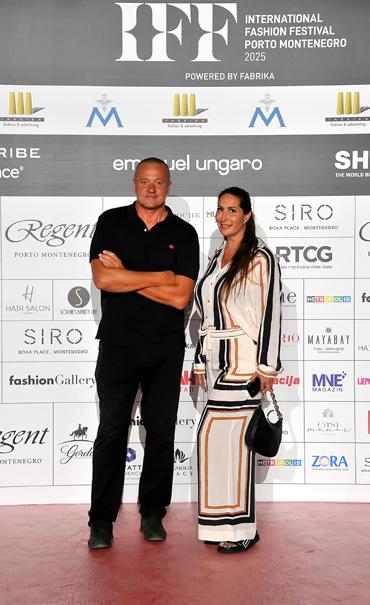

FROM
fashion destination. IFF Porto Montenegro brings together world-renowned fashion houses, designers, influencers,

media, and fashion enthusiasts from across the globe, creating a unique cultural and creative platform in the region.
During the festival, parts of the designers’ collections are on display at the Fashion Gallery store in Porto Montenegro.
IFF Porto Montenegro 2025 continues to build bridges between tradition and innovation, local and global, modern technologies and timeless elegance, confirming its status as one of the most significant fashion festivals in this part of Europe.

Warnings of declining revenues, lost markets, and the urgent need for a strategic turnaround

ŽARKO RADULOVIĆ
Founder and Co-owner, Montenegro Stars Hotels Group
Žarko Radulović, Founder and Co-owner, Montenegro Stars Hotels Group, does not soften his assessment of the state of the country’s tourism sector. In this interview, building on the remarks he made to the Podgorica daily Pobjeda in late July, he speaks openly about the absence of the peak season, declining revenues, rising taxes and fees that are stifling the industry, and the loss of key markets as a consequence of years of ignorance, inaction, and, as he puts it, perhaps even intent.
Do these assessments apply only to Montenegro or other countries in the region as well?
These assessments mostly apply to Montenegro. There are problems in other countries, too, but what
is happening here at the moment is unbelievable. It is as if we are deliberately taking steps that lead us toward a scenario for which we will pay a high price. Everything is in complete contradiction to common sense, professional expertise, and the basic principles of responsible governance. In a word — organised chaos. Our destination, once competitive with the strongest in the Mediterranean, is finding it increasingly difficult to keep up with our neighbours, who are breaking records. True, we also managed to set a record, but an inglorious one — for the first time in 20 years, Montenegro recorded a drop in both arrivals and revenue, and that was last year.
What are the main geopolitical factors in Europe and the world that have affected the current season’s results in Montenegro and Croatia? Political instability in Serbia, the escalation of the
Due to political and security developments in Serbia and the Republic of Srpska, the decline in arrivals from those countries is visible and significant this year. We have also directly felt the impact of the war in the Middle East. Israel has been a significant and fast-growing market for us over the past two to three years. This was confirmed by a strong early season, after which the expected peak season results completely failed to materialise. Something may improve in the post-season, but that will not be enough to offset the loss.
On top of all this, amid such global circumstances, the local approach has been one of ignoring reality — a “closed-eyes” policy.
A policy that assumes high revenues while, at the same time, undermining the very foundations on which tourism rests through ill-considered moves, thereby destabilising public finances.
Looking back, how would you assess the periods in Montenegrin tourism from 1990 to today: 1990–2005, 2006–2012, 2013–2020, and the past few years?
• 1990–2005:
ONE BAD YEAR IS DIFFICULT, BUT A SERIES OF BAD SEASONS IS A CATASTROPHE
war in the Middle East, the ongoing war in Ukraine…? Global political instability, and with it financial uncertainty, has inevitably affected tourism, which is the most vulnerable sector and always the first to be hit by such shocks. We have lost our traditional markets — Russians, Ukrainians, and Belarusians — who used to arrive in large numbers precisely during the so-called “peak season,” from mid-June to early September. Their arrival was once almost certain, and they were the guests who made the most intensive use of the summer season.
This was a period of political and social turmoil that destroyed tourism. Wars, sanctions, isolation, and the collapse of the state and system. By 2005, we had practically “consumed our substance.” Hotels were devastated, neglected, and unable to achieve prices that would ensure sustainable operations. Tourism was on its knees. In 2003, privatisation began, launching an investment cycle. Hotels were renovated, quality improved, and the first serious investments, including ours, appeared.
• 2006–2012:
Following the restoration of statehood in the 2006 referendum, tourism experienced a strong upswing. Montenegro increasingly positioned itself as a tourist destination. There was an investment boom, an increase in tourist numbers and flights, and the real estate market developed. The country gained its first five-star resort — the Splendid Hotel — through a privatisation process that was a rare success story compared to many unsuccessful or unrealised ones. However, even this period was not fully utilised due to administrative barriers, obstruction, and a lack of vision.

• 2013–2020:
This was a period of strong growth in both tourist numbers and revenue. The sector recorded continuous growth, especially in private accommodation, digital platforms, and a record-breaking year in 2019. At the same time, growth could have been much greater, but investors faced numerous business barriers, bureaucracy, and administrative inefficiency. From what I know alone, around €2 billion in planned investments, instead of being realised in Montenegro, were successfully carried out in Turkey, Egypt, and Italy.
• 2020–present:
A period I could never have imagined — a level of ignorance, arrogance, and irresponsibility in managing tourism. It is led by people who understand neither its essence nor its strategic importance. The 2014 Tourism Law, which positioned Montenegro among the 10 fastest-growing destinations in the world, was abolished. The first move of the new government was to shut down the national airline, which had brought in 600,000 guests the year before its closure. This loss could not be compensated. Instead, we got a new company with one and a half aircraft, and we now depend on foreign carriers, which particularly affects the pre- and post-season.
VAT on accommodation was increased from 7% to 15% in the middle of the year — an unprecedented rise in global economic terms. This was a direct blow to business and the destination’s competitiveness, forcing us to raise prices by an average of 17% while depriving us of the opportunity to communicate this to guests. The consequence — the destination became more expensive and less attractive, while VAT revenue has been declining. At the

THIS IS THE LAST MOMENT TO MOVE FORWARD — OR WE WILL SINK
same time, beach rental fees doubled, and administrative decrees increased wages.
Tourism has been left to the incompetent and subordinated to party interests. The economy carries the state on its back, while key budgetary sources are systematically neglected and undermined.
You have extensive experience in the hospitality industry — when you compare Montenegro and Croatia with other Mediterranean destinations, what lessons can be learned from the Italians, Spaniards, Greeks, and French?
It would be best to learn from their mistakes — to avoid repeating what they have already paid a high price for. That is the simplest and most effective way to progress.
You have said that abroad, a narrative has formed that “Montenegro is a beautiful Mediterranean country, but one to avoid in July and August.”
This is now being written by influencers and tourists in comments across Europe. Why do they think Montenegro should be avoided during peak season?
Montenegro is not prepared for the number of guests arriving in late July and throughout August. We do not have adequate service at airports and border crossings, traffic is poorly regulated, and congestion is enormous.
A guest landing in Podgorica or Tivat often spends more time travelling from the airport to the hotel than travelling to
Montenegro itself. Upon arrival at the hotel, they may forget the chaos, but if they decide to visit even Budva’s Old Town and take a taxi, the 3-kilometre ride may last 45 minutes and cost an inflated fare — their holiday is ruined. Nearly 150 kilometres of roads from north to south are under reconstruction, with works constantly delayed. If they are not under reconstruction, key routes are blocked, and both guests and locals are under stress. Due to the chaos and congestion, cleanliness also suffers, and municipal services lag in preparations. Permits for beach operations are issued in mid-July — in the height of the season — while already questionable tenders and procedures are cancelled. In such an environment, guests leave disappointed and unwilling to return.
How can several bad tourist seasons affect Montenegro’s economy and the euro as the official currency?
One bad year is difficult, but a series of bad seasons is a catastrophe. Tourism makes up around 30% of Montenegro’s GDP, and it is an export industry — that money comes from outside. We are not taking it from our citizens; we are bringing it into the system — it is money from people we managed to attract from all over the world, who spent it here.
We do not have a printing press to produce euros — if the next two or three years are bad, we could physically run out of euros. That is a real threat.
When you speak with foreigners, partners, guests, or ambassadors — what do they like most about
Montenegro, and what bothers them the most?
Foreigners are fascinated by the authentic nature, the diversity of natural beauty in a small area, and Montenegro’s rich cultural and historical heritage — from the sea to the mountains, from Kotor to Ulcinj. What surprises them, if not shocks them, is how unplanned, careless, and short-term our approach to this treasure is. They recognise the potential for developing sustainable and contentrich tourism, but are puzzled by how much we underestimate and directly endanger that potential.
How do you see tourism in Montenegro in ten years, in two scenarios: if the current trends continue, and if the authorities treat tourism as a strategic industry?
If things continue as they are now, we will turn back the clock to the 1990s — ruined hotels, debts, and the inability to operate sustainably. Once again, we will be waiting for new investors to rescue us, create a new concept, and repeat this cycle every 20 years.
However, we entrepreneurs are already organising. By the end of the year, we will form an expert body to develop an exit strategy — a clear, realistic, and constructive plan for what to do next. It will be a unified voice of the profession, able to articulate specific demands to the state more strongly. When someone eventually comes to power, they will have a document in their hands saying: “This is what we proposed, and you did the opposite. Now take responsibility.”
Because what is happening now is the result of enormous ignorance, unfounded self-confidence, and a lack of accountability. We are at a crossroads. This is the last moment to move forward — or we will sink.


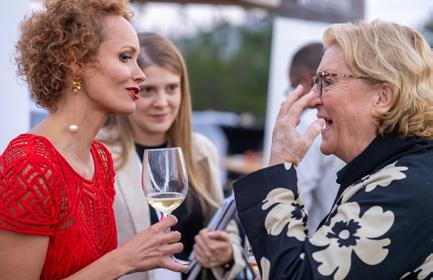
An immersive celebration of tradition, artistry, and gastronomy that redefines Zlatibor’s cultural and lifestyle scene.
On Friday, August 1st, 2025, Gold Gondola hosted a grand event titled GONDOLA ETHNO VIBE for its business partners, representatives of the economy and public life, and friends.
As a team that never settles for mediocrity and always raises standards, we believe we are contributing to branding the Zlatibor region as a modern centre and one of the most desirable places to live and work.
We believe this event marks the beginning of a new chapter in the growth of the Gondola as a place of meeting and connection,” said Bojana Božanić, Director of JP “Gold Gondola.”
Through a digital exhibition on LED totems accompanied by trumpet music, guests enjoyed a walk along the promenade to Ribničko Lake, where they experienced the Ethno Couture Serbia exhibit by Goga Grubješić, creator of the renowned Ethnology Fest, and celebrated art photographer Nebojša Babić
Titled “AJourneyThrough Tradition” andsupportedbythe Open-AirMuseum“OldVillage”in Sirogojno,theexhibitionseamlesslywovenintoZlatibor’slandscape
WHERE HERITAGE MEETS INNOVATION, CREATING EXPERIENCES THAT INSPIRE ALL SENSES.
showcased the richness and beautyoftraditionalSerbianattire asinspirationforhautecouture: modern,authentic,andpowerful.
A special guest of the event was Mira Šemić, Director of the prestigious French gastronomic guide Gault&Millau for Serbia and Slovenia. Known as the “yellow book,” Gault&Millau has been
setting culinary standards in Serbia for four years, elevating Serbian gastro-tourism onto the world map.
“I would be delighted to present this region even more to the world, because the Zlatibor area offers excellent ingredients, great homemade food, and masterful rakija,” said Mira Šemić.

Renowned chef and gastronomic expert Hadži Saša Mišić, this time in the role of host, presented a slow-food pairing of authentic Zlatibor bites with rakija through a performance called “The Mirror of Life”, where tastes, smells, and stories became part of a stage experience.
“Zlatibor cuisine is world-class cuisine. Today, the world was created here everything good, local, and useful came together, dressed in beauty and light,” concluded Mišić. Through an unforgettable aesthetic and sensory experience in the form of a performance, Gondola demonstrated that the global longevity trend is already present in Zlatibor. Guests also had the opportunity to enjoy unique health and beauty care rituals creatively designed just for them.
The stunning set design, created in collaboration with local artisans, featured fresh jam and pies cooked and served on a wood stove, a fashion show of knitwear, embroidery, calligraphy, jewellery, and artistic items, specially crafted cocktails, and food paired with world-class wines.
Over the weekend of August 2nd and 3rd, the event transformed into a Festival open to all visitors
Everyone visiting the Gondola during the weekend will be able to taste authentic flavours, purchase local products, participate in workshops, and enjoy numerous activations and surprises, all in an environment that sets new standards for events of this kind.
Media sponsors of the festival are magazines “Lepota i zdravlje” and “Diplomacy&Commerce”.



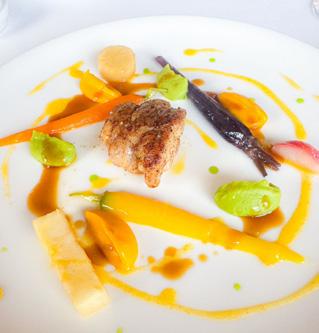

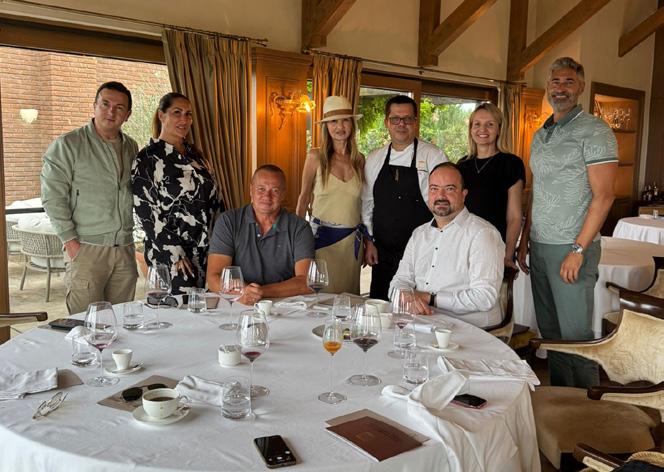
Members of the “Taste Awards” jury and representatives of the event’s general sponsor, Metro Serbia, visited the restaurant “Fleur de Sel,” whose Chef, Nikola Stojaković, was named the best chef in Serbia last year, as well as the “Dogma Brewery,” producer of the beer “Hoptopod,” which won the title of Best Craft Beer in 2024.
Nestled on the slopes of Fruška Gora, with a magical view of the Danube, between the villages of Novi Slankamen and Slankamenački Vinogradi, lies the Šapat Wine Atelier, which also houses the restaurant “Fleur de Sel,” led by Chef Nikola Stojaković. Last year, Stojaković was named the best chef in Serbia. On 30 July, members of the “Taste Awards” jury and representatives of Metro Serbia, the competition’s general sponsor, visited “Fleur de Sel” and enjoyed specialities prepared by Stojaković, paired with some of the finest wines from this winery.
After 13 years spent in the most luxurious restaurant and hotel kitchens in Paris, Nikola took over the kitchen at Šapat Wine Atelier in 2022. He honed his craft in French establishments awarded from one to three Michelin stars, including the Four Seasons
He believes that details are what separate a good restaurant from an excellent one and is confident that “Fleur de Sel” will become one of the finest restaurants in this part of the world. For the past six years, he has been mentoring and leading top chefs.
George V, Park Hyatt Paris Vendôme, Le Pré Catelan, and Lasserre – one of the oldest restaurants in the French capital. He identifies precision and discipline in food preparation as the core of his gastronomic philosophy. After more than a decade abroad, he decided to return to Serbia to bring his exceptional culinary skills home, blending French techniques with Serbian ingredients.
The tour of the winery and restaurant for guests was organised by Dušan Vranić, Director of Šapat Wine Atelier. Since 2022, Vranić has served as General Manager of the Šapat Wine Atelier restaurant complex, returning to Serbia after 16 years in the United States to apply his knowledge at home. He entered the wine world through the Wine School of Philadelphia, where he later became an
instructor. Upon completing this school, he attended the prestigious Court of Master Sommeliers, becoming a certified sommelier and continuing on to the advanced programme, which allowed him to perfect his skills during visits to some of the world’s most renowned wine regions.
On 6 August, members of the “Taste Awards” jury and representatives of Metro Serbia visited “Dogma Brewery,” whose beer “Hoptopod” was named “Best Craft Beer in Serbia” last year. Guests were welcomed by Dragan Stojković, the brewery’s Sales Director, who shared the story of its beginnings and introduced the brands they take pride in. “Dogma Brewery” is located in the former sugar warehouse of the Old Sugar Factory in Čukarica.
The “Taste Awards 2025” competition will officially open on 30 September this year, with restaurants, chefs, winemakers, brewers, and food producers able to apply in 25 categories.
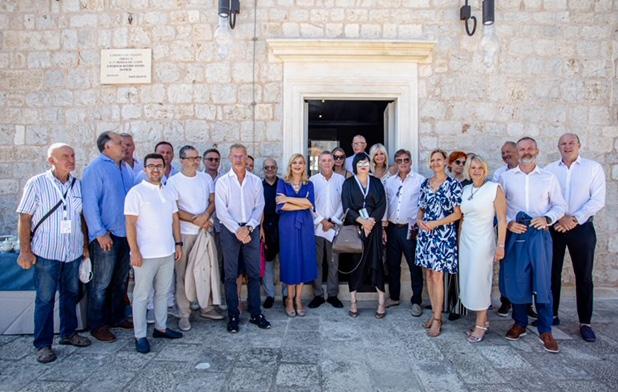


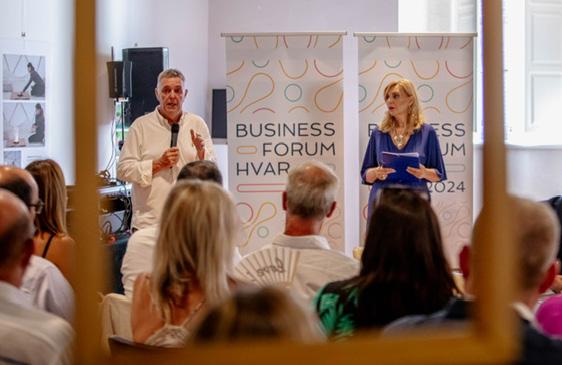
Leading voices from economics, tourism, energy, and sport will gather in Dubrovnik to discuss global trends, regional challenges, and opportunities for investment.
Following last year’s edition of the Business Forum in Hvar – the largest conference dedicated to the economy and tourism last summer – we are pleased to announce the return of the Business Forum in an even bigger and better format.
The international conference will take place on 12 and 13 September 2025 at the Valamar Dubrovnik Hotel, under the patronage of the Ministry of Tourism and Sport of the Republic of Croatia, the Dubrovnik-Neretva County and the Croatian National Tourist Board. Organised by Topmedia d.o.o., the event will feature four panel discussions: Where is the Global Economy Heading?,TheImpactofthe
Global Economy on Croatia and the Region, Energy and the Green Transition, Overtourism in 2025: Trends in the Region, and There is No Biz Like Sport and Showbiz: Truth or Myth?
Zlatko Mateša, President of the Environmental Protection and Energy Efficiency Fund Luka Balen, Chairman of the Supervisory Board of Hajduk Ljubo Pavasović Visković, Adidas Design
AN UNMISSABLE GATHERING FOR LEADERS SHAPING THE FUTURE OF THE ECONOMY, TOURISM, ENERGY, AND SPORT IN CROATIA AND BEYOND.
An exceptional line-up of panellists will include the Governor of the Croatian National Bank Boris Vujčić, Minister of Tourism and Sport Tonči Glavina, President of the Croatian Olympic Committee
Director Vincent Etcheverry, President of Color Press Group Robert Čoban, and many others.
The conference is supported by main media sponsor Nova TV, along with TV Libertas, portal
Libero, and Dubrovački dnevnik as media partners. Sponsors include Privredna banka Zagreb, HEP, Dubrovnik Airport, the Croatian Chamber of Economy, the Environmental Protection and Energy Efficiency Fund, Telemach, Zepter, Končar, Jadrolinija and Coca-Cola. Conference partners are AMCHEM, Color Press Group, Diplomacy and Commerce, Culture Club Revelin, St. Pietro Restaurant and Lounge Bar, and Moro Beach Bar.
The Forum will be officially opened by Blaž Pezo, Prefect of the Dubrovnik-Neretva County, and moderated by Mr Vladimir Nišević, editor-in-chief of Forbes Croatia. Business Forum Dubrovnik 2025 is powered by EXPOSE Entertainment Group.

The enduring appeal of radio in a changing media landscape
MAJA RAKOVIC
Owner, Editor-in-Chief of Naxi Radio
President of the Representative Association of Radio Stations of Serbia and the Self-Regulatory Body RAB Serbia
Maja Raković, Owner and Editor-in-Chief of Naxi Radio and President of the Representative Association of Radio Stations of Serbia and the Self-Regulatory Body RAB Serbia, discusses the resilience of radio, its adaptation to new technologies, and its place in today’s media world.
Radio in Serbia has a long tradition — how do you see its current position about television, print, and digital platforms such as Spotify, YouTube, and social media?
I am certain that radio is a medium with a tradition that will last forever. In the past, there were predictions that it would be replaced by television and later by new media, but that never happened. Radio has survived, adapted, and become increasingly listened to. Today, I believe there is room for everyone — each medium has its audience and its own role. Radio is special precisely because it is personal. I often like to say that the radio is a person’s best friend. It is the only medium that follows you everywhere — in the car, at work, at home, when you are alone and seeking a moment of peace — and speaks to you directly, like a friend. The host familiarly addresses you, telling you what you need to hear — where to avoid traffic, where to

go to relax. In life, we all choose what brings us beauty, comfort, and joy, and the radio offers us that every day. Naxi Radio, which I have owned and edited for over 30 years, carries the message “Relax and enjoy!”. Whether it’s snowing, raining, or sunny outside, the songs and voices you hear evoke beautiful memories and emotions. Many people fall asleep to the radio because it brings them peace, unlike news programs, sad movies, or TV series before bedtime. Unlike platforms such as Spotify and YouTube, where you choose songs and are offered what you have already listened to, radio has a great advantage — the element of surprise. You never know which song will come next, and each one stirs a new emotion. I see the future of radio as very promising — it is present on digital stations,
RADIO IS THE ONLY MEDIUM THAT FOLLOWS YOU EVERYWHERE AND SPEAKS TO YOU DIRECTLY, LIKE A FRIEND
through podcasts, and on applications such as Naxi Player, which was a pioneer of this kind in our country. Radio changes and adapts to the times, but it remains forever unique and, most importantly, stays with its listener as their best friend.

How loyal are domestic listeners to radio compared to global trends, and what is the key to attracting younger generations?
Domestic listeners are extremely loyal to radio. When choosing a station, they first look for music they enjoy — which immediately connects them to it. Content and short, clear news are also important, where in just a few minutes, they hear everything they need before returning to music and stories that brighten their day. People love that rhythm and continuity and remain loyal to the radio that provides it. Today, listeners rarely change stations because of commercials, as in recent years we have learned to make ads shorter and carefully integrated, so they are perceived as a natural part of the program. When it comes to younger generations, their listening habits follow a slightly different pattern. Modern research shows that they also turn to radio, but often prefer personalised playlists. Interestingly, radio often enters their lives through their parents. Many begin to love the very stations they grew up hearing at home. Research confirms that not only is the choice of station passed down, but also the love for certain songs and artists. Naturally, their relationship with radio differs from that of those over thirty, but it remains present in their lives, just in a slightly different way.
How do programming schedules and the way shows are hosted adapt to an audience that today expects fast, personalised, and interactive communication?
About twenty years ago, I was one of the first advocates of radio station formatting in our country. This was something we learned from experienced consultants from England and the United States, who, through market research, showed us what the audience truly enjoys listening to. They also taught us one of the most important lessons — that every radio station should be dedicated to one clearly defined target group. You cannot be a station tailored to everyone; you must carefully choose your target audience and adapt everything to that audience. You cannot be a station that caters to all generations — you need to decide what type of station you want to nurture and what you want

ONLY THE PLATFORMS WILL CHANGE, BUT RADIO WILL REMAIN TRUE TO ITS ESSENCE
to be recognised for. When you focus on your target group, listeners quickly recognise and appreciate it, and anyone outside that group who happens to enjoy the station is, of course, welcome. I am certain this is the right path to a quality radio station and the heart of every listener.
What are the biggest differences between the domestic and global radio markets in terms of trends, challenges, and opportunities? There is not much difference. All of us who run radio stations are truly one big family. We openly share knowledge and experience, aware that this way we elevate the entire radio industry and, in turn, each of our stations. This approach has proven to be an excellent path. In Serbia, we have Radio Days, organised by RAB Serbia, of which I have been the proud president for 18 years, and whose members stand shoulder to shoulder with global radio stations. Our goal has always been that when you hear the radio in Serbia, you feel no difference compared to any world station. I have had the privilege of learning from the BBC, as well as from Heart and Magic stations in London. It is wonderful that such professionals are willing to share their knowledge and inspire others to be better. That is why Radio Days in Serbia, as well as in Europe, gather people from the industry several times a year, where, through panels and lectures, we exchange experiences and learn from each other. Today, we truly discuss the same topics and follow the same trends, whether you are in Belgrade, London, or New York.
How do you assess the position of the media and the level of media freedom in Serbia, and what is the radio’s impact on shaping the public narrative compared to other channels of information?
Radio is, above all, here to entertain, relax, and make the listener happy, bringing new and engaging content. Our focus is on music, shorter program formats, and concise news. Our listeners get everything they need in one place without disrupting the atmosphere of relaxation. We also have what we call a “class schedule” — we know when our listeners wake up, have their first morning coffee, and we adapt our content to those moments. This is how all modern, formatted radio stations around the world operate. Unlike public service broadcasters, which have a different role, radio does not deal with debates and opinions but with music and entertainment. In commercial stations such as Naxi Radio, freedom is complete. We strive to make the program perfectly suited to our listeners. Global research shows that people trust radio more than any other medium. As editor-in-chief, I have had the freedom to decide what will be heard on air for more than 30 years.
How does Naxi Radio maintain its distinct identity, attract new listeners, and preserve content quality?
I remember our early days and how important it was for people to recognise that Naxi Radio was different — that it nurtured
domestic pop music and the music of the entire region. We have never changed that concept, as I believe the biggest mistake is abandoning what makes you recognisable. A major turning point in our identity came with the famous Naxi Beach in front of Ušće, where, during the summer, at a time when many could not go to the seaside, we brought in tons of sand, deckchairs, built playgrounds for children, sports courts, and a large stage hosting performances by our most famous artists. People enjoyed free activities, concerts, and unforgettable nights. Today, our listenership continues to grow, and we have built their trust. We keep pace with the times and have developed over 30 digital radio stations, united in the free Naxi Player app, which offers numerous podcasts — from children’s fairy tales to travel, cooking, fashion, and medicine. The cult show “My 50” remains part of the program, while other shows have gradually evolved into a podcast format. We are also proud of our annual Naxi Star awards at the Terazije Theatre. There is also the Beogradsko Proleće festival, for which I serve as artistic director, promoting new pop music and young talents. Every year, we celebrate Naxi’s birthday with music and gatherings of well-known personalities — just as we do with our listeners every single day.
How do you see the future of radio in the next decade, and what continues to inspire you personally in this work?
I see a bright and promising future for radio. It will continue to develop alongside platforms, always finding its way to listeners. When the internet appeared, I said it would only give radio wings — and that’s exactly what happened. Today, Naxi is present on all platforms, from Radioplayer to our Naxi Player app, with digital stations and podcasts that are part of our listeners’ everyday lives. I have always imagined the future of radio through multitasking — while people work, spend time with family and friends, the radio plays softly in the background. Only the platforms will change, but radio will remain true to its essence. FM will keep its form, while digital formats will follow the new times and new generations. We will preserve, adapt, and develop our radio, because radio is not just sound — it is an emotion that follows you wherever you are.
On a Belgrade debut, Armenian roots, and the universal language of music
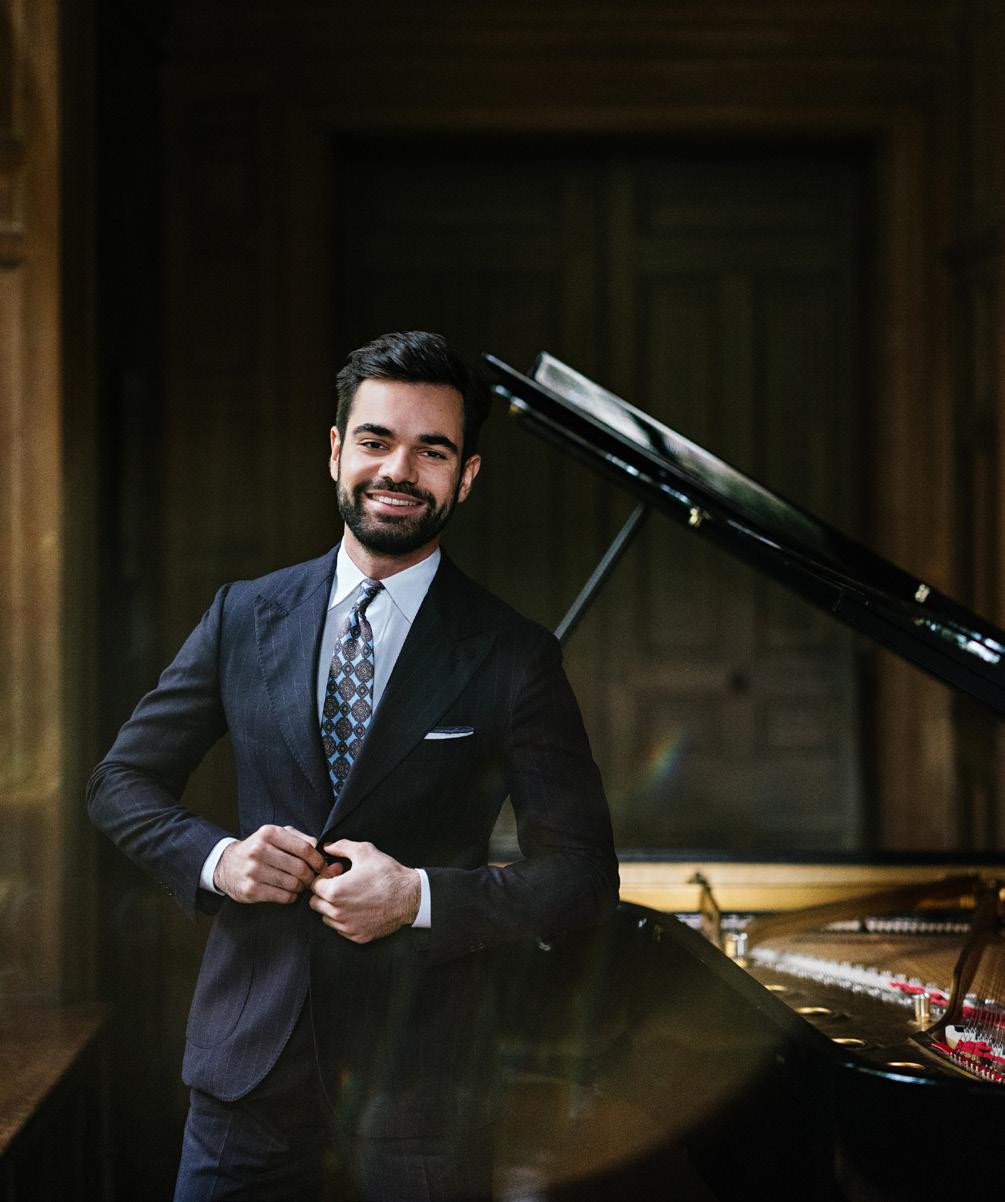
GASPARIAN
This interview was given during the musician’s guest performance with the Belgrade Philharmonic at the end of May, organised by ArtLink. The concert took place on May 30, 2025, in the Grand Hall of the Kolarac Foundation as part of ArtLink’s programming.
This will be your debut performance with the Belgrade Philharmonic. How are you preparing for this collaboration, and what can the audience expect from the concert on May 30th at Kolarac?
First of all, I would like to say that it was an honour and a pleasure
to collaborate for the first time with the Belgrade Philharmonic Orchestra. Belgrade is a city that holds a special place in my heart, as it is my mother’s hometown.
a shared evening with Michel Dalberto celebrating the 100th anniversary of the Armistice in 2018, to a New Year’s Eve Gala at the iconic Sava Center, not to men-
EVEN THOSE WHO HAVE NEVER HEARD OF ARMENIAN TRADITION CAN BE MOVED BY THIS MUSIC
My first concert there took place eleven years ago, in 2014, when I had the opportunity to perform Rachmaninoff’s Piano Concerto n.2 with the Radio-Television Orchestra under Maestro Bojan Sudjic. Since then, I had the chance to play some memorables concerts in Belgrade, from
tion an unforgettable open-air solo recital at Kalemegdan Park, just beneath the “Pobednik” Statue, in 2020. This time was also strongly emotional, as I was performing a piece - Khachaturian’s Piano Concerto op.38 - that echoed my own family roots. I was more than happy to team up with conductor
Daniel Raiskin and the formidable musicians of the BPO.
Your album Origins is dedicated to Armenian musical heritage. How did you select the repertoire for this project, and in what ways has your Armenian background influenced your interpretation of these works? I have been exploring the Armenian piano repertoire, which my father, of course, introduced to me when I was a child, for more than ten years now. I first started to play, as encores at the end of my concerts, some short pieces by Arno Babadjanian, like the Prelude & Vagharshapat Dance, for example. I immediately noticed that the audience was reacting very positively, even enthusiastically, which certainly encouraged me to continue on this path. An important milestone was the recording, in 2021, of Babadjanian’s Heroic Ballad (together with Rachmaninoff’s Piano Concerto n.2) with the Bern Symphony Orchestra under Maestro Stefan Blunier, for Claves Records. Finally, after dedicating several solo albums to Chopin, Rachmaninoff and Debussy, I felt that it was the right moment to build a project entirely devoted to Armenian solo piano music. I selected four different composers (Komitas, Khachaturian, Babadjanian, and my father, Gérard Gasparian), representing nearly the entire 20th century. My idea was to show the extreme diversity of Armenian music (going from the mystical simplicity of Komitas to the flamboyant and polyphonic pianism of Babadjanian, from lyricism to percussiveness, from melancholy to jubilation, from Romantic expression to experimental Dodecaphonism, etc.), and at the same time its profound unity, which is given by its folk roots.
The album includes compositions by your father, Gérard Gasparian, inspired by the poetry of SayatNova. What was it like to perform music that is both a part of your family legacy and a cultural tradition?
Having the opportunity to work on a piece with the composer himself is always an incredibly enriching experience. All the more so when it happens that the composer is your father! While thinking about the program of Origins, my father’s Ballade and Poème came to mind immediately because - and this is not the case with all of Gérard
Gasparian’s compositions, obviously - those two have an explicit link to Armenian tradition, as they are based upon songs by the legendary poet from the 18th century, Sayat Nova. Furthermore, it seemed interesting to put them together because, even if they were written almost simultaneously, in 1988/1989, and even if they share a common inspiration (Sayat Nova), they present two very contrasting musical universes. While the Ballade is reminiscent of Babadjanian, with its polyphonic and virtuosic pianism, the Poème is a more meditative piece in my opinion, which, in terms of harmonic language, is much closer to French music. That’s another perfect example of the multiple, and virtually infinite styles and aesthetics, in which composers can appropriate a common folk reservoir. It was also a beautiful way of illustrating the personal trajectory of my father, who was born in Yerevan before moving to France with his family as a teenager.
How do elements of traditional Armenian music, such as rhythms and melodic patterns, influence your interpretative style and repertoire choices? In the booklet of my album Origins, I quoted Sergei Rachmaninoff saying that “those countries which are the richest in folk songs are naturally the ones to develop the greatest music”. There is an apparent paradox that is of great interest to me. If you take Armenian music (but that is not the only example, of course), it is rooted in a very specific cultural context, and it constantly nourishes itself from the rich repertoire of Armenian folk songs, melodies, dances, etc. But at the same time - and this is something that never ceases to fascinate me - people that have no familiarity whatsoever with Armenian tradition can be moved, touched, and amazed by this music. That proves its universality: it is capable of transcending epochs and cultural spheres. Even if its source is very specific, very particular, it can speak to everyone, everywhere. That is the sign of a truly creative appropriation of local folklore.
This relationship with Armenian music that I have been cultivating for many years surely incited me to explore more intensively the works of authors that drew inspiration from popular traditions: Debussy, Bartók, of course, a lot of Russian, Spanish, American composers as well...

FRENCH,
COMPOSERS HOLD A SPECIAL PLACE IN MY REPERTOIRE
Although you were born and raised in France, how has your Armenian heritage shaped your artistic identity, and how does that connection manifest in your work?
My family roots as well as my musical background are a crossroad of influences. As I said before, my father helped me discover the richness of 20thcentury Armenian music. But as a profound lover of French repertoire, he also made me listen,
from a very young age, to the treasures of Debussy and Ravel, for instance. My mother, born in Yugoslavia, who studied at the legendary Gnessin Institute in Moscow, is the one who gave me the very first piano lessons, transmitting a precious pedagogical knowledge inherited from the Russian School. During my studies, I had the chance to learn from both French and Russian masters, given that in parallel to my lessons at Paris Conservatoire

with fantastic musicians such as Jacques Rouvier, Michel Beroff and Michel Dalberto, I followed the advice of highly inspiring personalities such as Tatiana Zelikman and Elisso Virsaladze during masterclasses abroad. I guess that this mixed background naturally reflects itself in my playing and in my repertoire, where French, Russian and Armenian composers hold a special place.
Are there any future projects planned that will further explore Armenian musical traditions or feature collaborations with Armenian artists? I am planning to continue including Armenian music in my programs. I recently had the opportunity to perform for the first time Gagik Hovunts’ Piano Concerto in Yerevan with the Armenian State Symphony Orchestra, and I am currently working on another solo masterpiece by Arno Babadjanian, the Six Pictures, that I will start performing from next season. We are also elaborating some very interesting projects with contemporary composer Michel Petrossian, based in Paris. Then I would like, in the near future, to play my father’s Sonata, for solo piano, which is an ambitious, half-hour work. One of my dreams would be to record Khachaturian’s op.38 one day as well, as it is a piece that, in my opinion, deserves to be considered among the greatest piano concertos of the last century.
Who was The Gabi Novak? How did we, posthumously, rediscover her legacy, and why did her passing from natural causes, even at the age of 90, move us so deeply? As this obituary is translated into English to resonate with the diplomatic community in Belgrade, it is important to note the use of the definite article before her name — Gabi was not just anyone. Like Queen Elizabeth, she was the very synonym of a bygone era of a better, more beautiful life, one for which the entire region of the former great state has felt a deep nostalgia for nearly four decades since its wartime collapse. Gabi Novak was, moreover, part of what was arguably the most illustrious artistic family of the former Yugoslavia, alongside her husband, Arsen Dedić — perhaps the greatest pop singersongwriter of them all — and their son, Matija Dedić, a celebrated jazz pianist whose renown extended far beyond Zagreb and Croatia, their homeland, to encompass Belgrade, and from Ljubljana through Sarajevo to Skopje. Gabi Novak’s musical stature and artistry may well be compared to that of Josephine Baker, Billie Holiday, and Ella Fitzgerald. Born in Berlin in 1936 to a German mother, Gabi Novak spent her childhood in Zagreb and on the island of Hvar, her father’s native place. Though he perished in the tragic
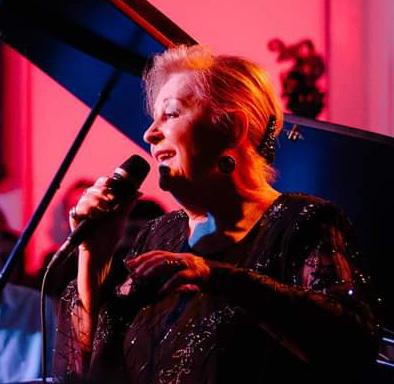
circumstances surrounding the establishment of the new communist state, she, as his only daughter, would never harbour resentment toward the country in which she would become a member of its cultural elite. In that simple biographical detail lies a portrait of her exceptional integrity — the very quality her contemporaries, biographers, and fellow artists recall when they speak of her today. All the epithets that would shape her charisma emerged from the shadow of her husband, Arsen Dedić.
The life and career of Gabi Novak were a Mediterranean counterpart to a Hollywood blockbuster such as La La Land, beginning with an unpretentious start as an animator at the Zagreb Film studios in the 1950s. As fate so often arranges, from lending her voice in dubbing — thanks to the titan of film music, Slovenian composer Bojan Adamič — she began singing covers of Western standards. The closing circle of her career is directly tied to the Serbian, then Yugoslav, capital. One of the most urbane city tales, the local parallel to Italy’s Dolce Vita, was the 1960 musical Love and Fashion,
in which Gabi performed her first hit, “Love or a Joke.”
Her final concert in Belgrade took place in 2018, in the hall named after her husband Arsen Dedić at the Parobrod Cultural Centre in Dorćol, accompanied on piano by her son, Matija Dedić. The entire event was generously supported by the then Ambassador of the Republic of Croatia to Serbia, now serving in Germany, H.E. Mr. Gordan Bakota, as well as Mrs. Nena Scott, wife of the U.S. Ambassador to Belgrade. It was not so long ago, yet it already feels like a bygone era when diplomatic missions and cultural centres came together to listen to and perform jazz and popular music.
Between that beginning and that end stands the entire life of Gabi Novak, marked by hits created not only by Arsen but also by other great musicians of the region: Hrabri ljudi (Brave People), Pamtim samo sretne dane (I Remember Only Happy Days), Vino i gitare (Wine and Guitars), Kuća za ptice (A House for Birds), On me voli na svoj način (He Loves Me in His Own Way)… In her tone, as in Arsen’s, there was an innate, authentic refinement that
GABI NOVAK (1936 – 2025)
set them both apart. In Croatia, perhaps more than anywhere else, she was followed by the likes of Tereza Kesovija, Josipa Lisac, Meri Cetinić, Doris Dragović; in Serbia by Lola Novaković, Nada Knežević, Bisera Veletanlić, Slađana Milošević. And if there were a top ten of Yugoslav female singers, Gabi would stand at its very top, in the first place.
In the fleeting moments of the past nine months, people have longed for the return of ordinary life, for empathy as a form of psychotherapy. Much like the death of Vlada Divljan, the eternal boy of Belgrade’s pop scene, in 2015, the news of the sudden passing of Matija Dedić in June of this year struck with equal force. When Arsen passed away later that same year, it felt as though all the tears had already been shed. Now, in sum, the city felt both the duty and the need to bid farewell to the Dedić family — concluding with Gabi — even before Zagreb itself.
In the entire post-war history of pop culture, the local iconography rested upon two great couples: in film, Milena Dravić and Dragan Nikolić, and in music, Arsen and Gabi. With her final departure, an era and a story from a better past came to an end. Yet in such a powerful memory, she remains another chapter in the tangible existence of a country which, though no longer formal, still lives on in the minds, hearts, and souls of people from Belgrade, through Sarajevo, to Zagreb.
AUGUST 2025
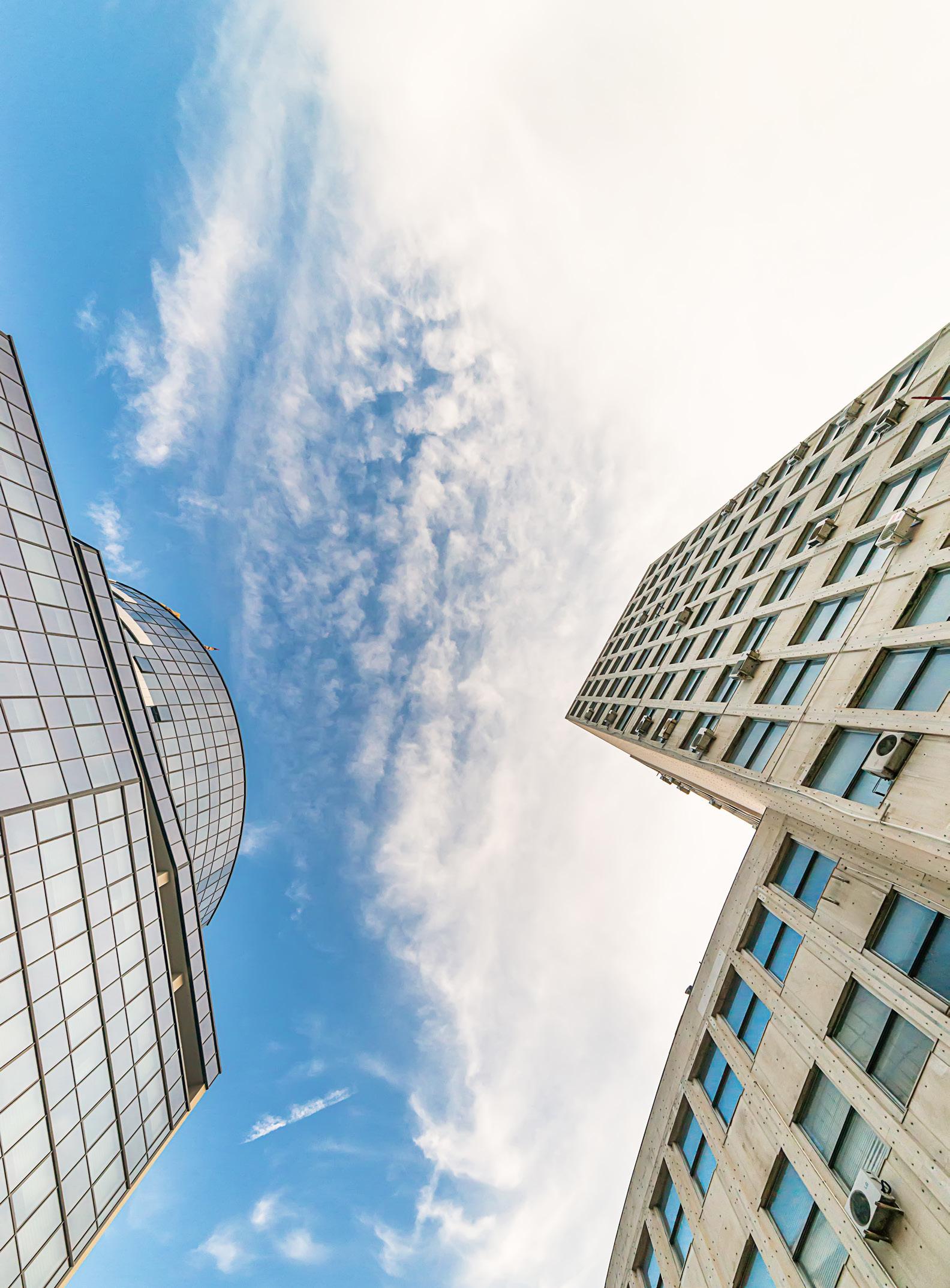
IN TALKS
BUILDING SERBIAʼS FUTURE THROUGH STRATEGIC INFRASTRUCTURE
Aleksandra Sofronijević Ministry of Construction, Transport and Infrastructure
REAL ESTATE REPORT
BELGRADEʼS RESIDENTIAL MARKET REPORT
+ Highlights Key Construction Sites and New Trends
The fi rst 100 days bring new roads, corridors, and projects aimed at balanced growth and stronger connectivity

In its first 100 days, Serbia’s Ministry of Construction, Transport and Infrastructure has achieved significant progress in infrastructure development, through the construction of new roads and the implementation of key projects across the country. According to Minister Aleksandra Sofronijević, these works not only change the face of the country but also ensure balanced regional development and stimulate economic growth.
“The ‘Miloš Veliki’ motorway section from Pakovraće to Požega, 19.56 kilometres long, has been opened. We have added new kilometres of expressways, reconstructed local roads, built and renovated railway lines, opened a new runway at ‘Nikola Tesla’ Airport, and introduced new flight routes from Belgrade and Niš,” the minister said, adding that these are only part of the results of her team’s dedicated work.
Construction continues on the Morava Corridor, which, she noted, will significantly improve living conditions for 500,000 people in Kraljevo, Kruševac, Vrnjačka Banja, Trstenik and surrounding areas. At the same time, work is underway on the Danube Corridor, with the aim of developing both the western and eastern parts of the country equally. Final works are being carried out on the Sremska Rača – Kuzmin
OPENED KEY MOTORWAY SECTIONS, LAUNCHED MAJOR CORRIDOR PROJECTS, AND IMPROVED AIRPORT AND RAIL INFRASTRUCTURE
ACROSS SERBIA

motorway, 18 kilometres in length, and the 1,320-metre bridge over the Sava River.
Sofronijević also pointed to the construction of the Fruška Gora Corridor, with the longest tunnel in Serbia, the “Smile of Serbia” expressway, and the Belgrade – Zrenjanin – Novi Sad motorway, which will significantly improve Vojvodina’s connectivity.
Beyond road infrastructure, attention is being given to the reconstruction of the Port of Prahovo, the third phase of the Niš – Dimitrovgrad railway reconstruction on the Sukovo – Dimitrovgrad section, which will be electrified and capable of speeds up to 120 km/h once the 86-kilometre stretch is completed.
Among other major initiatives, the minister highlighted the Integrated Development and LIID projects, implemented in cooperation with international partners. These include the reconstruction and construction of local roads and streets, the arrangement of parks, the construction of pedestrian and cycling paths, the improvement of energy efficiency, and the enhancement of traffic safety — all based on priorities identified by local governments to improve quality of life.
“All these projects, whether major state undertakings or those that directly impact everyday life, will allow every part of Serbia to develop evenly. Every city will be able to attract new investment, and every town and village will have safe and quality roads — meaning more jobs and greater chances for young people to stay in their communities,” Sofronijević stressed.
She concluded by saying she is satisfied with the results so far, but there is still much work ahead.
“There are still places in Serbia where sewer systems, railways and asphalt roads are needed. There are rivers that we must bridge so that the whole country is connected, and every citizen has equal development opportunities,” the minister said.
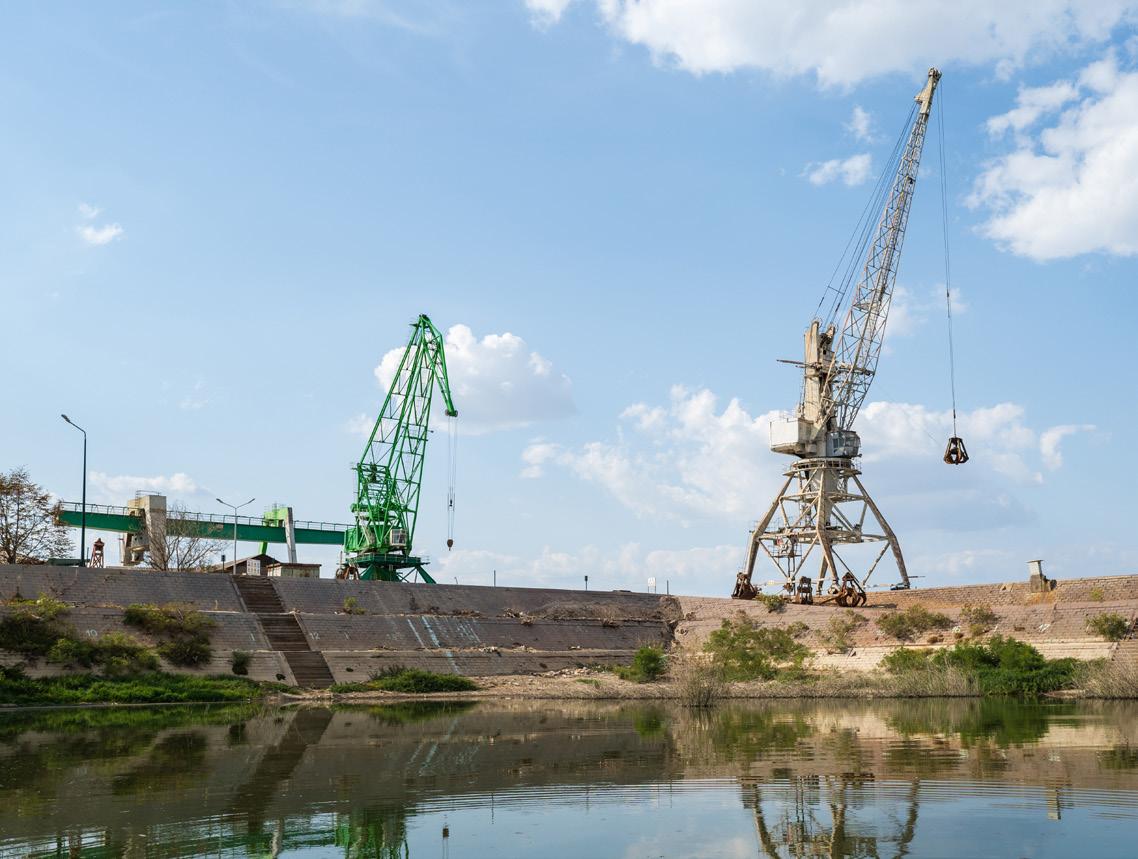
Delta District blends luxury, sustainability, and investment potential in Belgrade’s prime location

In recent years, Belgrade has positioned itself as one of the most dynamic real estate markets in Southeast Europe, attracting a growing number of international investors. Its strategic location, rapid development, and potential for urban infrastructure transformation make it a city worthy of long-term investment.
In this context, Delta District, a project by Delta Real Estate, stands out as a game-changing development. With a value of €450 million and more than 100,000 m² of carefully designed space, the complex blends luxury residences, Class A business facilities, and the return of the InterContinental Hotel to the Serbian capital. This combination of a prestigious brand, prime location, and world-class amenities has never before been seen in Serbia, offering investors a rare opportunity to be part of a project already defining a new standard for Belgrade’s urban development.
“Our capital has the potential to position itself as a key destination for premium real estate in the region. Our goal is for the Delta District to become synonymous with top-quality, innovative concepts and sustainable development – a project that offers investors and owners security, prestige, and long-term value. With investments like this, we are building not only properties but also a new map of luxury living in the capital. This complex is our
answer to the question of what Belgrade could look like in 10, 20, or 30 years – a city standing shoulder to shoulder with the world’s greatest metropolises,” said Angelina Nekić, Vice President of Delta Holding and CEO of Delta Real Estate Group, in a statement for Diplomacy&Commerce
With its architecture and construction concept, Delta District aspires to become Belgrade’s new landmark and a defining symbol of the capital’s modern identity.
Located at a prestigious address within the city’s business district, the complex brings together two luxury residential towers, a Class A office tower, and the InterContinental Hotel, returning to Belgrade after more than two decades. Residents and tenants will enjoy services and amenities never before seen on the domestic market – from an exclusive concierge service and professional complex maintenance to access to the hotel pool, room service, spa and wellness centre, fitness facilities,

and fine-dining restaurants, all in line with five-star hotel standards.
Of particular appeal to investors are the fully furnished one- and two-bedroom serviced apartments, ready for immediate use or rental. Designed to the highest sustainable building standards, they ensure energy efficiency and long-term investment profitability.
“These apartments combine prestige with secure investment value. The connection to the InterContinental Hotel brings not only an additional level of service but also the global credibility of a brand that, in leading world capitals, has proven to be a guarantee of stable value growth. Investors here are acquiring a market-ready product capable of generating immediate income, as well as an asset that becomes increasingly desirable over time,” said Angelina Nekić.
An additional advantage for legal entities is the possibility of reclaiming 20% VAT, significantly impacting the speed of return on investment.
“Our strategy is clear – we are creating a space that will retain its value for decades, adapt to market changes, and remain equally attractive to both domestic and foreign buyers. The interest we have already seen at this early stage of construction shows that the market recognises this standard. People want security but also inspiration – and Delta District offers precisely that combination,” Nekić emphasised.
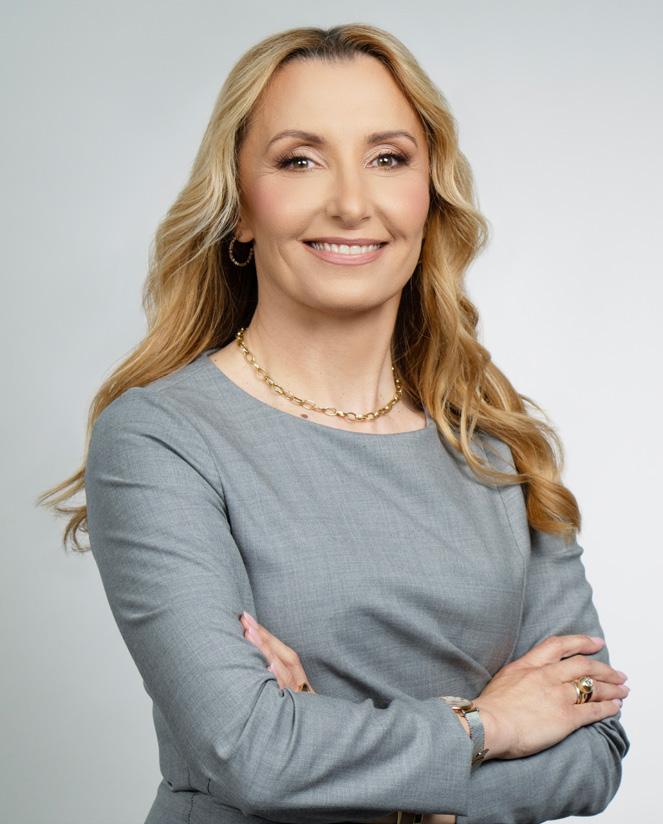
ANGELINA NEKIĆ Vice President of Delta Holding and CEO of Delta Real Estate Group
€450M
Construction work is progressing as planned – the opening of the InterContinental Hotel is scheduled for the end of 2026, while the first residents are expected to move in during 2027.
The combination of a world-class brand, prime location, and uncompromising quality makes Delta District an investment that delivers both prestige and value growth.
The global real estate market is increasingly seeking projects that integrate residential, business, and hotel services into a single, unified space – the mixed-use development concept. Delta District is the first project of its kind in the region, offering a rare opportunity to invest in a destination that combines prestige with value growth.
“In markets across Europe and around the world, mixed-use concepts are becoming the dominant model of urban development. They combine the functionality and quality of living with business and hotel amenities. Our vision for Delta District is to be a complex that thrives 24 hours a day – where people work, live, create, relax, and socialise, all in one location. That is the essence of the modern city,” explained our interviewee.
Analyses show that such projects with integrated hotel amenities can command up to 50% higher market prices compared to standard luxury complexes, further underlining Delta District’s investment potential.
Within the residential section of the complex, plans include a private gym, cinema, children’s playroom, adults’ lounge with a bar, billiard room, and a carefully landscaped private park exclusively for residents. The location’s appeal is further enhanced by its proximity to the motorway, city centre, rivers, and green spaces, as well as its direct connection to Sava Centar – the most modern congress and cultural centre in the region.
LUXURY DESIGNED FOR EVERYDAY LIVING
The connection to the InterContinental Hotel grants residents access to exclusive amenities – from a wellness and spa centre and an infinity pool on the 20th floor to an à la carte restaurant with panoramic city views. These
benefits are reserved solely for residents and hotel guests, ensuring complete privacy and a sense of prestige.
“Luxury today is not just about aesthetics – it’s a feeling. It’s waking up knowing that everything you need is within reach – from exceptional service and security to features that make your day easier. We want our residents’ everyday lives to be seamlessly filled with comfort, functionality, and carefully designed details – because true luxury is when you don’t have to worry about a thing,” said Nekić.
The complex is further enhanced by a piazza with carefully selected retail and dining venues, as well as areas for children and informal gatherings, forming a self-contained urban enclave of high comfort.
Apartments are delivered with Veneta Cucine kitchens fitted with Gaggenau appliances, fully finished bathrooms with interior options, and built-in wardrobes in all bedrooms, requiring minimal additional investment before moving in. This approach shortens the return-oninvestment cycle and allows the property to start generating income immediately.
Delta District’s business infrastructure has been designed to the highest standards, offering companies a work environment that combines technological advancement, energy efficiency, and flexibility.
“Today, companies are looking for more than just space – they seek an entire environment that reflects their identity and supports their corporate culture. That’s why we envisioned Delta District’s office tower as a space that goes beyond the role of a traditional workplace – it’s a hub for ideas, collaboration, and innovation. With modern design, smart systems, and high-quality environmental standards, we offer companies the opportunity to grow and thrive in an inspiring setting,” said Nekić.
Delta District has been designed in line with the requirements of prestigious LEED and WELL certifications. The implementation of geothermal probes, solar panels, air recovery systems, and intelligent energy management ensures that luxury does not come at the expense of sustainability.
“Modern investors are increasingly seeking a balance between luxury and responsible resource management. For us, sustainability is not an add-on – it is the starting point of every project. In the Delta District, we use technologies that reduce energy consumption, provide cleaner air, and create a healthier environment, all without compromising comfort or aesthetics. Here, the sustainable concept is directly linked to long-term investment value growth. Our ambition is to set a new regional benchmark – to prove that luxury and sustainability together create greater value,” concluded Nekić.
Delta District is not just an investment – it is a vision of Belgrade’s future. By combining world-class architecture, sustainable technologies, and carefully curated amenities, this project becomes a new benchmark for quality living and business in the region.
With an uncompromising approach to luxury, functionality, and sustainable development, Delta District is transforming the face of the capital and setting new standards for urban life. This is a project that delivers value today while building capital for generations to come – an opportunity that appears in Belgrade only once in a decade.
The latest overview of Belgrade’s residential construction market paints a diverse picture – from large-scale developments that have already become urban landmarks to smaller but highly sought-after projects in central and peripheral parts of the city. The offer is wide, with price ranges varying depending on location and stage of construction.
According to the presentation, average prices in central Belgrade range between €3,000 and €4,500 per square metre, while in New Belgrade they typically fall between €2,500 and €3,800. In peripheral neighbourhoods such as Mirijevo and Žarkovo, prices are generally between €1,800 and €2,400 per square metre. Premium projects, such as those within Belgrade Waterfront and other luxury complexes in the city centre, continue to attract buyers despite higher prices, while smaller projects are selling at an exceptionally fast pace, mainly due to strong reliance on pre-sales as the key source of financing.
Interestingly, after nearly two years of stagnation, smaller projects are making a comeback. Their launch is interpreted as a sign of renewed confidence among developers, while buyers are increasingly willing to commit early in the process. Still, the market slowed down again a few months ago due to political instability and global economic pressures. Many construction sites have been prepared but remain idle, awaiting more favourable conditions.
For buyers, this situation translates into delayed decision-making. They often end up missing out on the apartments they initially wanted, either due to price increases or because units sell out. Discounts are minimal, resembling corrections of previously inflated prices rather than true buyer incentives, while the gap between asking prices and quality remains a pressing issue.
One of the most important current trends is the development of Lower Dorćol, driven by the construction of the Linear Park. Marina Dorćol is already under construction and recording strong sales, while Dorćol Residence, located at the corner of Dunavska and Knezopoljska streets, has also entered the market. By the end of the year, two more large complexes are expected to begin construction in the same area. Additional attractive projects are planned along the route of the Linear Park, though their start will depend on the pace of infrastructure investment.
In this way, Belgrade is gaining a new development hub, similar to what happened in New Belgrade two decades ago with projects such as Delta City and Airport City, or ten years ago with Belgrade Waterfront. Lower Dorćol is now on the brink of a comparable transformation, set to become one of the city’s most attractive neighbourhoods in the years ahead.

THE REPORT WE ARE PRESENTING WAS PREPARED BY THE CONSULTING COMPANY CORDON FROM BELGRADE, WHICH CONDUCTS MARKET RESEARCH FOR ITS OWN NEEDS AS WELL AS FOR THE NEEDS OF ITS CLIENTS.

• Location: Senjak
• Number of villas: 12
(1000 – 1200 m2 plots; 660 – 890 m² villas)
• Move in date: 2027 April
• Price: 5.6 – 7.4 millions/villa
• Amenities: Gym, swimming pool
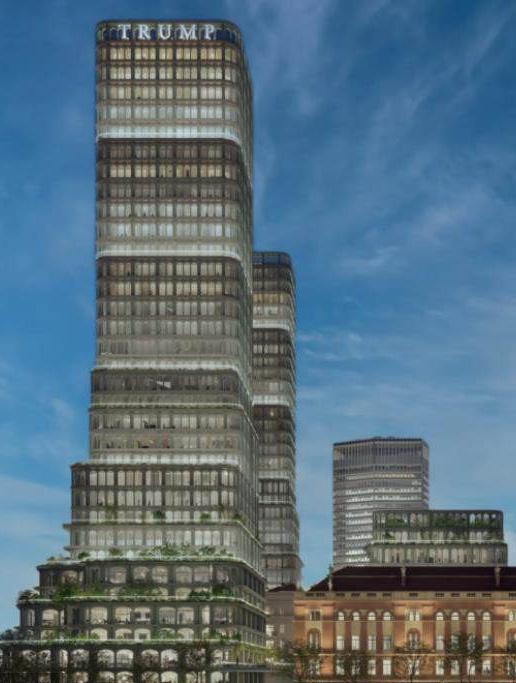
• Location: Vracar
• Number of apartments: 1500
• Move in date: TBD Apartment price: TBD
• Parking price: -
• Amenities: -
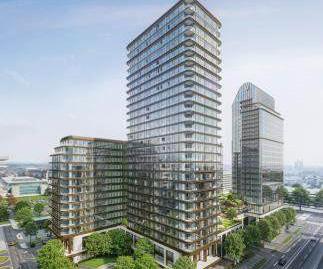
• Location: Novi Beograd
• Number of apartments: TBD (business apartments)
• Move in date: 2027
• Apartment price: from 7500 €/m²
• Parking price: 42 000 – 60 000 €
• Amenities: Private cinema, 24/7 concierge, service, gym, play & chill lounge, playground, private park, infinity pool, spa & wellness center, piazza, InterContinental hotel services.
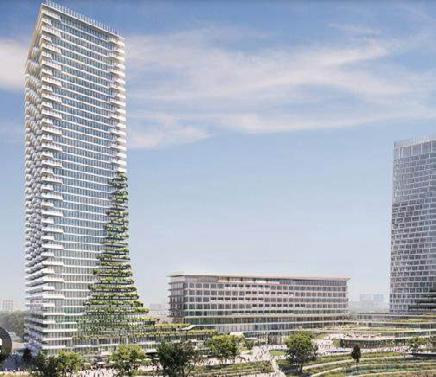
• Location: Novi Beograd
• Number of apartments: 525
• Move in date: TBD
• Apartment price: from 8000 €/m²
• Parking price: 50 000 €
• Amenities: Gym, Reception, Spa center, golf simulator, private cinema, pet station
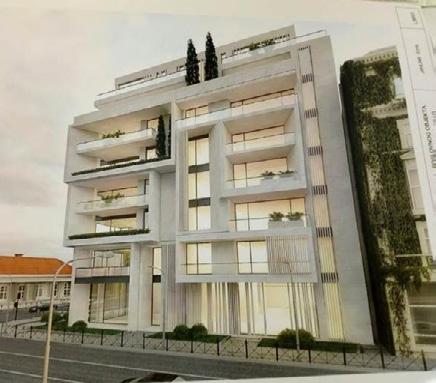
• Location: Dorcol
• Number of apartments: 17
• Move in date: -
• Apartment price: 13 200 – 16 500 €/m²
• Parking price: -
• Amenities: Gym, Reception, Spa center

• Location: Vracar
• Number of apartments: 27
• Move in date: October 2025
• Apartment price: 5900 – 6600 €/m² (4 apartments remained)
• Parking price: 50 400 – 54 000 €
• Amenities: Heating pumps, alarm system
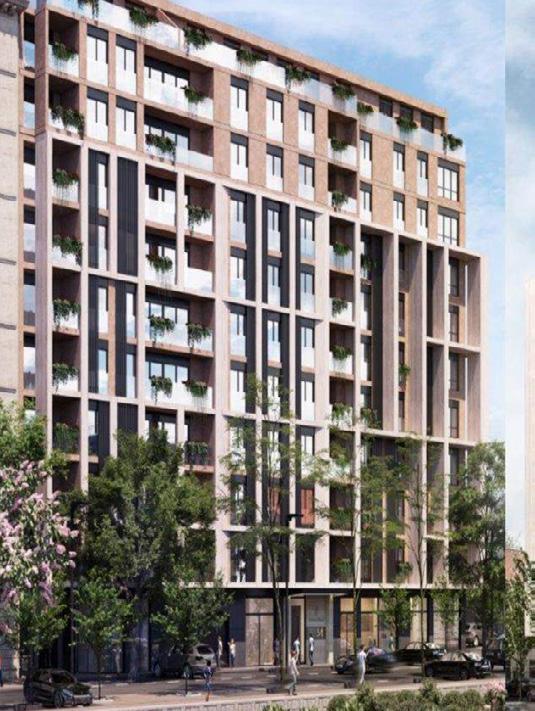
• Location: Pasterova St.
• Number of apartments: 63
• Move in date: 2025 July
• Apartment price: 5300 – 6300 €/m²
• Parking price: 45 000 – 65 000 €
• Amenities: Heat pumps, Smart home system, reception; without storage space

• Location : Dedinje
• Number of apartments: 12
• Move in date: 2025 March
• Apartment price: 6593 €/m²
• Parking price: 20 000 – 40 000 €
• Amenities: -

• Location: Dedinje
• Number of apartments: 38
• Move in date: TBD
• Apartment price: 5820 – 6720 €/m²
• Parking price: 36 000 - 42 000 €
• Amenities: spa, gym, security 24/7

• Location: Dedinje
• Number of apartments: 8
• Move in date: Completed
• Apartment price: 6600 €/m² (1 apartment remained)
• Parking price: 140 000 € (for 3 parking spots)
• Amenities: Gym, Reception, Spa center, Swimming pool

• Location: Vracar
• Number of apartments: 35
• Move in date: -
• Apartment price: 5000 - 6000 €/m²
• Parking price: 45 000 €
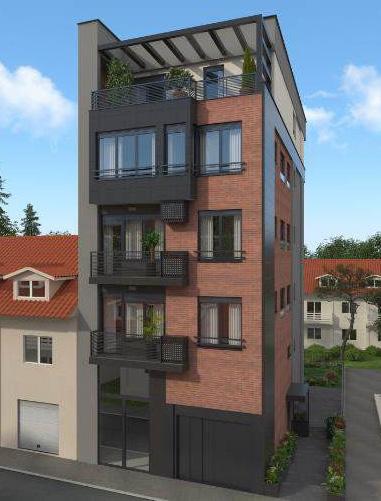
• Location: Vracar
• Number of apartments: 7
• Move in date: Completed
• Apartment price: 6000 €/m² (one apartment remained)
• Parking price: 36 000 €
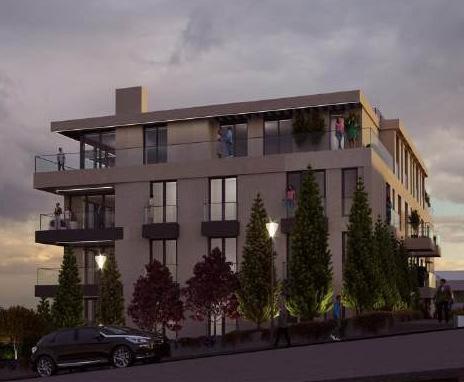
• Location: Dedinje
• Number of apartments: 21
• Move in date: Completed
• Apartment price: 5500 €/m² (one apartment remained)
• Parking price: 32 640 – 37 740 €
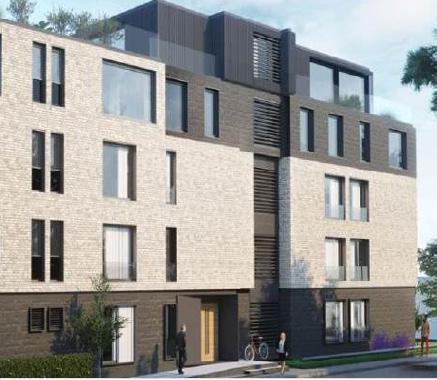
• Location: Vracar
• Number of apartments: 12
• Move in date: 2026 September
• Apartment price: 4900 – 5300 €/m²
• Parking price: 45 000 €

• Location: Vracar
• Number of apartments: 10
• Move in date: 2026 September
• Apartment price: 4900 - 5300 €/m²
• Parking price: 45 000 €
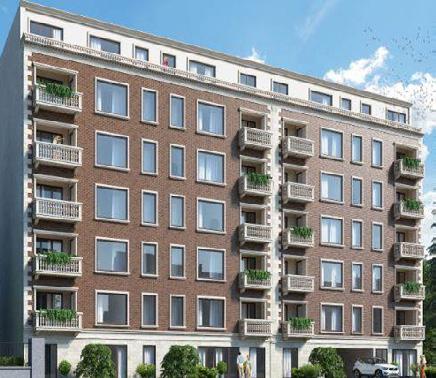
• Location: Vracar
• Number of apartments: 8
• Move in date: August 2025
• Apartment price: 4500 - 4600 €/m²
• Parking price: 40 000 €
• Amenities: -

• Location: Vracar
• Number of apartments: 11
• Move in date: fall 2025
• Apartment price: 4800 €/m²
• Parking price: 33 000 €

• Location: Novi Beograd
• Number of apartments: 203
• Move in date: July – December 2026
• Apartment price: 3800 – 4700 €/m²
• Parking space: 31 600 - 39 600 €
• Amenities: Reception, professional 24/7 security and facility management, private courtyard, children playground, smart-ready systems, electric vehicle charging, private storage units, apartments with private pool or private garden

• Location: Dedinje
• Number of apartments: 57
• Move in date: 2026 March
• Apartment price: 4180 – 4950 €/m²
• Parking price: 36 000 €
• Amenities: fitness center, smart home system, children playground, solar charging benches
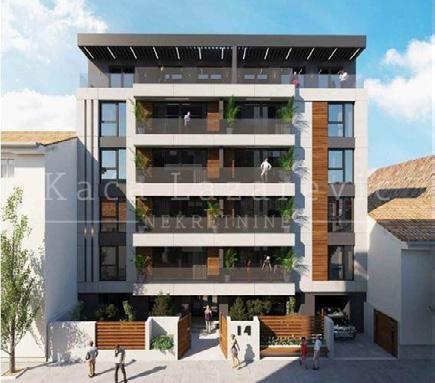
• Location: Vracar
• Number of apartments:
• Move in date: beginning of 2026
• Apartment Price:
• Parking space:
• Amenities: -










• Location: Vracar
• Number of apartments: -
• Move in date: 2027
• Apartment price: 4200 – 4560 €/m²
• Parking price: 23 100 €

• Location: Palilula
• Number of apartments: 15
• Move in date: 2026 March
• Apartment Price: 4180 - 4400 €/m² (one apartment remained)
• Parking space: 42 000, 48 000, 54 000 €
• Amenities: -
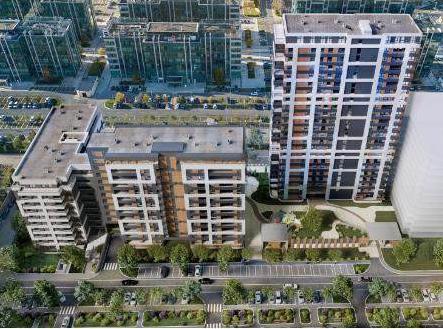
• Location: Tadije Sondermajera St.
• Number of apartments: 375 Move in date: 2025 July
• Apartment price: 3600 – 4150 €/m²
• Parking price: 27 000 – 31 000 €
• Amenities: Smart Home system, 24/7 reception, card access, video surveillance, private park
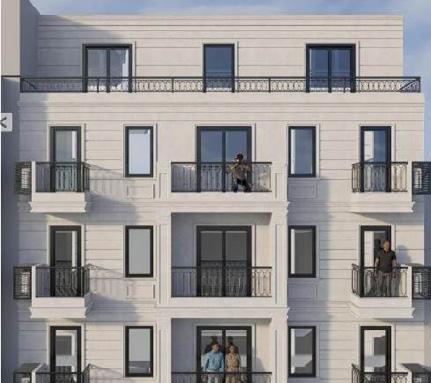
• Location: Zvezdara
• Move in date: -
• Apartment price: 4200 - 4500 €/m²
• Parking price: 36 000 € Amenities: -

• Location: Dedinje
• Number of apartments: 5
• Move in date: 2024 April
• Apartment price: 4500 €/m² (1 115 000 – 1 386 000 €)
• Parking price: Included in the total price of the apartment
• Amenities: -



• Location: Dorcol
• Number of apartments: 459
• Move in date: 2028
• Apartment price: 4320 €/m²
• Parking price: 33 000 €
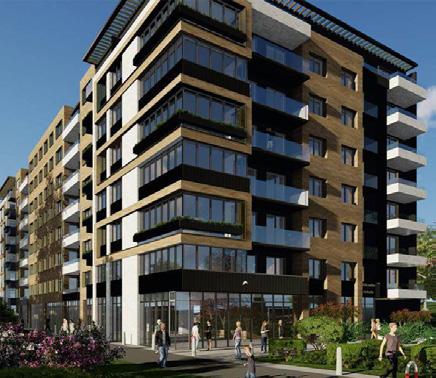
• Location: Zemun
• Number of apartments: 19
• Move in date: August/September 2025
• Apartment price: 3300 – 4180 €/m²
• Parking price: 21 600 – 26 400 €
• Amenities: Swimming pool, Spa center, Gym


• Location: Dimitrija Tucovica St.
• Number of apartments: 62
• Move in date: 2025
• Apartment price: 4300 – 4350 €/m²
• Parking price: 36 000 – 39 600 €
• Amenities: Intercom with video surveillance, alarm system, built-in split system air conditioner
• Location: Djordja Stanojevica St.
• Number of apartments: 556
• Move in date: Q1 2027
• Apartment price: 4200 – 5000 €/m²
• Parking price: 24 000 - 37 000 €
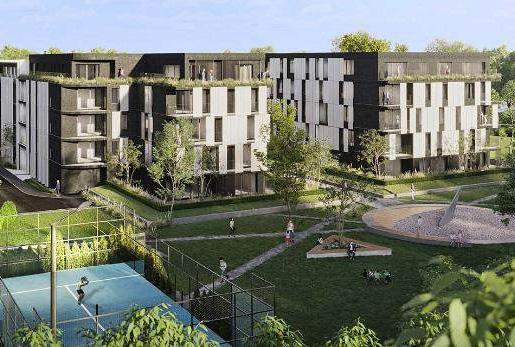
• Location: Tosin bunar
• Number of apartments: 279
• Move in date: 2026 spring
• Apartment price: 4070 – 4510 €/m²
• Parking price: 18 000, 22 000, 24 000 €
• Amenities: Swimming pool, Spa center, Gym

• Location: Partizanske avijacije St.
• Number of apartments: 280
• Move in date: 2025
• Apartment price: 3300 €/m²
• Parking price: 24 000 €

• Location: Vojvode Stepe St.
• Number of apartments: 127
• Move in date: 2025 January
• Apartment price: 2970 – 3600 €/m²
• Parking price: 22 000 – 26 000 €
• Amenities: Swimming pool, market in the building, spa, gym

• Location: Airport City
• Number of apartments: 480
• Move in date: 2027
• Apartment price: 3520 – 4070 €/m²
• Parking price: 26 400 – 28 800 €
• Amenities: Renowned hospitality facilities, fitness center, kindergarten, chargers for electric vehicles



• Location: Novi Beograd
• Number of apartments: 146
• Move in date: 2025 July
• Apartment price: 3410 €/m²
• Parking price: 25 500 – 40 800 €
• Location: Crveni krst
• Number of apartments: 51
• Move in date: 2025 September
• Apartment Price: 3000 – 4000 €/m²
• Parking space: 36 000 - 43 000 €
• Amenities: -
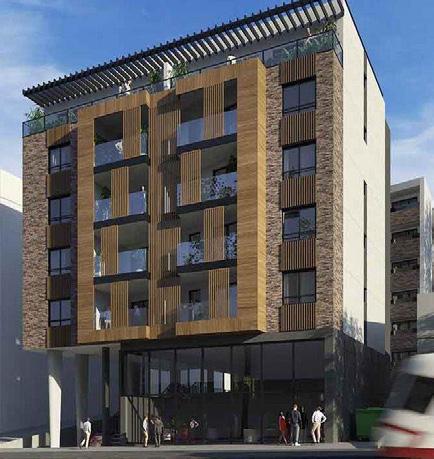
• Location: Banovo Brdo
• Number of apartments: 36
• Move in date: Completed
• Apartment price: 3300 €/m² (one apartment remained)
• Parking price: 16 800 €
• Amenities: -



• Location: Zemun
• Number of apartments: 27
• Move in date: 2025 May
• Apartment price: 3392 €/m²
• Parking price: 19 800 – 22 000 €
• Location: Banovo Brdo
• Number of apartments: 900 Move in date: 2025 May
• Apartment price: 3300 - 3500 €/m²
• Parking price: 25 000 – 28 000 €
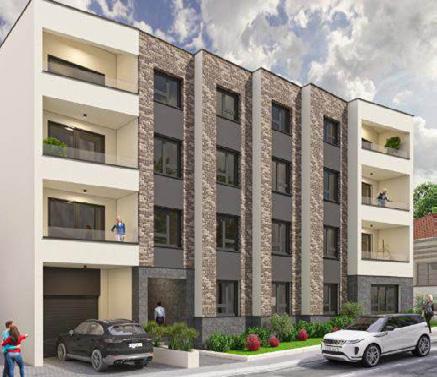
• Location: Dedinje
• Number of apartments: 14
• Move in date: Completed
• Apartment prices: 3500 €/m²
• Parking price: 26 000 €

• Location: Vracar
• Number of apartments: 21
• Move in date: end of 2024
• Apartment prices: 4560 €/m² (one apartment remained)
• Parking price: 23 100 €

• Location: Zemun
• Number of apartments: 1434
• Move in date: August 2023
• Apartment price: 2760 – 3240 €/m²
• Parking price: 14 850 – 15 950 €

• Location: Zvezdara
• Number of apartments: 317
• Move in date: 2027 May
• Apartment price: 2800 - 2960 €/m²
• Parking price: 19 800 – 28 500 €
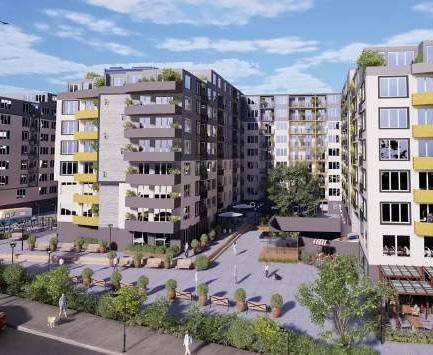
• Location: Vozdovac
• Number of apartments: 384
• Move in date: 2027
• August Apartment price: 3264 €/m²
• Parking price: 20 000 – 25 000 €
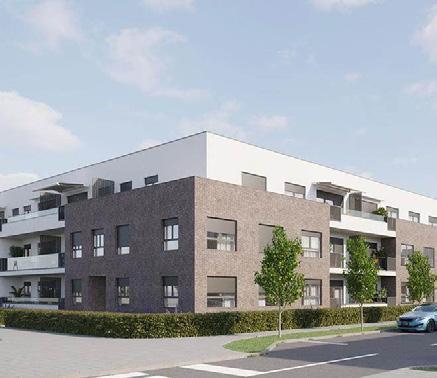
• Location: Magelanova St.
• Number of apartments: 168
• Move in date: 2024
• Apartment price: 2266 – 3063 €/m²
• Parking price: 17 000 – 26 000 €
• Amenities: Non-standard ceiling heights up to 2.9 m; apartments with smaller areas have gardens
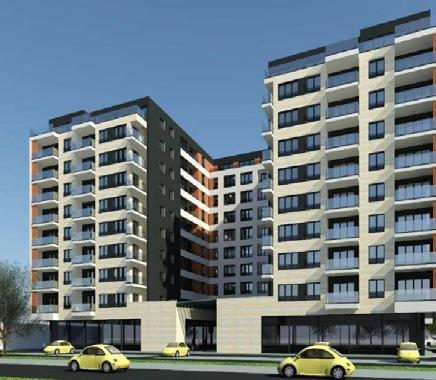
• Location: Karaburma
• Number of apartments: 157
• Move in date: December 2026
• Apartment price: 2860 – 3520 €/m²
• Parking price: 15 600 – 28 800 €


IRENA TRIFUNOVIĆ
Corporate Communications Director, MaxBet
Modern companies face challenges that go beyond the scope of traditional business. Today, success is measured not only by profit, but also by the impact organisations have on society and the environment. In this context, strategic communication becomes the key to
understanding, building trust, and sustaining reputation. Irena Trifunović reveals how the company shapes its values through socially responsible activities and how these messages are conveyed across all levels of the business. In an interview with Diplomacy & Commerce, she discusses linking local practices with global ESG frameworks, the role of communications in building trust, and why CSR is not an add-on but an integral part of brand identity.
Irena Trifunović on the values that push brand boundaries
AT MAXBET, CSR IS NOT A DEPARTMENT’S JOB – IT’S A COMPANY-WIDE CULTURE LIVED AND PRACTISED EVERY DAY.
health, sport, and women’s empowerment – from the voluntary blood donation campaign “Life is Blood” to planting over 6,000 trees across Serbia and the region. In the area of health, in addition to blood donations, we also support healthcare institutions through equipment donations.
What are the key areas in which MaxBet applies the principles of social responsibility, and how is this strategy further developed through integration into Flutter Entertainment’s global ESG goals?
At MaxBet, social responsibility is not just a strategic priority but also a personal value shared by every member of our team. In recent years, we have implemented numerous initiatives in the fields of environmental protection,
As part of Flutter Entertainment, the world’s leading betting and gaming group, MaxBet integrates local values into the global ESG platform through its four pillars: Play Well, Do More, Work Better, and Go Zero. Our contribution is measured by the number of activities carried out, the volunteers involved, and the sustainability of results, positioning us as a leading local player within the global sustainability standard. The synergy between our local identity and global goals is not merely declarative – it is implemented daily through operational procedures, reporting tools, and performance measurement methodologies systematically developed by Flutter. This approach
enables continuous learning and the adaptation of strategies to meet the real needs of both the community and employees, further reinforcing responsibility as a fundamental part of our corporate culture.
How does the CSR strategy influence the company’s reputation and brand?
The CSR strategy significantly shapes the company’s identity –how we are perceived by customers, partners, and the wider public. It is not there merely to create a positive image, but to justify that image through concrete actions. We always consider a long-term approach that is both consistent and transparent, and the key indicator that we are on the right track is the trust we enjoy in the communities where we operate. A company’s reputation is built over time, but can be quickly damaged if the values we promote do not align with what we actually do in practice. This is why it is essential for us that every campaign we launch has a measurable and documented impact.
CSR is not an addition to the brand – it is its foundation. Consistency and openness create a brand recognised for its voice, values, and actions, not just for its promotional messages.
What are the most significant socially responsible projects MaxBet has implemented in recent years?
For us, the most important socially responsible projects are not the most visible ones, but those that have touched people the most. The true value of CSR is not in the announcement but in the impact that remains long after the spotlight fades.
Life is Blood is a campaign we at MaxBet are particularly proud of – not because it has been running since 2017, because of the figures showing that more than 74 voluntary blood donation drives have been organised across Serbia and the region, collecting over 5,000 units of blood that could mean up to 15,000 lives saved – but because our employees have embraced it as a personal mission. This culture of solidarity and humanity is no longer just an initiative; it has become a practice.
The same is true for our environmental projects. Planting 6,000 trees – including 2,000 black pines near Kraljevo, 2,000 spruces near Niš, 2,000 oaks near Belgrade, and
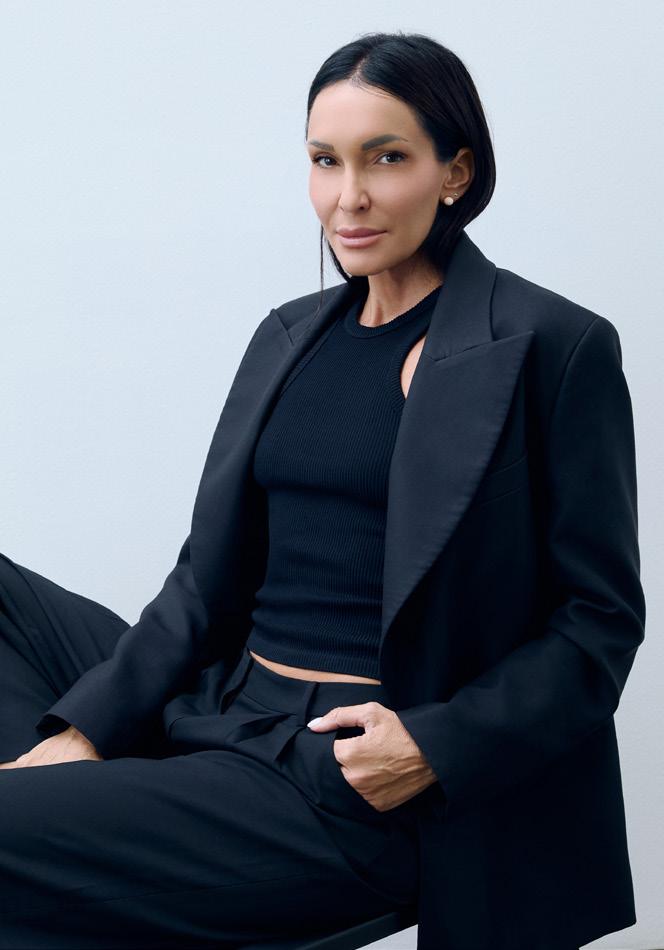
TRUST IS BUILT WHEN VALUES ARE MATCHED BY CONSISTENT, TRANSPARENT ACTION THAT LEAVES A MEASURABLE IMPACT.
a final planting of 20 maples in Košutnjak – was not merely an act of environmental protection but an act of unity. Our teams participated alongside players from FK Partizan and FK Vojvodina. It was not a PR event, but a moment where sport and nature breathed together, as these trees will produce enough oxygen annually for over 3,000 people.
One of the most emotional campaigns for us was last year’s Movember, dedicated to men’s health. We distributed 1,000 vouchers for free check-ups and ultrasound scans, joined by players from Partizan, Vojvodina, and Radnički Niš. Their participation helped the topic gain support and visibility.
As part of Flutter’s ESG pillar, Play Well, this campaign went beyond corporate duty – it was a reminder that leadership also means caring about issues less
life of the clubs, from upgrading equipment to promoting healthy habits and local sporting values. We are not just a sponsor; together with the clubs, we create initiatives that go beyond the boundaries of commercial cooperation. When we supported the refurbishment of Partizan’s stadium changing rooms, we involved the fans too, because we know that sports infrastructure must be built collectively.
In the area of women’s empowerment, our approach is perhaps the most visible, yet also the most personal. The Strength of a Woman in Balance initiative is part of both our internal and external activities, launched not because it is a trend, but because it is necessary. We organised meetings, open discussions, and support formats covering topics from professional development to mental well-being – all with women from our teams, not from external PR narratives. At MaxBet, more than 60% of employees are women, but for us, that figure has never been a target metric – it is the result of a system in which ability is recognised, not gender. For us, CSR is not just about donations, but about fostering a culture in which women, sport, and the community are all part of the same circle of responsibility.
What makes CSR authentic, and how do you build trust within the company to ensure these activities are genuinely sincere and not just part of a reputation strategy?
visible in the public eye. Play Well means that a business cannot remain neutral to the real lives of its customers and employees. And if through a single campaign you manage to steer even one life towards better health, you have already achieved a great deal.
Can you share more examples of MaxBet campaigns that have had a significant impact on the local community?
The campaigns we develop at MaxBet are rooted in an understanding of local identity, with sport and women’s empowerment being not just symbolic gestures, but part of our everyday reality. We believe in support that lasts. In the field of sport, MaxBet is a partner that invests not only funds but also meaning. Through our support for FK Partizan, FK Vojvodina, and FK Radnički Niš, we actively participate in the
Authenticity starts from within – from the values we share as a team. At MaxBet, there is no single department “responsible” for CSR; the entire company lives those values. From top management to colleagues in operations, everyone participates, volunteers, proposes, and implements projects. Transparency is key, which is why we regularly communicate results, publish stories, and give space for people from the community to speak about the impact. Trust is built over the years but can be lost in a day, which is why our strategy is long-term, structured, and adaptable. Values such as empathy, solidarity, and respect for diversity are not phrases, but operational principles. In everything we do, the message must be backed by action, and when that happens, there is no doubt about sincerity, because the community’s trust validates every step we take.

A journey through three decades of conflict, told through the lens of a Belgrader who stood where history was breaking
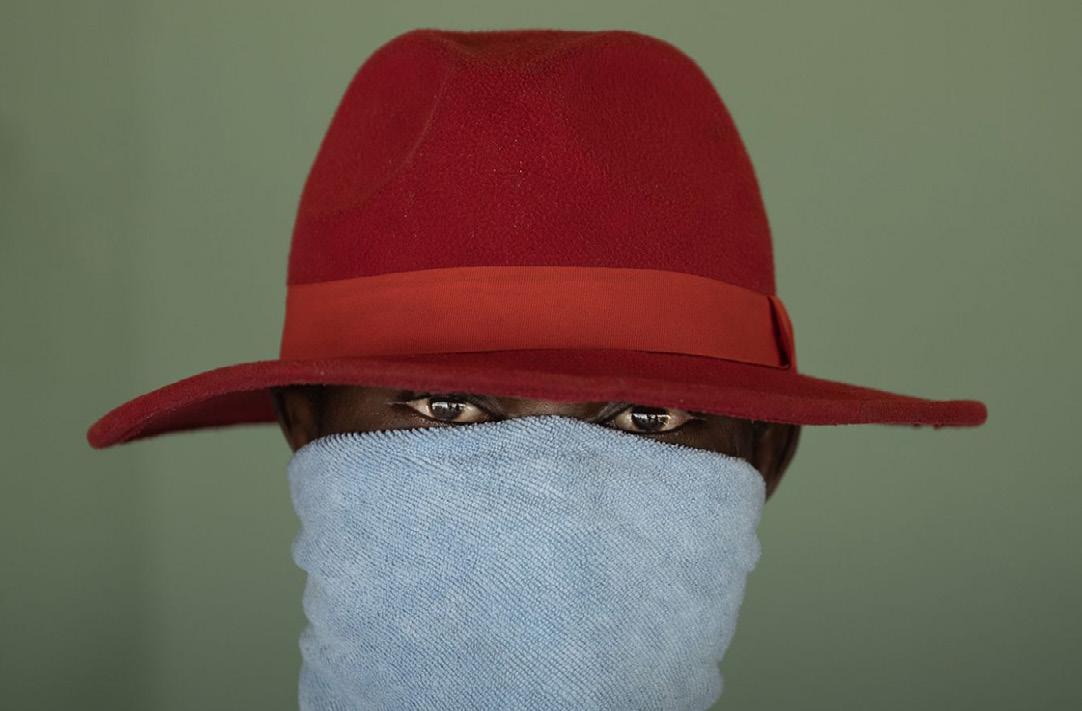
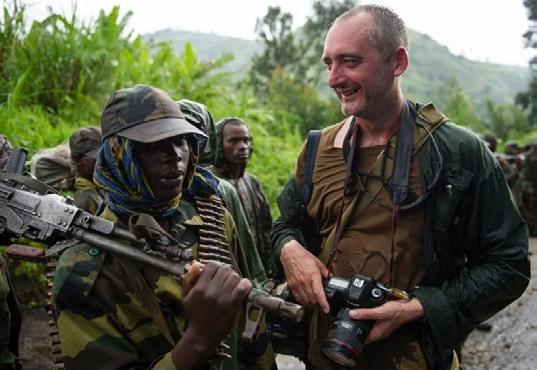
– “actually, I have”
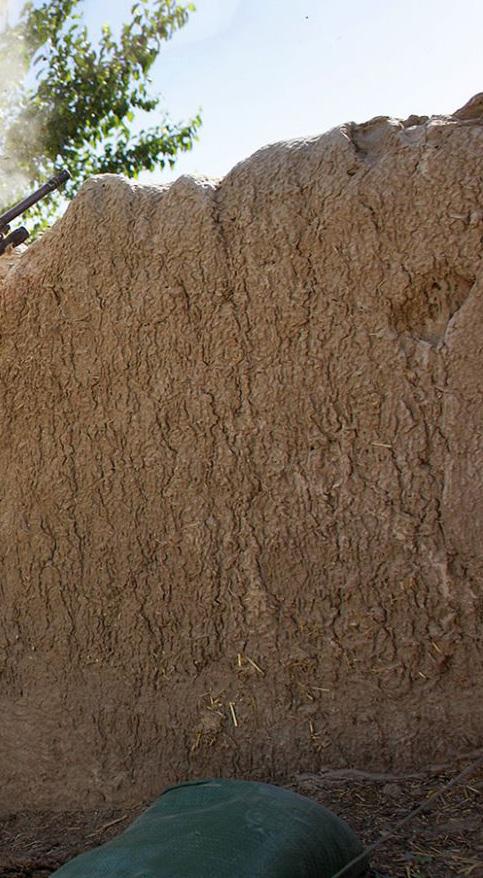
Until the end of October in Dubrovnik, you can see a retrospective of Goran Tomašević, a photographer who was not considered good enough by the Belgrade daily where he freelanced to be offered a permanent position, yet was good enough to win the Pulitzer Prize in 2019 for a photograph he took for Reuters in Honduras.
Just a few steps from the idyllic Stradun, in one of its side streets, lies the War Photo Limited gallery. On the first floor is an exhibition of photographs taken during the civil war in Burma. The second floor hosts the exhibition TheEndofYugoslavia, featuring some of the most famous works of Ron Haviv and other renowned photographers who covered Croatia, Bosnia and Kosovo in the 1990s.
There is also an impressive retrospective of Serbian photographer Goran Tomašević (b. 1969), who has spent the past 30 years travelling to war zones and areas of conflict, from Haiti to Syria and Libya, and from the Central African Republic to Burundi. Working for the Reuters news agency for more than 20 years, he has documented conflicts across the globe through his lens. He has also photographed the Sydney 2000 Olympic Games and the 2006 FIFA World Cup in Germany. Still, it is his images from crisis zones around the world that have won him all the most prestigious photography awards.

Tomašević began his professional career in 1991, working for the daily newspaper Politika. He soon became a freelance contributor to Reuters, and also worked for Beogradska hronika. He photographed the wars that followed the breakup of Yugoslavia, travelling to Bosnia and Croatia. He officially joined Reuters in 1996, where he remains to this day. From 1997, he covered the war in Kosovo and the anti-Milošević protests in Belgrade. During the threemonth NATO bombing of Yugoslavia in 1999, Tomašević was the only photographer working for the foreign press who spent the entire conflict in Kosovo.
“The danger cannot be measured – wherever there is shooting, it’s never easy, and there have been many dangerous moments. The first thing I learned was in Kosovo and Metohija, where it was extremely intense. ‘WhyamIhere,ifnottotakepictures?IfI’m not photographing, then I have no reason to be in a war zone.’ It’s very important to stay calm, because if you’re not calm, you’re
dangerous to yourself and to others – and that is the ultimate secret of this profession,” says Tomašević.
After those events in the Balkans, Tomašević stopped working for Politika, and Reuters sent him to the Middle East. He moved to Jerusalem and, from 2002 to 2006, was Reuters’ correspondent based there, and from 2006 to 2012, he was stationed in Cairo. He covered the Second Intifada. During the 2003 US-led invasion of Iraq, his photograph of an American marine watching the toppling of Saddam Hussein’s statue became one of the most iconic images of the war. All the world’s leading newspapers ran it on their front pages, setting a record with more than 160 consecutive front-page appearances.
Tomašević’s photograph of a US sergeant being wounded in Afghanistan became a landmark image in American war history. It is now housed in the War Photography Museum in the United States. After taking the picture, Tomašević put down his camera and helped the wounded sergeant.
“He lost consciousness from the blast, and when he came to, he asked me for a cigarette and to see the photographs. When my boss, Mr Steve Crisp, saw what I had captured, he called me and said: ‘Get back there!’” Tomašević recounted.
In 2006, Tomašević moved to Cairo, where he was at the heart of Reuters’ coverage of the Arab Spring. In Libya, his photograph of a fireball launched after an air strike on pro-Gaddafi fighters became an icon of the Libyan war, appearing on more than 100 front pages worldwide. His images of rebel fighters battling proAssad forces among the ruins of Aleppo and Damascus during the Syrian Civil War also won international acclaim, as did his coverage of the bloody siege of a shopping mall in Nairobi, Kenya.
Tomašević has worked in Reuters bureaux in Jerusalem, Cairo and Nairobi. He now lives in Istanbul and is Reuters’ chief photographer. His work has been recognised with many prestigious international awards. He was named Reuters Photographer of the Year a record four times (2003, 2005, 2011 and 2013) and won the agency’s Photograph of the Year award in 2008. In 2009, the Society of Publishers in Asia, based in Hong Kong, awarded him the Prize for Excellence in News Photography.

In 2014, he won first prize at the World Press Photo. He received the China International Press Photo Award in 2011, the London Frontline Club Award in 2012, and the Japan Days Award in 2013. In 2005, he won the award for Best in Photojournalism in the Portrait and Personality category. The Guardian named Goran Tomašević the best news photographer in the world in 2013, while the International Business Times UK named him its Agency Photographer of the Year for 2016.
In 2019, Goran Tomašević won the Pulitzer Prize for a poignant photograph showing a rooster walking past the body of a boy killed in a gang shootout in Honduras. He was recognised for “a vivid and startling visual narrative that powerfully conveys the significance, desperation and sadness of migrants as they travelled to the United States from Central and South America.” He had previously been a Pulitzer Prize finalist in 2014 for his photographs from Syria.
The award-winning photograph was taken as part of a photo project documenting the
wave of migrants from Central and South America heading to the United States. This series was shot in August 2018 in San Pedro Sula, the city with the highest murder rate in the world. Tomašević visited Honduras twice to capture, through his lens, a society ruled by drugs, also photographing the criminal gangs that control much of Latin America.
In June 2018, he travelled for the first time to Mexico and Honduras, where he persuaded criminals to agree to be photographed – a task far from easy. However, he was not satisfied with the results, so he returned in August. The award-winning image was taken during his second stay in Honduras, after a clash between two rival gangs fighting over territory for cocaine distribution.
If your travels take you to Dubrovnik, you can see the retrospective exhibition of Goran Tomašević until 31 October this year.
On my way to Kamenice for dinner, listening to the singing of a klapa group hired by the Dubrovnik Tourist Board to create a “Mediterranean atmosphere” in the old city at
night, I thought about the quiet poetry of seeing, here on the Stradun – which in 1991 was shelled from surrounding hills by Montenegrin JNA reservists and the troops of Božo Vućurević – an exhibition by a Belgrader who has devoted his life to reporting from precisely such places. And Dubrovnik, large enough that despite its traumatic past and the current “rightward shifts” in Croatian society, has no problem with the “geographical origins” of the author of these photographs.
Returning from Dubrovnik, I went straight from the airport to the King Charles III Birthday Reception at the British Ambassador’s Residence in Belgrade. Still under the impression of the exhibition, I spoke with several colleagues about Tomašević’s powerful work. “When Politika was deciding whether to hire him permanently, it was concluded that he wasn’t good enough for them, and instead they hired another colleague, close to the then ruling party,” one colleague, a witness to those events, told me.
Goran then secured a permanent position at Reuters and won a Pulitzer. A small measure of satisfaction for the absence, in his biography, of the line stating he had been permanently employed at Serbia’s oldest daily newspaper.

–
it is a condition for the survival of the packaging industry
A unified approach, stronger regulation, and partnership across all sectors are essential for meeting EU environmental targets and safeguarding the future of serbia’s packaging industry.
JELENA PETLJANSKI
The newly elected President of the Alliance for Circular Packaging and Sustainability and Public Affairs Manager at Ball Corporation for Central and Eastern Europe
We spoke with Jelena Petljanski, the newly elected President of the Alliance for Circular Packaging and Sustainability and Public Affairs Manager at
Ball Corporation for Central and Eastern Europe. In her dual role, she is set to lead industry efforts towards more sustainable packaging solutions and stronger circular economy practices across the region.
You have taken on the role of President of the Alliance for Circular Packaging. What are your first steps and priorities? First of all, I would like to thank you for the trust placed in me.
the Ministry of Environmental Protection, in order to accelerate the transition towards systems that support recycling and boost the competitiveness of our industry in the European market.
How does the new EU Packaging and Packaging Waste Regulation (PPWR) affect Serbia?
The PPWR, the new EU regulation, aims to promote a circular economy and reduce the negative environmental impact of packaging. It replaces the existing Packaging Directive and introduces significantly stricter requirements for design, reuse and recycling. Serbia’s alignment with the new European Regulation is a prerequisite for
WITHOUT SYNERGY BETWEEN THE STATE, INDUSTRY, AND RECYCLERS, IT WILL BE DIFFICULT TO MATCH THE EU’S PACE
our products to remain competitive on the EU market. Simply put – it can have an impact on exports.
One of the key changes within the PPWR is the mandatory introduction of minimum percentages of recycled content in packaging – for example, contact-sensitive PET packaging will be required to contain at least 30% recycled material by 2030, and as much as 50% by 2040. Packaging that cannot be recycled at a rate of at least 70% will be removed from the EU market. The new rules also specifically address paper packaging: a nonpaper content of more than 5% can compromise the quality and efficiency of recycling.
The Alliance today brings together companies that employ thousands of people and form the backbone of the packaging industry in Serbia. My initial steps are focused on strengthening cooperation with state institutions, enhancing dialogue with the recycling industry, and initiating concrete measures to align domestic regulations with EU standards. One of the priorities is a proposal to establish continuous dialogue in cooperation with
How can packaging design be encouraged to be more recycling-friendly?
Regulations such as the PPWR and CBAM set clear rules for environmentally friendly design and fair trade. CBAM is the EU system that charges the cost of carbon emissions on imported goods, ensuring that all products, domestic and foreign, pay equal environmental costs and encouraging the reduction of pollution. From 2026, Serbian companies exporting to the EU will have to provide
accurate emission data through the MRV system (the mechanism for monitoring, reporting and verifying CO2 emissions from production processes – essential for exporting to the EU under CBAM rules). Without it, exports will become more expensive or more difficult.
Alongside CBAM, legislation should also include modulation of EPR fees, clear labelling of recyclability, and incentives for packaging with higher recycled content. The state’s role is crucial in making such rules mandatory rather than optional.
What is needed for Serbia to keep pace with EU targets by 2030?
The Packaging Waste Law in Serbia should be aligned with the PPWR and existing strategies revised, but above all, finally implemented. A new and appropriate legal framework is needed to regulate access to recyclable materials, accurate reporting on the quantity of packaging placed on the market (currently 30% more packaging is placed than reported, according to an independent Eunomia study), and far greater availability of recycling services – currently used by only 28% of citizens, with less than 16% of waste being recycled (the EU average is 50%).
Key measures include strengthening extended producer responsibility (EPR), monitoring EPR organisations through an independent body, introducing incentive fees for recyclable design, ensuring nationwide coverage of collection services, registering products and establishing a National Producers Register, separate collection of packaging (in two streams, not “all in one bin”), and mandatory sorting before waste incineration, particularly in facilities such as Vinča. All these measures are essential for compliance with EU rules and for protecting the environment.
How can the waste loop be closed in the full sense of a circular economy?
Closing the loop begins with the introduction of mandatory primary sorting, the separation of municipal waste before any potential incineration, and the establishment of a deposit return system. Waste can – and must – become a resource, but only if it is properly treated from the very start, beginning with separation.

CIRCULARITY IS NOT JUST ABOUT SUSTAINABILITY – IT IS THE KEY TO THE INDUSTRY’S SURVIVAL ON THE EU MARKET.
How do you assess the readiness of the domestic industry for the transition to circularity?
The domestic packaging industry demonstrates a high level of readiness to shift to circular models, particularly the companies within the Alliance, which already operate in line with European standards. Our goal is for the entire system in Serbia to follow this course – because circularity is not only a matter of sustainability, but also the key to the survival of an industry that places a significant part of its production on the European Union market.
Will domestic legislation be able to keep pace with the EU?
The Ministry has indeed announced some steps, but the business sector expects a clearer plan – including timelines, deadlines, and the formation of a working group involving all stakeholders: the packaging industry, the beverage industry, retail chains, the recycling sector, municipal companies,
and consumer organisations. Without synergy, it will be difficult to keep up with the pace set by the EU. That is why we insist on partnership and transparency.
What changes can we expect in the coming years?
The most effective solution, recognised by the EU itself, is the introduction of a deposit return system. Through the media, Serbia has announced that by 2027 it will introduce deposits for PET packaging and cans, but the packaging industry advocates expanding this system to also include glass and multi-layer cardboard. A deposit return system and systematic primary sorting are essential to meeting the required targets.
What are the key factors influencing the achievement of environmental protection goals?
Success in environmental protection depends on aligning domestic laws with EU legislation, particularly through Chapter 27.
The key factors are political will, available financial mechanisms, continuous education, and the development of cooperation among stakeholders – partnerships. These goals must serve the public interest and contribute to sustainable development, rather than individual or group interests.
And finally – what is the role of the Alliance for Circular Packaging today?
The Alliance was established because we recognised that without cooperation between companies producing packaging, the industries placing packaging on the market, recyclers, and the state, there would be no systemic solutions capable of addressing the challenges ahead. We began with a focus on deposit systems, but now we are looking at the bigger picture: material availability, quality standards, and market competitiveness. We want to share our long-standing experience, knowledge, and practices with the relevant institutions so that, as a country, we can keep pace not only with trends but also with new environmental standards, and so that, as a packaging industry, we can not only survive but continue to be one of the important export sectors of the national economy.

12–23 SEPTEMBER 2025
Belgrade, Serbia
One of the most significant film festivals in the region, FEST, returns to Belgrade with a special September edition in 2025.
The International Film Festival will take place from 12 to 23 September, bringing together renowned international and domestic filmmakers, with premieres, competition programmes, and a rich side programme that promotes film art and Serbia’s cultural scene. The new timing ensures better alignment with European festivals, promising an even higher-quality and more diverse programme for film lovers of all generations.
Screenings and accompanying events will be held in cultural centres and cinemas across Belgrade, once again turning the Serbian capital into the film hub of the Balkans this September.

18–20 SEPTEMBER 2025
Dom Omladine, Belgrade
Dom Omladine launches the first Belgrade Rock Festival
As an institution that has, for over six decades, remained a stronghold of rock, blues and other guitar-driven genres in the Serbian capital, Dom Omladine Belgrade is launching a festival that proudly carries its name: the Belgrade Rock Festival.

SEPTEMBER 2025
September in the spirit of tradition, music and gastronomy
Throughout September, Serbia will host a series of cultural and gastronomic events celebrating tradition, folklore, and local flavours. Belgrade will welcome
In its new autumn slot, the festival will last one day longer and bring an even richer programme, featuring concerts by some of the most prominent domestic bands. From 18 to 20 September, in the intimate atmosphere of the city’s best concert hall, audiences will enjoy an unforgettable music experience delivered by nine bands, including audience favourites such as Texas Flood, Kralj Čačka, Kanda, Kodža i Nebojša, Del Arno Band, Kojot and Ničim Izazvan.
the Medieval Festival at Kalemegdan from 5 to 7 September, while Tamburica Fest in Novi Sad will showcase tamburitza music from 11 to 14 September. Food lovers can enjoy the Flavours of Vojvodina Festival on 13 and 14 September in Novi Sad, while agricultural tradition will be highlighted at the Corn Festival in Torda from 19 to 21 September. The season will conclude with the Wine Festival in Horgoš, scheduled for 26 and 27 September.


